technoutopianism
description: ideology based on the premise that advances in science and technology could and should bring about a utopia
157 results
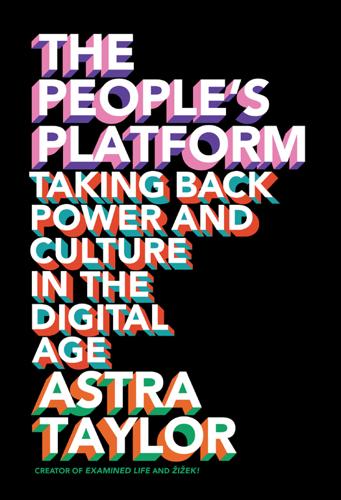
The People's Platform: Taking Back Power and Culture in the Digital Age
by
Astra Taylor
Published 4 Mar 2014
The challenge is to understand how power and influence are distributed within this mongrel space where professional and amateur combine. Consider, for a moment, Clay Shirky, whose back-flap biography boasts corporate consulting gigs with Nokia, News Corp, BP, the U.S. Navy, Lego, and others. Shirky embodies the strange mix of technological utopianism and business opportunism common to many Internet entrepreneurs and commentators, a combination of populist rhetoric and unrepentant commercialism. Many of amateurism’s loudest advocates are also business apologists, claiming to promote cultural democracy while actually advising corporations on how to seize “collaboration and self-organization as powerful new levers to cut costs” in order to “discover the true dividends of collective capability and genius and usher their organizations into the twenty-first century.34 The grassroots rhetoric of networked amateurism has been harnessed to corporate strategy, continuing a nefarious tradition.
…
However imprecisely the terms are applied, the dichotomy of open versus closed (sometimes presented as freedom versus control) provides the conceptual framework that increasingly underpins much of the current thinking about technology, media, and culture. The fetish for openness can be traced back to the foundational myths of the Internet as a wild, uncontrollable realm. In 1996 John Perry Barlow, the former Grateful Dead lyricist and cattle ranger turned techno-utopian firebrand, released an influential manifesto, “A Declaration of the Independence of Cyberspace,” from Davos, Switzerland, during the World Economic Forum, the annual meeting of the world’s business elite. (“Governments of the Industrial World, you weary giants of flesh and steel, I come from Cyberspace, the new home of Mind.
…
Motivation and resources, time and power—these are assets that are not evenly distributed, even if the Internet has removed many of the old barriers to entry. They are inequalities that we must take into account when we talk about the network’s “level playing field.” The desire to transcend earthly inequality has suffused discussions of the Internet for decades. Early techno-utopians long ago declared that even the atom was “past” and promised the “tyranny of matter” overthrown.1 The terrestrial and corporeal, they confidently predicted, would soon be abandoned for the weightless Web. Unencumbered by our fleshy selves and released from the material conditions that constrain them, everyone would be made equal by binary code, free to participate as peers on an open network.
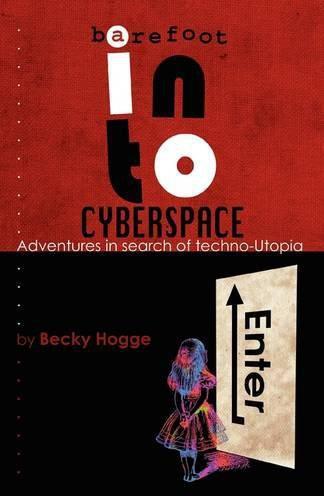
Barefoot Into Cyberspace: Adventures in Search of Techno-Utopia
by
Becky Hogge
,
Damien Morris
and
Christopher Scally
Published 26 Jul 2011
I had thought the web was where the children of the baby boomers got to have their own space, to play with their own ideas, away from the complex political legacy of gender equality and identity politics, of the cult of the individual and the advance of corporate “freedom”. But it turned out all we were doing was gardening in someone else’s Utopia. I ask Stewart if he would describe himself these days as a techno-Utopian. “The very concept of techno-Utopian”, he replies, “would be part of what we trend against. Because techno-Utopia says Brave New World. We, the technoids, know the future and are spelling it out for you. That’s what Utopia is. It’s there in Plato and it’s there in Thomas More. “Utopias in practice are invariably Dystopias.
…
Almost from the moment I started collecting material for this book, their story began to trespass on mine. By the end of the year – 2010 – in which the majority of this book was written, the culture I’d been a part of for almost a decade was headline news all over the world. It’s too early to tell what effect that will have on the techno-Utopian dream. All I can say is that it transformed this project from an exercise in cultural anthropology into something more like an adventure story. As a result, I had more fun writing this book than I could have imagined when I started it. I hope you enjoy reading it just as much. Becky Hogge, June 2011 * * * Chapter 1: Digging the command line I may as well not have bothered.
…
And one day he sent me the Whole Earth Review issue called ‘Is the Body Obsolete?’, with William Gibson’s articles and Hans Moravec and all these other people making the connection between cyberculture and counterculture. I must have been 16. This was completely transformational literature for me. Totally changed the way I thought about things.” Techno-Utopianism wasn’t the only legacy Cory took from Grindstone – he also got his first taste of the hypocrisy of the hippy generation. “The adults involved with Grindstone saw as part of their mission as being to create a second generation, and that’s why they did the youth camps, the kids’ camps,” says Cory.
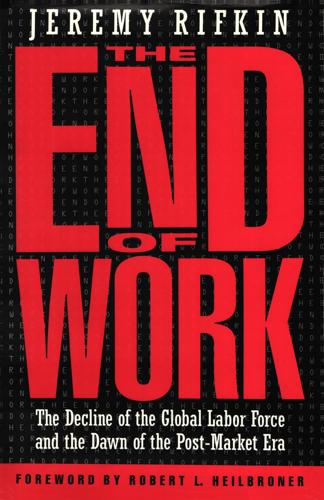
The End of Work
by
Jeremy Rifkin
Published 28 Dec 1994
Carlyle, Thomas, "Signs of the Times," Edinburgh Review 49, June 1829, pp. 439-459, reprinted in abridged version as "The Mechanical Age' in Clayre, A1asdair, ed., Nature and Industrialization: An Anthology (Oxford: Oxford University Press, 1977), pp. 229-231. 5. Segal, Howard, "The Technological Utopians," in Com, pp. 119-120; Segal, Technological Utopianism in American Culture (Chicago: University of Chicago Press, 1985), p. 20. 6. Howard, Albert, The Milltillionaire (Boston: 1895), p. 9. 7. Segal, "The Technological Utopians," in Com, p. 124. 8. Schindler, Solomon, Young West: A Sequel to Edward Bellamy's Celebrated Novel "Looking Backward" (Boston: Arena, 1894), p. 45. 9· Howard, p. 17· 10. Clough, Fred M., The Golden Age, Or the Depth of Time (Boston: Roxburgh, 1923), p. 34· 11.
…
The pneumatic underground, says one citizen of utopia, is "like a gigantic mill, into the hopper of which goods are being constantly poured by the trainload and shipload, to issue at the other end in packages of pounds and ounces, yards and inches, pints and gallons, corresponding to the infinitely complex personal needs of half a million people."12 All of these inventions, claimed the new technological utopians, would mean freedom from "all of the annoyances" of housekeeping and work. The goal of the new order was to use increasingly sophisticated technologies to provide "everything for comfort, economy, convenience and freedom from care that a corporate intelligence could think Of"13 Most of the technological utopians thought their visions of the future would be realized in the United States and elsewhere within one hundred years. They were convinced that science and technology would replace divine inspiration and intervention, creating a new secular theology more powerful than any conceived by the men of the Church.
…
Other titles were cast more in the commercial vein, suggesting a link with America's other great tradition of utilitarianism. They included Albert Howard's The Mill- 46 THE TWO F ACE S 0 F TEe H N 0 LOG Y tillionaire, Paul Devinne's The Day of Prosperity, and Harold Loebs Life in a Technocracy. 5 The technological utopians successfully melded the Christian notion of eternal salvation and the American utilitarian ethos into a new and powerful cultural synthesis. The idea that science and technology-harnessed by a nation of dedicated and faithful laborers steeped in the modern work ethic-would direct us into an earthly kingdom of great wealth and leisure continues to serve as a governing social and economic paradigm to the present day.

Tripping on Utopia: Margaret Mead, the Cold War, and the Troubled Birth of Psychedelic Science
by
Benjamin Breen
Published 16 Jan 2024
Hubbard and his ideas formed a shaky, treacherous rope bridge between the two sides of the Macy circle, the techno-pessimist and the techno-utopian. Like Bateson, he had a truly jaundiced view of psychiatry and of mainstream science and a well-developed fear of the Cold War military-industrial complex. But like Mead, he argued that anthropology and cybernetics could be welded together to forge a transformative “science of survival,” and that drugs had a part to play in it. Hubbard embodied many of Mead’s worst qualities, offering up a particularly simplistic and exaggerated form of techno-utopianism in his “shortcut” to mental health through drugs and hypnosis. In his distorted popularization of the Macy circle’s thinking, he showed how potent the allure of a new science of expanded consciousness could be in the era of the early Cold War—and how dangerously cultlike it could become.
…
To learn more about the intellectual and social threads linking the Macy circle to contemporary “digital utopians,” start with Fred Turner’s excellent books From Counterculture to Cyberculture: Stewart Brand, the Whole Earth Network, and the Rise of Digital Utopianism (Chicago: University of Chicago Press, 2010); and The Democratic Surround: Multimedia and American Liberalism from World War II to the Psychedelic Sixties (Chicago: University of Chicago Press, 2013). On the history of technological utopianism in the twentieth century, see William E. Akin, Technocracy and the American Dream: The Technocrat Movement, 1900–1941 (Berkeley: University of California Press, 1977); Howard P. Segal, Technological Utopianism in American Culture (Syracuse, NY: Syracuse University Press, 2005); and Richard Stites, Revolutionary Dreams: Utopian Vision and Experimental Life in the Russian Revolution (Oxford: Oxford University Press, 1988); on the history of Silicon Valley, see Margaret O’Mara, The Code: Silicon Valley and the Remaking of America (New York: Penguin, 2020); and Malcolm Harris, Palo Alto: A History of California, Capitalism, and the World (New York: Little, Brown, 2023), which touches on the LSD research around Stanford in the 1950s and early 1960s.
…
There were good reasons for this mass forgetting: abuses of medical ethics, devil’s bargains with militarism, and disillusionment with utopian promises. But before it became a failed utopia, it was a beautiful dream. Restoring it to view can help guide us in the present, as we confront yet another crossroads between techno-utopian ambition and messy reality. The people and the events chronicled here formed the opening chapter of a mass improvisation with our own brain chemistry that continues to this day. Taken together, they make it clear that the first era of global experimentation with consciousness-expanding substances took place much earlier than commonly thought, in the 1920s through the 1950s, rather than the 1960s and 1970s.

Death Glitch: How Techno-Solutionism Fails Us in This Life and Beyond
by
Tamara Kneese
Published 14 Aug 2023
Silicon Valley refers not only to a physical geographical location in Santa Clara County, California, where many major tech companies are headquartered, but also to an ideological space that has global ramifications and interdependencies.66 Richard Barbrook and Andy Cameron refer to the power of the “Californian Ideology,” or the region’s blend of neoliberal self-reliance and techno-utopianism.67 Informal networks and burgeoning wealth spurred the creation of venture capital firms in the 1960s and 1970s.68 Silicon Valley is a place of deep inequalities, not only inside the heart of tech campuses—where food service workers sleep in vans because they cannot afford the rent while billionaires speed by in their Teslas—but also in terms of the financial structures of businesses and the values embedded in the technologies such companies peddle.
…
According to some market research firms, 90 percent of American consumers own at least one smart home device, and one in four American adults has access to a smart speaker, most commonly Amazon Echo.24 Objects appear to materialize almost in real time thanks to services like Amazon Prime. Alexa, Siri, and Cortana interact with families around the world, and the promise of automation affects the entire supply chain with the rise of the on-demand economy, built on a vast network of global manufacturing, shipping infrastructures, and warehouse labor. In some techno-utopian circles, automation is framed as a way of disentangling commodities from capitalist exploitation, and smart objects constitute a new commons, freeing humans from wage labor to be more creative and collaborative.25 But ideologies around smartness and automation cannot be extricated from hierarchies of race, gender, and class.
…
The experimental musician Brian Eno coined the phrase “the long now” as a way of unsettling startup culture’s accelerationism, expanding and slowing down the pace of technological production. Similar to the Whole Earth Catalog, the Long Now unites back-to-the-land communalism and libertarian-tinged techno-utopianism. Members intend to foster long-term thinking and responsibility, providing an alternative to the short attention spans of social media feeds. The organization is also composed of elite techies, such as Kevin Kelly, the former editor of Wired, and Jeff Bezos, Amazon’s founder. The Long Now is a unique example of what happens when technologists attempt to build with posterity in mind, as opposed to their more common focus on short-term investments and rapid prototyping.

Road to Nowhere: What Silicon Valley Gets Wrong About the Future of Transportation
by
Paris Marx
Published 4 Jul 2022
There were some groups that operated multiple vehicles, but most drivers were independent and some would only take fares at certain times of the day or to make a bit of extra money on their regular commutes. Seen through the modern libertarian lens that drives thinking among adherents to free market economics and strands of technological utopianism, jitneys may seem like an innovative business undertaken by entrepreneurial individuals to fill a gap in the transportation system of the early twentieth century, but that requires one to ignore many of the effects of these services. Jitneys were not an equitable transport service. They relied on workers who were struggling as a result of the recession, and were “often yesterday’s unemployed locomotive engineer, policeman, bartender, printer, barber, or clerk.”1 Due to the cost of the vehicle, depreciation, and various other costs such as fuel and maintenance, it was unlikely that many jitney drivers were actually making a profit, and as a result there was a high turnover.
…
The World’s Fair helped renew New Yorkers’ faith in the future when many people had lost hope that things could get better, and the tech industry has sought to do the same. As the neoliberal political system gave up on bold policies in favor of managing a worsening status quo, they left the door open to techno-utopians to fill the void. In the aftermath of the 2008 financial crisis, Silicon Valley was embraced as the driver of economic growth, and that included valorizing its key figures and buying into its big plans to remake the world—regardless of how poorly they were thought through. Transportation was perceived to be ripe for disruption.
…
And so I then move on to outline the evolution of Silicon Valley and how it fused its faith in technology to neoliberal economics to hide its deep links to the US government and military. Its adherents’ belief in the power of technology alone to transform any industry or system for the better, without considering the political and social implications, is the product of that techno-utopian ideology. In the central chapters of the book I apply those histories to critically dissect some of the most prominent of tech’s proposals for the future of transportation and cities. I cover electric vehicles, ride-hailing services, and self-driving cars; the Boring Company’s tunnel system and Uber’s vision for flying cars; along with the implications of micromobility services and the delivery robots increasingly staking a claim to the sidewalks.

Cloudmoney: Cash, Cards, Crypto, and the War for Our Wallets
by
Brett Scott
Published 4 Jul 2022
This blending of finance and tech is also visible in the hybridisation of the two industries in the realm of fintech. It is an industry that exemplifies the ambiguous yet close relationship between the two worlds. Banks had a toxic reputation in the aftermath of the 2008 financial crisis, and a techno-utopian idea emerged that digital start-ups would disrupt finance and produce financial democratisation. Digital tech was presented as a white knight that would kick bad old finance into shape. ‘Fintech’ became a buzzword, attracting both workers from traditional banks who had ideas about how to digitise services, and entrepreneurial technologists who wanted to take on finance as outsiders.
…
In this world, you’ll never shake the hand of the financier at the core of the bank because, just as you cannot touch digital money, so you cannot see, or speak to, digital financiers. Let’s meet this new generation. 9 Sherlock Holmes and the Strange Case of the Data Ghost The NASA Ames Research Center in Mountain View, Silicon Valley, is a curious intersection of US military power and techno-utopian capitalism. My sleeping quarters are in a barracks with signed photos of astronauts on the wall, stocked with copies of Military Spouse magazine. Across from the parade ground outside is Moon Express Inc. It touts itself as a ‘privately funded lunar transportation and data services company establishing new avenues for commercial space activities beyond Earth’.
…
This is the idea that, through our enmeshed innovations, humans will trigger an ‘automation of automation’: a tipping point at which intelligent machines create other machines and give birth to a vast technological ‘super-intelligence’ that we can fuse with to become gods of our environment. Such techno-utopians have warned me that Earth is under threat by asteroids, requiring us to accelerate into an interstellar species. The idea that we will become super-beings that transcend the earth echoes Christian thought. The former Christian evangelist Meghan O’Gieblyn argues that Singularity stories mirror biblical salvation stories almost exactly, but replace God with Technology.
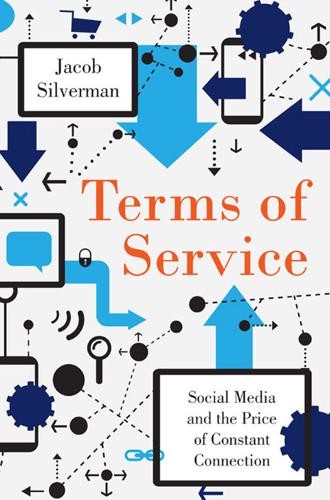
Terms of Service: Social Media and the Price of Constant Connection
by
Jacob Silverman
Published 17 Mar 2015
Byrne’s smart essay about the history of Luddism offered a necessary revisionist take, showing how it really began as a labor movement concerned with workers’ rights and how automation would deprive skilled workers of their livelihoods. In other words, it’s a surprisingly contemporary, flexible belief system, not the rigid extremism of the Unabomber. But even if this book is fated to be categorized as the work of a digital skeptic or neo-Luddite, I would argue in return that such perspectives are needed. Techno-utopians have plenty of allies—in business, in government, in media, in every celebrity with a million hard-earned followers or the fanboys who wait in line to buy a new Apple product on the day it drops. If there is actually some recurrent dialectic between technological skepticism and utopianism that we are locked into as a culture, then all the better that the people belonging to the former should be able to launch volleys such as this one.
…
It’s also a response to cyber-libertarianism, the reigning industry philosophy, which holds that large corporations, freed from the shackles of government regulation, claim to know what’s best for us and that digital life is inherently emancipatory. (Mostly, we’re only surrendering ourselves, in the form of data and personal autonomy, to oligarchic platform owners, who sell us to advertisers, data brokers, and intelligence agencies.) Popular tech writing tends to fluctuate between the two poles of Luddite rejection and unvarnished techno-utopianism. The former is generally considered far less respectable and easily stigmatized. As Richard Byrne wrote in The Baffler, “In the straitened and highly ritualized discourse of tech boosterism, ‘Luddite’ has become a catchall dirty word for anything that stands in its way.” Byrne’s smart essay about the history of Luddism offered a necessary revisionist take, showing how it really began as a labor movement concerned with workers’ rights and how automation would deprive skilled workers of their livelihoods.
…
As the scholar Trebor Scholz notes, “The essence of technology is not solely technological.” Technology cannot be looked at outside of its relationship to politics, sociology, economics, or culture. Nor is technology something neutral, just a tool that can be put toward good or bad uses, as so many techno-utopians are fond of claiming. Digital technologies have certain capacities built into them, though some of them, as the U.S. military might say, are dual use. The GPS chip in a smartphone can help you find a local restaurant; it can also be used to track all of your movements. Other digital technologies are more obviously beneficent or pernicious.

Survival of the Richest: Escape Fantasies of the Tech Billionaires
by
Douglas Rushkoff
Published 7 Sep 2022
The cohort who solicited my doomsday advice readily admitted they were “low-level billionaires” who could at best hitch a ride with Elon Musk, Richard Branson, or Jeff Bezos—who are themselves still at least a few generations away from colonizing anything. Offering a slightly more reasonable techno-utopian escape fantasy, the “seasteading” movement—publicized in a flurry of maga zine stories a few years ago—promises a sustainable solution to a world of climate catastrophe, social chaos, and economic collapse. In the Minecraft-meets-Waterworld future envisioned by “aquapreneurs ,” wealthy people are to live in independent, free-floating city-states—giant clusters of high-tech rafts using clean, renewable ocean thermal energy to power themselves and escape from a civilization of oil-drilling land dwellers.
…
One of them could orchestrate the processing of effluent through mango groves to produce potable water, and another could maintain proper hydration of giant contained tubes of agricultural topsoil used to grow vegetables with a minimum of watering. Then they all use sensor data to measure their effectiveness, and feed back the results for everyone’s benefit and improvement. Assuming all the pieces work—and that’s a big assumption in itself—it’s a beautiful picture for an organic, techno-utopian paradise. Like the Epcot Center at Disney World, but with no need for deliveries from the outside world. Almost like a space colony. Ehrlich readily admits, “We are really looking at the full stack of life support systems—sort of Mars-style, but here on Earth.” Rather than helping an existing village or neighborhood utilize more regenerative principles, the ReGen project itself must be spawned on virgin territory, from the ground up, ex nihilo .
…
Unvaccinated populations generate more variants, which then travel back to infect people in wealthier countries, anyway. You can monopolize, but you can’t escape. 11 The Mindset in the Mirror RESISTANCE IS FUTILE T he greatest danger to the holders of The Mindset would be for us to really listen to what they’re telling us and react accordingly. In the techno-utopian fantasies they share from TED stages, Davos podiums, and Silicon Valley pitch decks, we human beings are regarded as little more than iron filings flying back and forth between the magnetic poles set up by the rich and powerful, mostly in an effort to keep us from impinging on their lifestyles.

The Digital Party: Political Organisation and Online Democracy
by
Paolo Gerbaudo
Published 19 Jul 2018
A few weeks later, eventually the Five Star Movement and Lega formed a coalition government which was dubbed by the press ‘yellow-green’, or carioca, because of the colours of the two parties (yellow for Five Star and green for Lega). How was it possible for an ‘internet party’ that had long been ridiculed by the mainstream media in Italy for its naïve techno-utopianism and dilettantism to enter government less than 10 years after its foundation? What led it to enjoy such a widespread popularity in the Italian electorate? What kind of political organisation and model of democracy does this formation put forward? And is the case of the Five Star Movement an Italian exception or also an indication of what is happening in other countries?
…
These include the Partido de la Red (Party of the Net) in Argentina, the Wikipartido (Wikiparty) in Mexico, and Partido X (X Party, also known as the Party of the Future) in Spain, which, as their names attest, make overt claim to being parties of the internet. Like the Pirates, these formations propose a technoutopian discourse which sees digital technology as leading us towards a better future. However, they have not been very successful in translating this vision into electoral results. So far, the most impressive manifestations of the rise of the digital party have come from parties that, although drawing some inspiration from the Pirates and similar formations, and sometimes espousing a similar rhetoric of the ‘digital revolution’, are far more ambitious in scope and less single-issue oriented.
…
Finally, the typical voter of Bernie Sanders was said to be below 45 years of age. The sympathy of young people, especially those living in urban areas, towards digital parties is unsurprising for a number of reasons. First, young people enjoy higher than average levels of internet access, which means they are more likely to buy into the techno-utopian idea of the digital revolution as a positive change. Second, they have been disproportionately affected by the effects of the economic crisis, stagnating wages, unemployment and labour casualisation. Therefore, they tend to be more receptive to the message of social change offered by digital parties and their promise to redistribute wealth.

Uncanny Valley: A Memoir
by
Anna Wiener
Published 14 Jan 2020
The company had been profitable practically from the get-go, and was a paragon of product-market fit: catnip for venture capitalists. The founders decided to do things differently. There was no one to tell them no. The company was modeled on the free software community, with its subversive, countercultural, and deeply techno-utopian ethos. For years, in emulation of the tenets of open-source—transparency, collaboration, decentralization—the startup was flat. There was no hierarchy. There was no org chart. Employees had named their own compensation, determined their own priorities, and come to decisions by consensus. The founders did not believe in management, but in meritocracy: the best would naturally rise to the top.
…
The company had a real business model—selling private and self-hosted versions of the platform to corporations that wanted to apply the collaborative, open-source approach to proprietary software—and the public, free website struck me as radical. It offered unfettered access to the tools, knowledge, and online communities of the elite: a defensible allocation of venture capital. The startup glittered with idealism and old-school techno-utopianism. It was a corner of the industry that I found optimistic, experimental, and, most important, redemptive of the whole enterprise. I could see how it might actually make the world a better place. There was, of course, a red flag. That spring, the startup had been implicated in a highly publicized gender discrimination scandal.
…
My teammates were thoughtful and clever, opinionated but fair. Speaking for a platform, however, was nearly impossible, and none of us were particularly well qualified to do it. We wanted to tread lightly: core participants in the open-source software community were sensitive to corporate oversight, and we didn’t want to undercut anyone’s techno-utopianism by becoming an overreaching arm of the company-state. We wanted to be on the side of human rights, free speech and free expression, creativity and equality. At the same time, it was an international platform, and who among us could have articulated a coherent stance on international human rights?
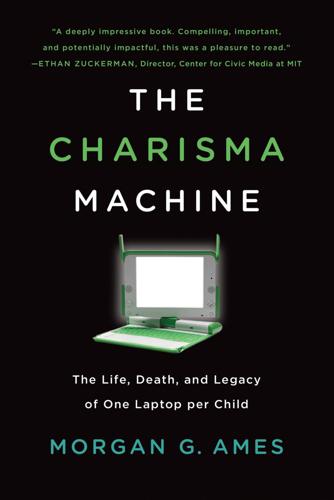
The Charisma Machine: The Life, Death, and Legacy of One Laptop Per Child
by
Morgan G. Ames
Published 19 Nov 2019
See World Economic Forum Debugging, 31 Design masculine, in OLPC, 71 nostalgic, 15–18, 51–55, 58–60, 62, 71, 131–132, 233n15 of XO laptop, flaws in, 89–90, 99, 244nn55–56 Development disruption and, 183 performativity in, 173, 178–183, 250n12 Silicon Valley model of, 178–179 technological utopianism in, problems of, 195, 254n37 United Nations program for, 3 Digital native, 228n47 Disruption of classroom, OLPC expectations of, 83, 92, 106–107 performing development and, 183 Silicon Valley culture of, 189 by XO laptop, 85, 106–107 Doom, 57, 122, 129, 143 DOTA 2, 151 Dourish, Paul, 6 Drake, Daniel, 239n17, 240n23 Educational reform charisma and, 187, 196–198 techno-utopian, 187–189 Electronic Frontier Foundation, 127 English, 169 Futuro teaching, 153, 156 over Guaraní, privileging of, 158, 160 learning, focus on, 156–160 Paraguay Educa arranging lessons in, 145, 151–152, 156 Ensmenger, Nathan, 39 Ethiopia, 176, 185–186 Ethnography, 16, 107 methods of, 214, 224n60 performance and, 174–175 thick description in, 217 Etoys, 148–152 Etoysera, 148 Europe and the People without History (Wolf, E.), 161 Exceptionalism, 10, 69–70 Factory model, of education, 36–37, 60, 229n69, 230n73 Fail Festival, 178–179 Ferguson, James, 161–162, 250n12 Fetishism, 223n42, 234n31 Fieldwork Guaraní in, 214 with Paraguay Educa, 16, 210–214, 216–218 quantitative data supplementing, 16, 214–216 thick description in, 217 Fisher, Allan, 69–70 Formadores, 95–97 Fortunati, Leopoldina, 221n35 Foucault, Michel, 222n37 Fouché, Rayvon, 132–133 Freedom Levy on, 62 in OLPC core principles, 50, 61 Papert on, 65–66 self-taught learner and, 64–66, 236n67 in XO laptop, 61–67, 71–72, 236n59 Free Software Foundation, 62, 64 Freire, Paulo, 76, 229n67, 239n15 Futuro, 153, 156 García, Alan, 245n73 Geertz, Clifford, 194, 217 Gender boy as default, 43, 232n97 hacker ethic and, 38–40 internet and, 43 laptop breakage and, 117 masculine design, 71 motivation and, 70 OLPC and, 39–40, 43–44, 46, 71 Papert and, 43–44 in Paraguay Educa, 117–118, 144–147, 151–152, 155, 159, 163 rebellion and, 38–40 Scratch and, 145–147 technically precocious boy, 15–16, 29, 33, 41–45, 111, 145–146, 152, 155, 187–188, 231n90, 231n92 toys and, 41–43 in video games, 42–44, 57 Gettys, Jim, 51–53 Gibson, William, 39, 53 Globalization, 221n35 Global South, 219n1 imperialism and, 195–196 Logo projects in, 25–27, 225n15 OLPC for, 1–3, 5, 49, 219n9, 220n12 OLPC imaginary and, 7 teachers in, 60 The Gods Must Be Crazy, 107, 246n80 Goffman, Erving, 173 Great Britain, 187 Green machine, laptop as, 2–3, 55 Guaraní English privileged over, 158, 160 in fieldwork, 214 in Paraguay, 77, 81, 157–158, 160, 214, 224n60 rurality and, 157 Gutiérrez, Raúl, 73–74, 77–78, 238n5, 239n18 Hackathons, 250n12 Hacker ethic, 226n31 masculinity and, 39–40 open-source software promoted by, 62 rebellion in, 37–41, 46 Hackers constructionism and, 28–31, 38, 46 infrastructure and identity of, 163 at MIT, culture of, 14–15, 23, 28–31, 38, 54, 58, 226n31 OLPC architects as, 15, 23 Papert and MIT culture of, 29–31, 54 Papert and social imaginary of, 38, 44–45 in Paraguay Educa, culture of, 77, 144, 163 self-taught, social imaginary of, 44–46 as yearners, 44–45 Hackers (Levy), 38–39 freedom in, 62 MIT in, 30, 60, 226n31 as symbol, hacker in, 226n31 Hall, Stuart, 7–8, 45 Haraway, Donna, 14, 199 Harvey, David, 223n42 Heterogeneous networks, 19 Hill, Benjamin Mako, 40, 64–67 Himanen, Pekka, 226n31 Historical Determinism, 191–192 Hodzic, Saida, 250n12 Hole in the Wall, 194 Holmes, Christina, 195 Hour of Code, 187–188 Hoyles, Celia, 27 Humala, Ollanta, 245n73 Hundred-dollar laptop.
…
Later, he said that the laptop project “is probably the only hope. I don’t want to place too much on OLPC, but if I really had to look at how to eliminate poverty, create peace, and work on the environment, I can’t think of a better way to do it.”19 ... One Laptop per Child serves as a case study in the complicated consequences of technological utopianism. The puzzle of this book is to untangle what made this project and its laptop so captivating and even the most outrageous claims about it so compelling. Despite OLPC’s high profile, hailing from the MIT Media Lab and becoming known around the world, very little is known about how the project’s laptops have been used day to day and what impact they have had—a gap this book will fill.
…
Although the projects featured at these Fail Faires promised unrealistically grandiose results and then inevitably failed to achieve them, the narrative was that their failures would help inform future moon shots, not that projects should be more realistic in scope.22 More recent Fail Festivals take a more measured tone in not discussing moon shots directly, instead encouraging projects to, as they put it, “fail early and often,” paraphrasing a mantra that has become common in business schools and technology-management literature.23 Still, a reliance on modeling development projects on the technology world risks taking on the reckless technological utopianism that is rife in that world as well—especially in venture capital. And the influence is one they are proud of. “Look at Silicon Valley, arguably the most successful business incubation environment in the world today,” Fail Festival’s website states. “Venture capitalists invest millions in new, untested ideas and are excited to get a 10% success rate.
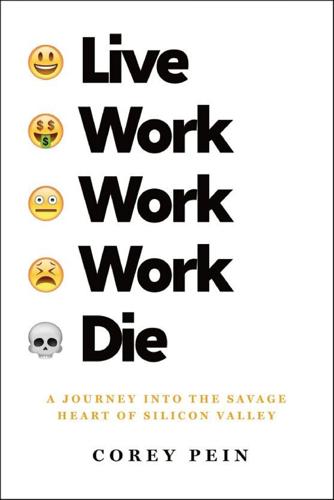
Live Work Work Work Die: A Journey Into the Savage Heart of Silicon Valley
by
Corey Pein
Published 23 Apr 2018
In a Facebook post, he called for “a more politically correct” neoreactionary movement, with room for women and nonwhites, in what appeared to be an effort to cover toxic ideas with the veneer of tolerance and the language of campus liberalism. This “sanewashing” campaign, to borrow a phrase from Dale Carrico—an academic rhetorician in San Francisco who was both a skeptic and a close observer of the techno-utopian futurists, whom he calls Robot Cultists—was successful. Neoreactionary ideas were buffed and polished for polite company, then spread via social media to mass audiences by the apologists for a new global order that places tech executives at the top. Some of those apologists do concede that Silicon Valley rule would mark a reversion to feudalism, but then, they say, there is no alternative.
…
His name became more familiar in the American mainstream after then Breitbart chairman Steve Bannon (who would go on to become Trump’s campaign strategist and White House adviser) mentioned the heretofore obscure writer’s name in a BuzzFeed interview. As one scholar of right-wing traditionalism later told the New York Times, “The fact that Bannon even knows Evola is significant.” It was more than significant—it was alarming. Some who had been paying close attention to the techno-utopian scene were less than astonished to see Anissimov, long praised as a rising star, go the Nazi way. After reading one of Anissimov’s neoreactionary rants in 2014, the academic blogger Dale Carrico published the following told-you-so: Now, for years and years before what you call Anissimov’s “jolt to the right” I have accused him of advocating a reactionary politics of plutocratic corporatism, fetishistic militarism, and anti-democratic eugenic and technocratic elitism … Of course, he whined and denied this as name calling but never responded to the substance of what I was saying.
…
His fake-it-till-you-make-it approach seems in good fun, except when he uses it to bluff through life-or-death problems. What’s worse, powerful people take him seriously, because he is forever telling them what they’d like to hear and zealously defending the excesses of consumer capitalism. Like techno-utopians such as Peter Thiel, Kurzweil has long argued that corporate interests should be calling the shots in the “new paradigms” of the future. Such views are unsurprising coming from a longtime corporate executive and salesman. Fossil fuels wrecking the planet? No worries, Kurzweil declares. We’ll crack the problem of cold fusion soon, and nanobots—always with the nanobots!
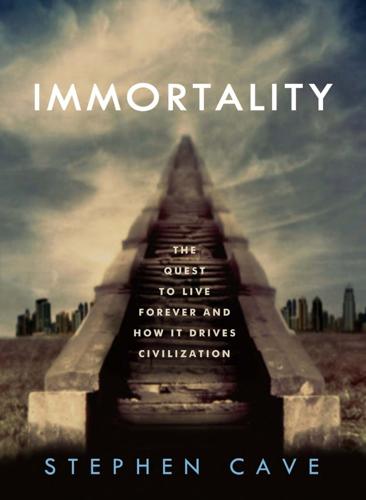
Immortality: The Quest to Live Forever and How It Drives Civilization
by
Stephen Cave
Published 2 Apr 2012
Rumors of such cases were rife in the 1800s—such as folktales from New England of how poor families struggling to feed the household through the harsh winter months would give the grandparents large quantities of homemade liquor, lay them in a coffin and bury them in a snowbank. When spring finally came they would be hauled out, defrosted and (allegedly) revived—perhaps with the help of a little more moonshine. Whether modern techno-utopians believe these legends or not, they are convinced there is something in the idea of freezing bodies in order to ward off decay. At temperatures below –276°F, they argue, biological structures could be preserved for hundreds or even thousands of years without decomposing. Cryopreservation (that is, preserving things at extremely low temperatures) is already used for storing small samples of human tissue such as eggs and sperm.
…
Philosophers call this “computational resurrection,” the rerunning of the software that is your mind on a new piece of hardware so that you might live again. The resulting being—whether avatar, robot or human—would be psychologically identical to you: it would remember your first day at school, support your favorite football team and think it was married to your spouse. According to the techno-utopians, it would therefore be you; after years lying dead in a freezing thermos, you would live again in a new and improved form. Mind-uploading has some important advantages over merely finding a modern elixir of life, which, as we saw earlier, would still leave you vulnerable to catastrophic accidents—your airplane crashing, for example, or being at the center of a nuclear explosion.
…
Being all-knowing, DigiGod would also have the information required to create beings with psychologies identical to those of all the humans who have ever lived, and being all-powerful, he would also have the capacity to do so. DigiGod, according to these optimists, would therefore resurrect all of us—and create a fine paradise in which we can all live happily ever after. This is the most extreme version of techno-utopianism, and its debt to the Judeo-Christian tradition is obvious. It is a wonderful demonstration of human ingenuity in weaving an immortality narrative from scraps of science, myth and speculation. This vision has reached its clearest expression in the work of the theoretical physicist Frank Tipler, who has gone as far as arguing that something like DigiGod is inevitable according to the laws of physics, and that he will be able to take advantage of certain specific features of the final stages of the universe to create the perception of living for eternity for the universe’s inhabitants (Tipler calls this “the Omega Point”).
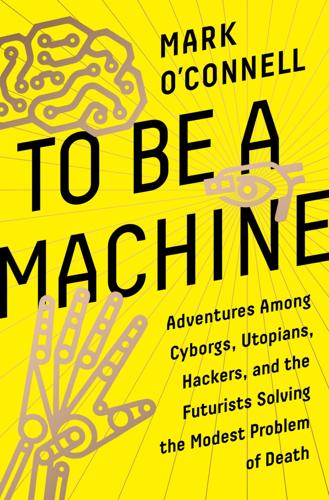
To Be a Machine: Adventures Among Cyborgs, Utopians, Hackers, and the Futurists Solving the Modest Problem of Death
by
Mark O'Connell
Published 28 Feb 2017
Esfandiary to reflect his conviction that the problem of human mortality would be solved by the year 2030—though I could not say precisely which dewar contained them, because for security reasons members of the public were not to be informed of the specific resting places of individual cryonauts. Max had mentioned to me that his wife, Natasha, had been involved with FM-2030 when they first met, and so I became briefly preoccupied, there in the care bay, with the gothic richness, as an idea, of this man charged with the maintenance of the corpse of his wife’s former lover, a techno-utopian who believed in his own exemption from death. But to reiterate: for Max, as for anyone who signs up to cryonics and its taxonomy, these are by no means corpses. “Cryonics,” as he put it, “is really just an extension of emergency medicine.” It would be easy, in the light of this seemingly bald denial of clinical orthodoxy, to portray cryonics as some kind of cult, or to view this place as a satirical diorama on the theme of modern scientism and its tragicomic excesses.
…
And so these cryopreserved corpses were not by conventional standards deceased—were not, that is to say, corpses at all—but rather human beings preserved between conditions of life and death, abiding in some state outside of time itself. And standing in the cool of the care bay, surrounded by the unseen bodies and severed heads of techno-utopians, I thought of the Catholic concept of limbo, a place that was neither heaven nor hell, but a state of suspension, a holding pattern for the souls of the righteous who had died before they could be properly redeemed by the coming of Christ, and must wait in ontological détente for that day of salvation.
…
Kurzweil is an inventor of many ingenious devices—the flatbed scanner, the print-to-speech reading machine for the blind—and the cofounder, with Stevie Wonder, of Kurzweil Music Systems, whose synthesizers are used by such diverse acts as Scott Walker and New Order and “Weird Al” Yankovic. As a writer, he is a controversial figure, a business-casual mystic whose arcane projections chart the furthest reaches of techno-utopian speculation. But he is by no means a marginal presence in the tech world; he is, rather, a tutelary spirit of Silicon Valley—a status that was more or less formalized in 2012, when he was brought in as director of engineering at Google, to act as thought-leader-in-chief for the company’s pursuit of machine learning.

The Rise and Fall of the Neoliberal Order: America and the World in the Free Market Era
by
Gary Gerstle
Published 14 Oct 2022
That was the neoliberal promise. Both Democrats and Republicans had tied their fortunes to delivering on it. Gore, himself, had long been at the center of the Democratic Party’s neoliberal campaign, Clinton’s trusted techno-utopian lieutenant. In the aftermath of the Great Recession, globalization and neoliberalism could no longer be promoted as policies that lifted all boats. Techno-utopianism could no longer hide the truth that serious structural imbalances in the global economy threatened not just to collapse economies but to rend the social fabric of nations. The economic hardship and distress caused by the crash would linger for years.
…
The information technology revolution, another key feature of the neoliberal order, made possible this phenomenon of perpetual counting and measuring. In the utopian 1990s, the self-knowledge resulting from this revolution was held up as liberating, as delivering on the neoliberal promise of personal freedom and emancipation. Now that the technological utopianism of the 1990s and 2000s is gone, the measurement imperative that remains has become as much a mechanism for tyrannizing the self—with the relentless injunction to do or be better—as for realizing the full possibilities of one’s personhood. No political movement to release individuals from this tyranny of self-scrutiny has yet gained traction; but perhaps a visionary with a Stewart Brand-like imagination will arise to call for freeing human consciousness from tech-imposed fetters.
…
The iPhone gave IT innovators and their venture capital supporters everywhere a big boost. Google, meanwhile, was rapidly universalizing internet access and use.36 Thomas Friedman, the prominent New York Times columnist, caught the hopeful IT spirit of the Bush years in his bestselling book The World Is Flat, published in 2005 in the midst of the Iraqi occupation. The book’s techno-utopianism echoed that of Clinton-era cyberspace enthusiasts Esther Dyson, George Gilder, and Alvin Toffler. But if the latter group was mostly focused on the cybernetic revolution as an American event, Friedman was struck by its global reverberations. Friedman was drawn to Bangalore, a city in southern India that had become a high-tech corridor rivaling Silicon Valley in its sophistication and in its embrace of American values and techniques.

What Algorithms Want: Imagination in the Age of Computing
by
Ed Finn
Published 10 Mar 2017
Even the engineers behind some of the most successful and ubiquitous algorithmic systems in the world—executives at Google and Netflix, for example—admit that they understand only some of the behaviors their systems exhibit. But their rhetoric is still transcendent and emancipatory, striking many of the same techno-utopian notes as the mythos of code as magic when they equate computation with transformational justice and freedom. The theology of computation that Ian Bogost identified is a faith militant, bringing the gospel of big data and disruption to huge swaths of society. This is the context in which we use algorithms today: as pieces of quotidian technical magic that we entrust with booking vacations, suggesting potential mates, evaluating standardized test essays, and performing many other kinds of cultural work.
…
J., 113 Foxconn, 133–134 Fox News, 170 Fredkin, Edward, 23 From Counterculture to Cyberculture (Turner), 46 Future of Life Institute, 191 Galloway, Alexander, 46, 50, 54, 121–123, 143, 144 Game of life, 29–30 Gamification, 12, 133 addiction and, 114–119, 121–122 blurred reality and, 120–121 chess and, 135–138 cultural transactions and, 119 culture machines and, 115–116 Deep Blue and, 135–138 enframing and, 118–119 exploitationware and, 115–116 Facebook and, 114–115 FarmVille and, 114–115 informatic control and, 122–123 interface economy and, 123–131, 139–140, 145, 147 Gaming: Essays on Algorithmic Culture (Galloway), 121 Gates, Bill, 174 Gawker Media, 170–175, 210n35 Gender, 60–61, 80, 82, 210n43 Geocities, 209n20 Ghost in the machine, 55, 95, 183 Gillespie, Tarleton, 20, 46 Gilliam, Terry, 142 Glass Cage, The (Carr), 38 Gmail, 65–66 Gödel, Kurt, 24, 40 Gods, 1, 3–5, 7, 51, 57, 71, 83, 96, 113, 192 Golden Ratio, 2 Golumbia, David, 18, 21, 38, 45–46 Google advertisements and, 66, 74, 156, 158–160, 178 algorithmic arbitrage and, 111, 124, 155–156 algorithmic worldview of, 20 Alphabet and, 66, 155 anticipation and, 73–74 as arbiter of digital culture, 66 augmenting imagination and, 186 autocomplete databases and, 186 black box of, 169 Brin and, 57, 155–156 business model of, 20–21, 71–72, 93–94, 96, 155, 159 cloud warehouse of, 131 company value of, 158 cultural architecture of, 42 DeepMind and, 28, 66, 181–182 disruptive technologies and, 124 earnings of, 158 effective computability and, 42 global computation infrastructure of, 131 Gmail and, 65–66 gutter problem and, 110 impact of, 65–66, 87, 195 interfaces and, 66–67, 124 intimacy and, 75–76 KnowledgeGraph and, 71–73, 75, 94 Kurzweil and, 184 machine learning and, 66, 181–186, 191 Maps and, 59 market issues and, 66 massive infrastructure of, 131 Memex and, 188 neural networks and, 185 OK Google and, 51 ontology and, 159–160 Page and, 155–156 PageRank and, 20, 111, 155–159, 169, 177–178, 189 parsing data and, 182 pragmatist approach and, 18, 20 product improvement and, 42 programmable culture and, 169 Project Loon and, 66 Schmidt and, 66, 73, 127 search and, 26, 42, 48, 69, 75–76, 87, 157–159, 169 sharing economy and, 127 simplification ethos and, 97 Star Trek computer and, 11, 65–82, 159, 186, 191 system behavior and, 16 techno-utopian rhetoric and, 16 X Lab and, 66 YouTube and, 65–66 Google Glass, 66 Googleization of Everything, 68 Google Now, 51, 73–74, 76, 82, 160 Gou, Terry, 133 Grammar, 2, 16, 25, 38–41, 62–64, 110–112, 138, 178–179 Grand Theft Auto (game), 122, 124 Grinding, 120, 140 Guardian (newspaper), 170 Guattari, Félix, 76 Guilds, 121 Gutter problem, 110 Habermas, Jürgen, 105–107, 109–110, 114, 172–173, 175–176 Hackers, 1–5, 38, 46, 50–51 Hackers (film), 3 HAL computer, 181 Half-Life of Facts, The (Arbesman), 188–189 Halting states, 41–46 Hardt, Michael, 145 Hastings, Reed, 97–98 Hayles, N.
…
See also Siri; Star Trek computer Interface economy Airbnb and, 124 Amazon and, 124 arbitrage and, 123–131, 139–140, 145, 147 class and, 129–130 cloud warehouses and, 131–145 efficient access and, 127–128 faking sincerity and, 146–147 Google and, 124 individualism and, 126–127 intimacy and, 129 labor and, 123–145, 147 Mechanical Turk and, 135–145 moral machinery and, 144–149 Netflix and, 124 remobilization of capitalism and, 127 sharing economy and, 54, 123, 127–129, 145, 148 Uber and, 123–133, 145, 147 worker conditions and, 132–134, 139–140 work of algorithms and, 123–145 wrappers and, 129 Interface Effect, The (Galloway), 143–144 Interfaces abstraction and, 52, 54, 92, 96, 103, 108, 110–111 API, 7, 113 Bogost and, 49 clean, 8, 96, 110 community and, 52 conscious, 36 cultural processing and, 16 customized, 36 fetish and, 35 Google and, 66–67 imagination and, 189 layers of, 12, 52, 123, 126–131, 140–141, 144, 189 metaphor and, 25, 60 Ramsey and, 52 Siri and, 59–60, 63, 75, 77 Star Trek computer and, 67–68 transparency and, 189 Uber and, 54 visual abstractions and, 25 Intimacy algorithms and, 4, 11, 35, 54, 65, 74–78, 82–85, 97, 102, 107, 128–130, 172, 176, 185–189 Google and, 75–76 interface economy and, 129 meaning and, 75 Memex and, 186–189, 195 mining value and, 176–177 Samantha (Her) and, 77–85, 154, 181 iTunes, 161 Jackson, Samuel L., 59 Jenkins, Henry, 102 Johansson, Scarlett, 78 Jonze, Spike, 11, 77–79, 84–85 Journalists, 3 automatization and, 38 Bitcoin and, 12 cultural values and, 171–172 Facebook and, 116, 170, 172 gamification and, 116 Gawker Media and, 170–175, 210n35 Google and, 75 Siri and, 58 Thiel and, 170–171 transactional algorithms and, 151 “Trending Topics” widget and, 180 Uber and, 129 Kael, Pauline, 175 Kasparov, Gary, 135–138 Kindle, 195 Kirschenbaum, Matthew, 47–48 Kiva Systems, 134 Kline, Ronald, 31 KnowledgeGraph, 71–73, 75, 94 Knuth, Donald, 17–18 Kurzweil, Ray, 184 Labor, 7, 18, 46, 122 Adam Smith on, 146 affective, 145–148 arbitrage and, 97, 112, 123–145 Bitcoin and, 164, 178 capitalism and, 165 cloud warehouses and, 131–445 culture machines and, 93, 119 deep structures of, 123 faking sincerity and, 146–147 feedback systems and, 145–148 HITs and, 135, 139, 141, 145 identity and, 146–147 intellectual, 12 interface economy and, 123–145 ludic, 120 mandatory smiles and, 146 Marx on, 165 Mechanical Turk and, 135–145 pickers and, 132–134 Taylorism and, 93 worker conditions and, 8, 132–134, 139–140 Lambda calculus, 24 Langlois, Ganaele, 111 Language abstraction and, 2, 24 advertisements and, 178 algorithms and, 24–28, 33–41, 44, 51, 54–55 cognition and, 39 color words and, 4 culture machines and, 39–40 epistemological layers and, 4, 11, 148, 155, 157, 175, 177, 188 ethos of information and, 159 grammar and, 2, 16, 25, 38–41, 62–64, 110–112, 138, 178–179 imagination and, 38, 185, 196 incompleteness and, 24, 40 as intellectual technology, 4 intelligent assistants and, 11, 57, 62, 64–65, 77 machine learning and, 2, 112 many registers of, 1–2 mathematics and, 2, 55 meaning and, 1 metaphor and, 183–184 (see also Metaphor) natural language processing (NLP) and, 62–63 of new media, 112, 122 plasticity and, 38, 191 power of, 1–2, 4–5 procedural, 3–4, 6 reality and, 1 rhetoric and, 6, 16, 22, 30, 45, 89, 96, 101, 104, 110, 112, 123, 127, 136 Siri and, 57–65, 71–84 spoken, 2, 58, 60, 62–63, 67, 84, 185 symbolic, 2, 26, 38–41 tricks and, 3–4 Turing Machine and, 33, 41 universal, 5 vocabulary and, 2, 4, 25, 138, 160, 190 Wiener and, 28 Language of New Media, The (Manovich), 122 Lawsuits, 90, 171, 175 Leibniz, Gottfried Wilhelm, 25–27, 72 Lem, Stanislaw, 184 Levy, Steven, 3 Lewis, Michael, 12, 151, 153, 168 Leyden, Peter, 160 Library Computer Access/Retrieval System (LCARS), 67–68 Life magazine, 31 Literacy, 5, 39, 52, 75, 109, 129, 159, 177 LiveJournal, 209n20 Loebner Prize, 87, 203n50 Logic general substitutability and, 33 Gödel and, 24, 40 halting states and, 41–46 information theory and, 10, 27 invisibly exclusionary, 110 pragmatist approach and, 18–25, 42, 58, 62 process and, 41–46 proofs and, 15, 24–25, 41, 44 rationality and, 38, 40 symbolic, 2, 21, 24, 39, 41, 44, 54–55 “Long Boom, The” (Schwartz and Leyden), 160–161 Lyft, 123, 127–130, 145, 148 Machine learning artificial intelligence (AI) and, 2, 15, 28, 42, 62, 66, 71, 85, 90, 112, 181–186, 191 big data and, 90 computationalist approach and, 183 DeepMind and, 28, 66, 181–182 Google and, 66, 181–186, 191 imagination and, 181–186 language and, 2, 112 Netflix and, 182–183 neural networks and, 28, 31, 39, 182–183, 185 Siri and, 62, 182 (see also Siri) Turing Machine and, 182 (see also Turing Machine) Macy Conferences, 30, 199n42 Madrigal, Alexis, 92, 94–95 Magic agency and, 78 artificial intelligence and, 135–136 cached content and, 159 code as, 1–5, 8, 10, 16, 49–50, 196 computation as, 4, 8, 10, 46, 52, 59–60, 94, 96, 121, 161 constructed reality and, 39 curses and, 1 data cloud and, 131, 134 fantasy and, 121, 124, 126 government currency and, 172 hacker powers as, 3, 51 incantations and, 1, 3–5, 51, 196 invisible sides of system and, 178 machines and, 137–138, 188 Memex and, 188 metaphors for, 32–36 myths and, 1–2, 10, 16 ontology and, 62–65 ratings and, 130 rational language for, 25 shamans and, 1, 3, 5 Siri and, 59–60, 62–65 sourcery and, 3, 10, 17, 21, 33–34 symbolic, 105 Manjoo, Farhad, 75 Manovich, Lev, 112, 122 Market impacts advertisements and, 34 (see also Advertisements) arbitrage and, 152, 161 attention and, 119 automobiles and, 127 Bitcoin and, 163–180 crashes and, 151 cryptocurrency and, 160–180 digital identity and, 159 digital trading and, 152 eliminating vulnerability and, 161–162 encryption and, 153, 162–163 fungible space and, 54 gaming and, 119, 121 gaming the system and, 153 Google and, 66 high frequency trading (HFT) and, 151–158, 168–169, 177 hyperinflation and, 166 international trade and, 12 invisible hand and, 33 labor and, 8 (see also Labor) Mechanical Turk and, 135–145 NASDAQ and, 152 Netflix and, 87, 97, 107–110, 114–115 NYSE and, 152 parallel computing and, 139 pension funds and, 151, 168 Siri and, 59, 75–77 stock market and, 12, 15, 154 transaction fees and, 164–165 transparency and, 160–164, 168, 171, 177–178 virtuous action and, 146 Wall Street and, 16, 66, 109, 151, 153, 171, 185 Marx, Karl, 165 Master Algorithm, The (Domingos), 183 Materiality, 26, 47–49, 53, 133 Mathematics abstract symbolism, 2, 55 algebra, 17 Babylonian, 17 Berlinski and, 9, 181 calculus, 24, 26, 30, 34, 44–45, 98, 148, 186 complexity, 28 computationalist approach and, 23, 183, 185 Conway and, 29–30 culture machines and, 49–50 Descartes and, 26, 69, 75 effective computability and, 40 “extended mind” hypothesis and, 40 Fibonacci sequence, 17 Golden Ratio, 2 Hilbert and, 23 Hindu-Arabic numerals, 17 language and, 2, 55 Leibniz and, 25–26, 72 logic, 2, 10, 24 machine duplication and, 22 materiality and, 26 Moschovakis and, 17 Nakamoto and, 161–162 Netflix Prize and, 87–91 ontology and, 84 perceived reality and, 20 Post and, 9 Pragmatic Chaos and, 90 proofs, 15, 24–25, 41, 44 pure, 47 reality and, 34 Rendell and, 30 Shannon and, 27 Strogatz and, 44, 183 theory of computation and, 18 Turing and, 6–9, 23–30, 33, 39–43, 54, 73, 79–82, 87, 138, 142, 182, 186 Mathesis universalis, 25–26, 28, 72 Matrix, The (film), 3, 36, 109 Maturana, Humberto, 28–29 McClelland, Mac, 132–133 McCloud, Scott, 110, 154–155 McCulloch-Pitts Neuron, 28, 39 Meaning acceleration of epistemological change and, 188–189 algorithms and, 35–36, 38, 44–45, 50, 54–55 belonging and, 122 black boxes and, 7, 15–16, 47–48, 51, 55, 64, 72, 92–93, 96, 136, 138, 146–147, 153, 162, 169–171, 179 Chun on, 35 Cow Clicker and, 116, 118–119 cultural exchange and, 12, 111–112 data mining and, 175 decision-making and, 20, 28, 34, 37, 90 digital culture and, 3, 7, 18, 22, 43, 49, 66, 87, 156, 160, 191, 193–194 endless hunt for, 184 imagination and, 184 (see also Imagination) intimacy and, 75 language and, 1 Mechanical Turk and, 136–140 metaphor and, 183–184 (see also Metaphor) obfuscations and, 7, 55, 64 organization of, 8 PageRank and, 169 Siri and, 65 structures of, 89, 96 value and, 155 vs. information, 9, 9–10 Mechanical Turk Google and, 12, 135–145 history of original, 136–138 meaning and, 136–140 as metaphor, 143 von Kempelen and, 135 worker conditions and, 139–140 Mechanisms (Kirschenbaum), 47–48 Memex, 186–189, 195 Memory computation and, 18, 21, 37, 43–44, 51, 56, 58, 69, 75, 159–160, 176, 185–186, 191–193 culture and, 43 human, 37, 43–44 process and, 21 technical, 51, 192 understanding and, 37 Metaphor, 121 assumption of code and, 43 cathedral of computation and, 6–8, 27, 33, 49, 51 Church-Turing thesis and, 41–42 cloud, 131 for communication, 32–36 computational, 22 cultural, 50, 54 effective computability and, 34 human cognition and, 39 imagination and, 183–184, 189 interfaces and, 25, 60 Mechanical Turk and, 143 Netflix as, 96, 104 obelisk and, 155 reality and, 10, 50 Samantha (Her) and, 84–85 Microsoft, 97, 144, 152 Miners (Bitcoin), 165, 167–168, 171–172, 175–179 Money abstraction and, 153, 159, 161, 165–167, 171–175 algorithmic trading and, 12, 20, 99, 155 arbitrage and, 151–152, 155–163, 169–171, 175–179 Bitcoin and, 160–180 as collective symbol, 165–166 ontology and, 156–159, 178–179 Moore’s Law, 43 Morowitz, Harold, 23 Moschovakis, Yiannis, 17 Moth machine (Wiener), 31–32, 34 Musk, Elon, 191 My Mother Was a Computer (Hayles), 21, 93 Myths ancient, 28 Campbell on, 94 code and, 7–8, 16, 44 cultural space and, 5 culture machine and, 55 fantasy and, 78 government currency and, 172 human-computer interaction and, 36, 51 magic and, 1–2, 10, 16 material reality and, 47 ontology and, 26 origin, 68 personalization and, 106–107 power of language and, 6, 44, 196 Sumerian, 3, 5, 16 unitary simplicity and, 49 Nakamoto, Satoshi, 161–162, 165–167 Nam-shubs, 1, 3–6, 37–40, 56, 135 Nardi, Bonnie, 121 NASDAQ, 152 Natural-Born Cyborgs (Clark), 37 Natural language processing (NLP), 62–63 Natural selection, 44 Negri, Antonio, 145 Netflix, 161 abstraction of aesthetics and, 87–112, 205n36 abundant choices and, 176 arbitrage and, 94, 97, 109–112, 124 art of personalization and, 97–103 Bogost on, 92–95 business model of, 87–88 Cinematch and, 88–90, 95 commissioned shows of, 97–98 computationalist approach and, 90, 104 consumer desire and, 93–96 disruptive technologies and, 124 effective computability and, 93 Facebook and, 91, 110 fan making and, 100–101 FCC and, 90 genre categories of, 94 ghost in the machine and, 55, 95, 183 gutter problem and, 110 Hastings and, 97–98 House of Cards and, 11, 54, 92, 98–112, 192 influence of, 87 interface economy and, 124 Leibniz and, 26 machine learning and, 182–183 market issues and, 87, 97, 107–110, 114–115 metaphor and, 96, 104 ontology and, 92, 94, 96 original content by, 97–98 parsing data and, 182 personalization and, 97–103, 109 Pragmatic Chaos and, 89–90 predictor ensemble and, 89–90 quantum mechanics and, 91–94, 96, 99, 112 recommendation algorithm competition of, 87–91 rejection of big-data approach and, 11 serendipitous glitches and, 55 Spoiler Foiler and, 101–102, 108 streaming and, 90 system behavior and, 16 taggers and, 54, 88, 92–93, 96, 99 techno-utopian rhetoric and, 16 Neural networks, 28, 31, 39, 182–183, 185 New Digital Age, The (Schmidt), 66 Newitz, Annalee, 60 Newton, Isaac, 17, 166 New York Stock Exchange (NYSE), 152 New York Times, 170 Nielsen ratings, 102 Note Book (Nunokawa), 53 @NSA_prismbot, 194–195 Nunokawa, Jeff, 53 Nyby, Christian I., II, 95 Of the Subcontract, Or Principles of Poetic Right (Thurston), 12, 140–145 OK Google, 51 One-way functions, 162–163 Ontology Apple and, 62–63, 65 computationalist approach and, 8 consciousness and, 178 culture machines and, 62–65, 68–69 Google and, 159–160 ideology and, 68 imagination and, 69, 73–74 of information, 8, 63, 69–71 mathematics and, 84 meaning and, 8, 21–22, 26, 39 money and, 156–159, 178–179 Netflix and, 92, 94, 96 Siri and, 62–65, 71–73, 82, 84 work of algorithms and, 122 Open source software, 6, 162, 167 ORION, 19, 47 Orwellian surveillance, 132–134 Page, Larry, 155–156 PageRank, 20, 111, 155–159, 169, 177–178, 189 Pariser, Eli, 46, 50 Parisian Great Exhibition, 80 Pasquale, Frank, 21 Pension funds, 151, 168 Perfect knowledge, 13, 65, 71, 73, 190 Perry Mason (TV series), 95–96 Phaedrus (Plato), 37 Phoenix, Joaquin, 77 Pickers, 132–134 Pitts, Walter, 28 Planned Parenthood, 64 Plato, 4, 31, 37–38, 40, 82 Popova, Maria, 175–176 Post, Emil, 9 Pragmatic Chaos (Netflix), 89–90 Pragmatist approach algorithmic, 2, 18–25, 42 effective computability and, 25–26 experimental humanities and, 193 growing power of computation and, 27 justice and, 146 models of reason and, 47 reframing humanities and, 193 Siri and, 58, 62 Privacy, 49, 62, 75, 90, 160–161, 163, 173 Private keys, 163 Programmability, 16, 178 Programmable culture, 169–175 Programmed Visions (Chun), 33 Project Loon, 66 Proofs, 15, 24–25, 41, 44 Protocol (Galloway), 50 Public keys, 163 Purdy, Jedediah, 146–147 Quantum mechanics Netflix and, 91–94, 96, 99, 112 Wiener and, 26–27 Raley, Rita, 194–195 Ramsey, Stephen, 52 Raymond, Eric, 6 Reading Machines (Ramsey), 52 Religion, 1, 7, 9, 49, 69, 71, 80, 136 Rendell, Paul, 30 Rice, Stephen P., 144–145 Rid, Thomas, 199n42 Riskin, Jessica, 136–137 Robotics, 31, 34, 43–45, 132–134, 188 Rood of Grace, 137 Rotten Tomatoes, 96 RSE encryption, 163 Samantha (Her), 77–85, 154, 181 Sample, Mark, 194–195 Sandvig, Christian, 107, 131 Sarandos, Ted, 98, 100, 104 Schmidt, Eric, 66, 73, 127 Schwartz, Peter, 160–161 Scorsese, Martin, 59 Searle, John, 4 Shannon, Claude, 27 Sharing economy, 54, 123, 127–129, 145, 148 Shoup, Donald, 127 Silicon Valley, 3, 9, 30–31, 49, 54, 87, 100, 124, 182 SimCity (game), 194 Simondon, Gilbert, 40, 42–44, 53, 59, 84, 106, 118 Singhal, Amit, 72, 76 Siri abortion scandal and, 64 abstraction and, 64–65, 82–84 anticipation and, 73–74 as beta release, 57 CALO and, 57–58, 63, 65, 67, 79, 81 cognition and, 57–65, 71–84 computationalist approach and, 65, 77 consciousness and, 57–65, 71–84 conversation and, 57–65, 71–84 DARPA and, 11, 57–58 Easter eggs in, 60, 148 effective computability and, 58, 62, 64, 72–76, 81 emotional work and, 148 Enlightenment and, 71–76, 79–80, 82 gender and, 60–61, 80 interfaces and, 59–60, 63, 75, 77 intimacy and, 11, 75–81 language and, 57–65, 71–84 launch of, 57 machine learning and, 62–65, 182 market issues and, 59, 75–77 meaning and, 65 ontology and, 62–65, 71–73, 82, 84 parsing data and, 182 performing knowledge and, 59–61 quest for knowledge and, 71–75, 82, 84 reading, 58–59 reduced abilities of, 59 speed of, 131 Skinner boxes, 61, 115–116, 119–120, 122 Smith, Adam, 12, 146–147 Smith, Kevin, 88 Sneakers (film), 3 Snow Crash (Stephenson), 1, 3–5, 9, 17, 36, 38, 50 Social behavior, 22, 146 addiction and, 114–119, 121–122 discrimination and, 21, 130 exploitationware and, 115–116 Social gaming, 114, 118, 120–122 Social media, 6 Arab Spring and, 111, 186 changing nature of, 171 digital culture and, 3, 7, 18, 22, 43, 49, 66, 87, 156, 160, 191, 193–194 Enlightenment and, 173 identity formation and, 191 in-person exchanges and, 195 intellectual connection and, 186 newsfeeds and, 116, 177–178 peer review and, 194 raising awareness and, 174 Spoiler Foiler (Netflix) and, 101–102, 108 transaction streams and, 177 Uber and, 148 Software agency and, 6 Apple and, 59, 62 apps and, 6, 8, 9, 15, 59, 83, 91, 94, 102, 113–114, 124, 128, 145, 149 blockchains and, 163–168, 171, 177, 179 cathedrals of computation and, 6–8, 27, 33, 49, 51 Chun on, 33, 42, 104 Church-Turing thesis and, 25 consciousness and, 77 dehumanizing nature of, 116 depersonification of, 6 digital materiality and, 53 experience and, 34 as foundation of computational expression, 47 imagination and, 186, 194 in-house affect and, 59 interfaces and, 124 (see also Interfaces) logic of general substitutability and, 33 Manovich and, 112 material layers and, 48 as metaphor for metaphors, 35 Metaverse, 50 networks vs. individuals and, 118 open source, 6, 162, 167 Pasquale on, 21 reality and, 10 self-modification and, 1, 38 Weizenbaum and, 33–40 Solaris (Lem), 184 Sourcery, 3, 10, 17, 21, 33–34 Space of computation, 2–5, 9, 21, 42, 45, 76, 154, 185 Spacey, Kevin, 98–99, 106–107 Spoiler Foiler (Netflix), 101–102, 108 SRI International, 57, 59, 63, 169 Srinivasan, Balaji, 169 Star Fleet Federation, 67 Star Trek computer anticipation and, 73–74 conversation and, 67 Google and, 11, 65–82, 159, 186 interfaces and, 67–68 LCARS and, 67–68 Memex and, 186–189, 195 public expectations and, 67 Star Trek: The Next Generation (TV series), 67 Stephenson, Neal, 1, 3–5, 9, 17, 36, 38, 50, 51 Stiegler, Bernard, 43–44, 53, 106 Streaming content, 49, 54, 87, 90–92, 97, 99, 101–102, 104, 205n39 Strogatz, Steven, 44, 183 Sumerian myths, 3, 5, 16 SuperPACs, 174 Symbolic logic, 2, 21, 24, 39, 41, 44, 54–55 Symposium (Plato), 82 Tacit negotiation, 20 Taggers, 54, 88, 92–93, 96, 99 Tanz, Jason, 116 TaskRabbit, 124 Taylorism, 93 Teller, Astro, 66 Terminator (film series), 191 Terrorism, 163, 178 Theory of Communicative Action, The (Habermas), 109 Theory of Moral Sentiments (Smith), 12, 146–147 Thiel, Peter, 170–171, 174 Third parties, 59, 114, 125, 132–133, 147, 162, 170–171 Thurston, Nick, 12, 140–145 Tindr, 128 Transaction fees, 164–165 Transcendent Man (Kurzweil), 184 Transparency bazaar model and, 6 cryptocurrency and, 160–164, 168, 171, 177–178 feedback and, 146 freedom and, 9 interfaces and, 189 market issues and, 160–164, 168, 171, 177–178 politics of algorithms and, 18, 20 proprietary platforms and, 9 Traveling salesman problem, 19 “Trending Topic” widget, 180 Turing, Alan, 8, 23, 42, 79–80, 182 Turing Machine, 182 Berlinski and, 9, 24 computability boundary and, 23–24 concept of, 23 effective computability and, 42 finite-time processes and, 42 game of life and, 29–31 language and, 33, 41 McCulloch-Pitts Neuron and, 28 as though experiment, 23–24 as uniting platform, 25 Turing’s Cathedral (Dyson), 6 Turing test, 43, 79–82, 87, 138, 142 Turner, Fred, 3, 46 Twain, Mark, 151 Twitter, 53, 101–102, 173, 177, 179, 194–195, 210n43 Uber, 9, 12, 97, 138 abstraction levels of, 129 African Americans and, 130 business model of, 54, 93–94, 96 feedback system of, 145–148 interface economy and, 123–133, 145, 147 massive infrastructure of, 131 threats to, 129 Ubiquitous computation algorithms and, 3–4, 15, 33, 43, 54, 119, 124–125, 127, 178, 189–190 Bitcoin and, 178 colonization of margins and, 119 gamification and, 124 imagination and, 189–190 interfaces and, 189 Uber and, 125, 127 Unit Operations (Bogost), 118 U.S.S.
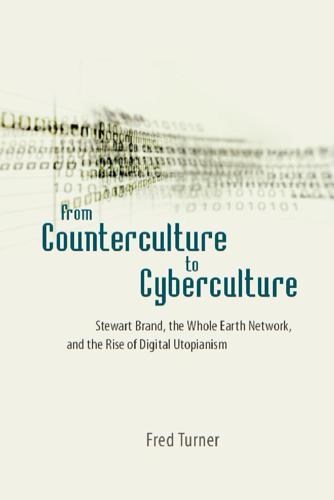
From Counterculture to Cyberculture: Stewart Brand, the Whole Earth Network, and the Rise of Digital Utopianism
by
Fred Turner
Published 31 Aug 2006
Together, Wired seemed to suggest, these two communities had set about to free America and the world from the rigid, oppressive corporate and government bureaucracies of the twentieth century. In 1998 Richard Barbrook and Andy Cameron named Wired’s particular blend of libertarian politics, countercultural aesthetics, and techno-utopian visions the “Californian Ideology.” As they pointed out, by the end of the decade, its tenets had become the day-to-day orthodoxy of technologists in Silicon Valley and beyond. But this ubiquitous set of beliefs did not in fact grow out of the legacy of the New Left, as Barbrook and Cameron suggested.
…
CHAPTER 8 The Triumph of the Network Mode Looking back on the dot-com bubble’s spectacular collapse, we can be tempted to dismiss the millenarian claims that surrounded the Internet in the 1990s as little more than the cunning hype of those who stood to profit from the building of broadband pipelines, the sale of computers, and the distribution of soon-to-be-worthless stock. But that would be a mistake. Although Kevin Kelly, Peter Schwartz, and Wired magazine certainly helped fuel the raging optimism of the period, their technoutopian social vision in fact reflected the slow entwining of two far deeper transformations in American society. The first of these was technological. Over the previous forty years, the massive, stand-alone calculating machines of the cold war had become desktop computers, linked to one another in a vast network of communication that reached into almost every corner of the civilian world.
…
They also produced new social networks and, in Brand’s case, new information systems, such as catalogs, meetings, and online gatherings. These systems in turn hosted and helped to create new social and professional networks and at the same time modeled the networks’ governing ideals. By the 1990s, each of these elements had come to play an important role in building the rhetorical and social infrastructure on which the technoutopianism of the decade depended. But they also represented a new, networked mode of organizing the production of goods, information, and social structure itself. Fifty years earlier, across the military, industry, and academe, the dominant mode of organizing work was bureaucratic. Universities, armies, corporations— outside their research laboratories and designated think tanks—all featured vertical chains of command, long-term employment prospects, clear distinctions between individuals and their professional positions, firm boundaries between the organization and the outside world, and reward systems based on some combination of merit and seniority.1 By the end of the twentieth century, however, these bureaucratic organizations had begun to lose their shape.

The Optimist: Sam Altman, OpenAI, and the Race to Invent the Future
by
Keach Hagey
Published 19 May 2025
On one hand, the essay was a fairly typical venture capitalist manifesto that made bold claims about the future and that just happened to also function as a marketing pitch for his businesses. But on the other hand, it was an impressive synthesis of Altman’s many pet projects and obsessions—AI, UBI, affordable housing, techno-utopianism—that cohered into a worldview. And he had more authority than ever before. When he wrote, without irony, “What follows is a description of what’s coming and a plan for how to navigate this new landscape,” there were more people willing to believe him.4 Altman’s departure from YC had not slowed his civilization-building ambitions.
…
“He told me he thought he could be governor of California, and president of the United States,” Johnson recalls. “He said, ‘There’s going to be a millennial president.’ ” Altman believed that Gavin Newsom, the favorite to succeed then–California Governor Jerry Brown in the 2018 election, was a weaker candidate than most people understood, Johnson said. Altman also had a vivid, techno-utopian vision for what California could be: a state with an economy so large that it could fund its own basic scientific research into nuclear energy and AGI, where the tax code could be tweaked to discourage real estate speculation in order to bring down the cost of housing, and an expanded social safety net—perhaps through UBI—that would make society fairer while eliminating the bureaucracy of many of the current social welfare programs.
…
Louis Post-Dispatch (newspaper), 40–41 Stanford Daily, The (newspaper), 56, 63 Stanford Review, 56, 131 Stanford University AI lab at, 90 annual competition held by, 182 BASES (Business Association of Stanford Entrepreneurial Students), 60 courses at, 55, 131 Education Program for Gifted Youth, 173 electric vehicle project, 57 endowment of, 155 FroSoCo (short for Freshman Sophomore College), 55, 57 Full Moon on the Quad, 92–93 generous student leave policy, 91 program in India, 64 StartX startup accelerator, 90 Summer Research College program, 57 YC Startup School online course at, 122–23, 194, 234 startups bankruptcies, 31, 87–88, 145, 205 discrimination in, 70 the first venture-funded startup, 72 founders as kings, 6, 60, 65, 68, 70–75, 87, 95 normalization of starting a startup, 70, 150 “RIP Good Times” deck, 117, 123 Startup School online course, 122–23, 194, 234 unicorns, 150, 311 see also investing; Sequoia Capital; Y Combinator (YC) StartX, Stanford’s startup accelerator, 90 Stiegler, Marc, 140, 199–200 Stone, Zak, 76, 77, 82 “Strawberry” (o1), 284, 309 Streit, Steve, 126–28, 134 Stripe, 4, 16, 123, 125, 136, 139, 150, 152, 157–58, 172, 175–76, 189–90, 246, 251 Stross, Randall, 133 StumbleUpon, 174 Suleyman, Mustafa, 146–47, 277 Summer Founders Program and Angel Day, 62, 64, 68–70, 75–82 Summers, Larry, 294, 303 Sun Microsystems, 230 Sun Valley Resort, 228–29, 263 Sunak, Rishi, 274 Superalignment team, 284, 305–6 superhuman machine intelligence (SMI), 170 superintelligence, machine, 143, 145, 164, 167, 170, 309, 315, see also AI (artificial intelligence) Superintelligence: Paths, Dangers, Strategies (Bostrom), 5, 163–66, 167–68 Supreme Court, 26, 52 Sutskever, Ilya, 169, 178–88, 189–96, 209, 211, 217–23, 244–45, 266, 287, 282–94, 304–5, 308–10, 312–13 Swartz, Aaron, 63, 76, 81, 160n SXSW (South by Southwest), 118–19 Szabo, Nick, 142 Tallinn, Jaan, 5, 144, 168, 300–301 Talve, Susan, 43–44 Tamarine Asian fusion restaurant, Palo Alto, 92 Tan, Garry, 236 Tana, Evan, 96, 102, 121 Tang, Nini, 95–96 taxes, 22, 34–35, 53, 206, 256 Tay the chatbot, 270 Taylor, Bret, 293 Teach Yourself Visual Basic in 24 Hours, 56 “teach-ins,” 94 tech bros cosmic conversations of, 147, 260, 314–15 hackers/hacking, 3, 57, 63, 68–70, 160n, 162 love of Burning Man, 1, 198–99 love of cars, 26, 51 as mostly college drop-outs, 62, 88, 91–92, 96, 108, 113, 124, 132, 175, 179, 217–18 racism among, 164–65 sci-fi, 3, 43, 47, 140, 199–200, 214, 220, 307–8 space colonization, 144, 147, 170–71 techno-utopianism among, 205, 256–57 WhatsApp group of tech CEOs, 289 wrestling among the, 109 see also cryptocurrency tech industry Big Tech companies, 182, 185, 197, 299, 308 dot-com bubble of the late 1990s, 73, 87, 93 lobbying by the, 109, 144, 179, 274, 292, 300–301 the massive valuations of tech companies, 71, 73, 138–40, 152, 290 nanotechnology, 144, 164 semiconductor industry, 72–73, 132, 298 think tanks in the, 142, 144, 267, 299–300 “women in tech,” 42, 70, 203, 252, 271 see also innovation; software development; startups TechCrunch (news site), 161, 259 technological progress, see innovation techno-utopianism, 205, 256–57 Teespring T-shirt-making startup, 156 Tegmark, Max, 145, 168–69, 208 telepresence, 210 Teller, Sam, 171 Temple Israel, 24, 25 Terminator film franchise, 200 Tesla, 153, 167, 194, 223–26, 234, 255 Test of Time Award, 305 TextPayMe, 82 The Game (rapper), 102 “TheFacebook,” 60, see Facebook Theranos, 108 Thiel, Peter, 1–7, 10, 16–17, 125, 134–48 contributions to Trump presidential campaigns, 203–4 data-mining company, 217 Facebook and, 131, 204 Founders Fund venture firm, 2, 6, 132, 139, 147, 226 founding of the conservative Stanford Review, 56, 131 From Zero to One (with Masters), 132, 230 Halcyon Molecular, 257–59 Helion Energy nuclear fusion startup, 13, 136, 207, 259, 280, 298 his “Founders Fund” venture firm, 2, 6, 132, 139, 147, 226 Inflection AI, 277 PayPal, 93, 125, 131, 136, 140, 147, 161, 171 personal beef with Gawker Media, 137, 204–5 the pessimistic contrarianism of, 4, 131–33, 137–38, 204 Saudi Arabia and, 231–32 Thiel Fellowships, 132, 178 think tanks, 142, 144, 267, 299–300 Thole, Craig, 103 Thorpe, Meridith, 46 thought leadership, 89 Three Mile Island nuclear plant, Harrisburg, PA, 135 Thrive Capital, 161, 290, 310 Thrun, Sebastian, 144 Time magazine, 1, 112 Time Warner, 229 Tivo, 121 Tokyo, 79 Toner, Helen, 241–42, 266–67, 276–79, 282–88, 291, 292, 299, 309 Tools for Humanity, 256 Torres, Émile, 164 Track Trump website, 204 trademark issues, 101 transcendentalism, 46 “transformer paper, the,” 218–19, 270, see also AI research/training transhumanism, 143–45, 165, 166, 170 Trapp, Shel, 22, 35 Traynor, Bill, 35 Tripadvisor, 80 Trump, Donald, 40, 201, 203–4, 208, 296, 313 Tsai, Tommy, 96, 113, 114 Tulyasathien, Charnsin, 110 Tuna, Cari, 212 Turing, Alan, 173–74, 295 Turing Award, 142 Twitch, 82, 157, 292–93 Twitter, 118, 158, 169, 246–47, 261, 270, 281 Uber, 231 “Unified Theory of VC Suckage, A,” 72–73 United Arab Emirates (UAE), 281, 298, 310, 313 United Nations Moon Agreement of 1979, 144 United Slate, The (online platform), 206–7 United States during the AIDS crisis, 33, 43, 49 Biden administration’s AI policies, 232, 267, 277, 299–300 Defense Advanced Research Projects Agency (DARPA), 140, 196 Democratic Party, 21, 204, 207–8, 234, 296 Department of Commerce, 273, 277, 299, 301 Department of Defense, 299 Department of Energy, 196 Department of Homeland Security, 299 Department of Housing and Urban Development (HUD) redevelopment projects, 35 Federal Communications Commission (FCC), 59, 106 Federal Trade Commission, 285 the frontier in American history, 153 Government Accountability Office, 300 during the Great Depression, 24 Intelligence Advanced Research Projects Activity (IARPA), 267 investment blacklists from the, 231 loss of technological mojo since the 1960s, 135 Medicare for All, 206 NASA, 132–33 National Security Council, 299, 301 post–World War II industrial boom, 72 Supreme Court, 26, 52 taxes, 22, 34–35, 53, 206, 256 US Army, 24, 27n, 32 see also US Congress universal basic income (UBI), 12–14, 194, 205, 256 Universe project, a general AI agent, 191–93 University College London’s Gatsby Computational Neuroscience Unit, 145 University of California, Berkeley, 94, 111, 122–23, 167, 178, 194, 234, 277, 305 University of Virginia retracted gang rape allegations, 204 Upright Citizens Brigade, 228 US Congress, 301, 309 CHIPS and Science Act, 298 Computer Fraud and Abuse Act, 68 Congressional Internet Caucus, 106 House of Representatives, 34, 106 law on location tracking on mobile phones, 58–59 Senate, 2–3, 5, 273, 296–97, 300, 309–10 user experience, 79, 119, 195, 254 average revenue per user, 79 churn rates, 105 content moderation, 254 see also chatbots utilitarianism, 2, 143, 211 “utilons,” 212 Uygur population in China, 231 Valentine, Don, 87, 112–14 Valleywag (blog), 137, 205 “value-lock,” 252 Valve, 215 Venture Beat (news site), 117 venture capital (VCs), 6–7, 8, 12, 60–62, 66 “aligning our incentives,” 256 Andreessen Horowitz, 155, 158, 161, 257 deal flow, 88, 95, 124 history of, 72–73 Khosla Ventures, 230, 235, 257 Kleiner Perkins, 162, 230 Matrix Partners, 90 Mithril Capital, 136 Peter Thiel’s Founders Fund, 2, 6, 132, 139, 147, 226 on Sand Hill Road, Palo Alto, 79, 85, 93, 116–17, 158, 177 why they suck, 72–75, 77 see also investing; Sequoia Capital; startups; Y Combinator (YC) Verbling video chat language learning service, 138 Verge, The (news site), 272 Verizon, 62, 100, 104–5, 110, 119 Viaweb, 68, 70, 73–74 Vice News Tonight, 205–6 Victor, Bret, 197 video games AI Dungeon, 247–48, 254–55 Atari, 87, 147, 165, 190 Breakout, 147 Dota 2, 215–18, 221–22, 242, 284 Halo 3, 95, 109 Resident Evil, 97 The Sims, 97 Warcraft III: Reign of Chaos, 215 Viendo, 60, 61, 63–65, 74, 76 Viewpoints Research Institute, 198 Vinge, Vernor, 140, 145, 168 viruses, computer, 154, 200 viruses, Covid-19, 248–50 Visual Basic language, 56 Visual Studio development environment, 262 Vivarium Project, 209–10 VotePlz voter registration app, 203–4 “Voting with Your Feet: An Investigative Study of the Relationship Between Place Visit Behavior and Preference” (Potter and Howard), 111 Vox (news site), 306 Wall Street Journal, The, 7, 10–12, 17, 42, 57, 105, 124, 212, 229–32, 298 “walled garden,” 110 Walmart, 126, 133 Walton, Nick, 246–47, 254–55 Warcraft III: Reign of Chaos (video game), 215 Washington, Harold, 21–22, 33–34, 37 Washington Post, The (newspaper), 232, 301 “waterfall” method of software development, 126 Watters, Nathan, 50–51, 201 We Are the Nerds (Lagorio-Chafkin), 161 WebGPT, 265 WebMind stock market trend prediction software, 145 WebText, 241, 244 Weebly, 157 Weiden, David, 89–90, 103–4, 108, 230 Weigend, Andreas, 90 Weil, Elizabeth, 281 Welinder, Peter, 247–48 West, Kanye, 102 Westrup, Evan, 206 Westworld (TV show), 199 Wevorce online divorce service, 138 “Where is Ilya?”
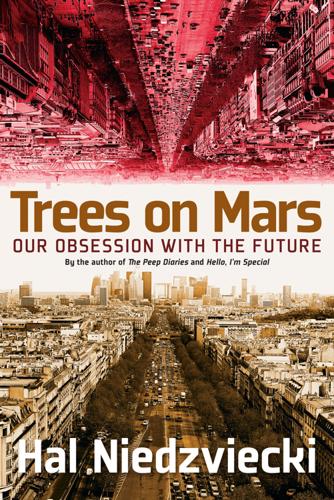
Trees on Mars: Our Obsession With the Future
by
Hal Niedzviecki
Published 15 Mar 2015
New Departure ball bearings keep parts in perfect alignment, support loads from any angle and require little or no maintenance. Commenting on this ad, Matt Novak writes wryly: “General Motors, like so many advertisers that would come before and after them, loved to position themselves firmly at the future’s door. An association with the sleek, techno-utopian ideas that were just around the corner meant that even a product as boring as ball bearings could look as bright and sexy as a rocket to the moon.”35 What we elegize now—the promise of robot nurses, colonies on Mars and food replication machines, even the notion that once all of humanity was connected we would establish some kind of global nervous system that would make war inconceivable—were also part of a worldview, a psychological framework.
…
In 2013, Martine Rothblatt, who is also the founder of the biotechnology company United Therapeutics, was one of the speakers at Dmitry Itskov’s 2045 Global Future Congress in New York City. Clearly, her spiritual beliefs fit right into the tenor of the times. In fact, they neatly dovetail with the overall techno-utopian belief system revolving around “faith in the (technological) future.” In this extreme but also now mainstream belief system the goal of technological upgrade, of speeding up the process of change, isn’t the perfect iPhone; it isn’t a device downloaded into your brain, amplified and accessed via Google Glass; it isn’t even an army of robots we control with our minds who do our bidding and create unimaginable wealth and luxury for all.
…
But if we want to accept where—and what—we really are, we will be required to embrace what Nietzsche called “a strict, hard factuality”; not hope, but “courage in the face of reality.”21 The reality is that no matter how many new livers and kidneys the labs will grow, how many versions of the tricorder we come up with, how many houses will be conjured from 3-D printers the size of dragons, it’s becoming increasingly more difficult to situate hope in visions of a techno-utopian future nearer to us every day. Even Peter Thiel seems to be getting impatient with the bets he has made. “Moore’s Law is good if you’re a computer,” he said at a 2012 public discussion. “But the question is, how good is it for human beings, and how does this translate into economic progress for humans?”
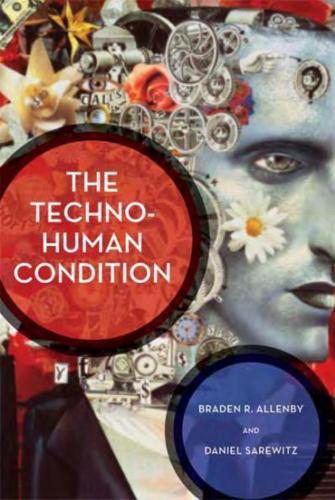
The Techno-Human Condition
by
Braden R. Allenby
and
Daniel R. Sarewitz
Published 15 Feb 2011
In our line of work, however, the most common prescription is the further pursuit of Enlightenment rationality, achieved through some combination of two options: (1) "Do more research, reduce uncertainty, take action" and (2) "Educate the unwashed and the opposition." After all, if only everyone understood the facts, then the right course of action would become obviousthat is, either (a) embrace and promote technological change or (b) embrace and promote essential humanness. We see these sorts of approaches (the utopian, the hard-ass, the rational techno-utopian, the rational techno-dystopian) as further symptoms of the world we have struggled to describea world unable (and perhaps increasingly unable) to come to grips with what it does to itself. We will take a different tack and offer up a modest set of attributes, for institutions (ranging from governments to research organizations) and for individuals, that we think would help constitute a world better able to manage the complex consequences of its own ingenuity.
…
-P., 189 Science, as belief system, 110, 206 Schizophrenia, 16 Schlieffen Plan, 76 Second Coming, 78 Second Life, 81 Shakespeare, W., 16 "Shock and awe," 76,127,135 Shop-floor activities, 51, 63, 65 Silicon Valley, 135 Simon, H., 120 Singer, P., 141 Smallpox, 16,31,47,70 Smith, A., 97 Soviet Union, 114 Space-time compression, 74 Spice Islands, 129 Stalinism, 31 Stem cells, 3 Steppe warriors, 129 Stirrups, 84 Stock, G., 19 Struldbruggs, 83 Swedish Ministry of Sustainable Development, 122 Synthetic biology, 68ff Synthetic reality, 82 222 Index Taylorism, 79 Techno-dystopianism, 160 Technological Society, The, 44 Technological sublime, 198 Technology as cultural competitive advantage,84 as earth-system state, 84 and geopolitical dominance, 27 Technology clusters, 79££ Techno-optimism, 7 Techno-utopianism, 160 Telegraph technology, 72 Telepathic control, of avatars, 82 Terraforming,10 Terrorism, 125 "Think globally, act locally," 105,110 Time, measured differently, 72 Tour de France, 3, 4 Toxic chemicals, in manufacturing, 51 Transhumanism, defined, 5, 6 Treaties of Westphalia, 13 7 Trojan horse, 127 Twitter, 81, 144, 148 Umesao, T., 168 Uncertainty about future, 88££ United Kingdom, 144 United Nations, 112, 164 United States, 139, 183 and brands, 134 and climate change, 113 and geopolitical dominance, 27 and higher education, 134 and venture capital, 134 Unmanned aerial vehicles (UAVs), 139, 141, 151 Vaccines, 40ff, 46, 49ff, 60, 63, 98,107,174 Values, conflict of, 88££ Van der Leeuw, S., 9 Venter, C., 68 Vietnam, 131 Vietnam war, 136, 139 Vishnu, 10,78,119 Visvanathan, S., 66 War, laws of, 152 War Made New, 130 "War on drugs," 125 "War porn," 155 Watches, 34 Webber, M., 109 Webster, D., 74 Whitman, W, 74, 77 Whole Earth Catalog, 10 Wilson, E. 0., 122 Winner, L., 44, 45 Wired for War, 141 Wolfpack sensor system, 143 Woodhouse, N., 56 World Charter for Nature, 181 World Economic Forum, 49 World Health Organization, 48 World Trade Organization, 135 World Transhumanist Association, 5 World War I, 76,127,151 World War II, 127, 131 Xe,141
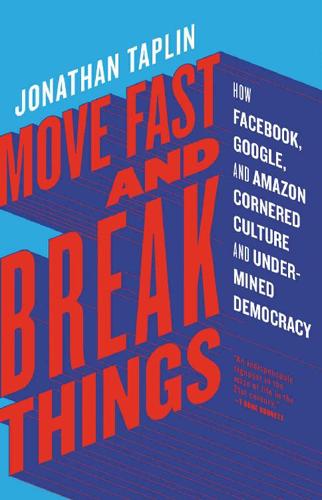
Move Fast and Break Things: How Facebook, Google, and Amazon Cornered Culture and Undermined Democracy
by
Jonathan Taplin
Published 17 Apr 2017
And even Bowie knew he was lucky to have started his career in a predigital age, before music had become a commodity, telling a reporter in 2002, “Music itself is going to become like running water or electricity. So it’s like, just take advantage of these last few years because none of this is ever going to happen again.” When you think that Bob Dylan’s first album sold four thousand copies in two years, you realize that today his contract would never have been renewed. The techno-utopians like Alexis Ohanian told us that the Internet would “kill all the gatekeepers.” But what’s really happened is that a new set of gatekeepers—Google and Facebook—has replaced the old. Google’s market capitalization is $532 billion. Time Warner’s is $61 billion. The balance of power in the world of entertainment has shifted to monopoly platforms.
…
How far is this from Jefferson’s great inspiration, the Greek philosopher Epicurus, who defined the good life and freedom in the following terms? • The company of good friends. • The freedom and autonomy to enjoy meaningful work. • The willingness to live an examined life with a core faith or philosophy. If we think about the world techno-utopians are envisioning, it may be hard for the average citizen to have the freedom and autonomy to enjoy meaningful work. Would a life where your daily existence relied on driving four hours a day for Uber, serving as a concierge for your Airbnb guests in the spare room, and spending your evenings doing crowdwork on Amazon’s Mechanical Turk meet Epicurus’s test?
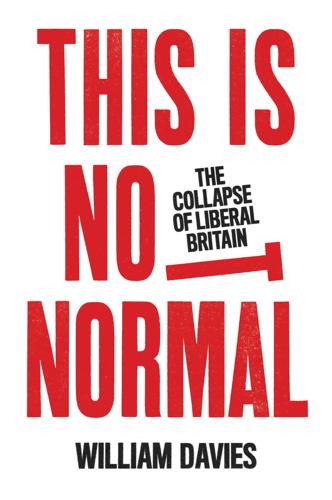
This Is Not Normal: The Collapse of Liberal Britain
by
William Davies
Published 28 Sep 2020
This fulfils a liberal dream of allowing labour to find its ‘correct’ price in an entirely flexible, maximally liquid market, just as financial markets do for shares and bonds according to the Efficient Markets Hypothesis. I would expect this argument to gain new momentum over the coming years, advanced as much by those with a regressive fantasy of liberal Victoriana as by those with a techno-utopian fantasy of capitalist upheaval. Outside of Nigel Farage’s local pub, where people dream that their warm beer breaks EU rules and take pride in refusing to wear seatbelts on their drive home, modern societies are never unregulated. The irony of liberalism after Brexit is that, in sticking up two fingers to the regulatory power of the unelected technocrats in Brussels, it probably hastens the regulatory advance of invisible and unspoken algorithms in Silicon Valley corporations.
…
This is where various elements of the right currently converge, around the idea of increased employment through reduced workplace rights. There are various aggressive neoliberal aspects of the current Tory policy agenda that haven’t gone anywhere. There is one emerging economic model that ties all of these strands together, satisfying regressive nineteenth-century liberals, techno-utopian libertarians, communitarian conservatives, corporate elites and policy pragmatists equally. This is the cluster of platforms and services known as the ‘sharing economy’. These seek to push a rentier mentality into more and more corners of society, making the ownership of assets (homes, bedrooms, cars, capital equipment, free time, and so on) the condition of an income.

Orwell Versus the Terrorists: A Digital Short
by
Jamie Bartlett
Published 12 Feb 2015
Why, charged the Intelligence and Security Committee, who conducted an investigation into the affair, hadn’t this been picked up? Because of the processing power of modern computing and the explosion of data, people have come to expect that every bit of information and data can be collected and analysed, and things can be spotted in advance. This sort of techno-utopianism is questionable in principle and unworkable in practice. There are thirteen billion direct messages sent on Facebook alone every single day. Trying to spot the one that clearly hints at criminal intent is not an easy task – less like spotting the terrorist needle in the haystack, and more like finding a specific piece of hay.
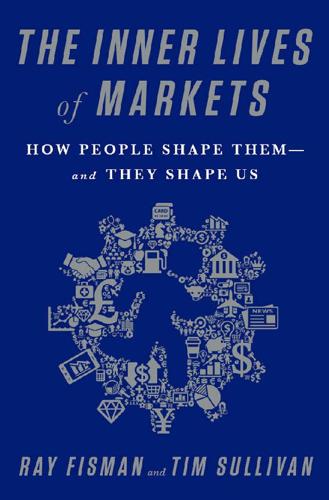
The Inner Lives of Markets: How People Shape Them—And They Shape Us
by
Tim Sullivan
Published 6 Jun 2016
Essentially, once you find yourself outside the frictionless world of perfect markets, there’s a potential role for an intermediary to sit between the two sides.14 Lots of market evangelists have taken the notion that better technology and more nuanced feedback algorithms will end the informational problems that were the focus of Akerlof, Spence, and other information economists. One article on the libertarian Cato Institute’s website recently trumpeted in its title that we are approaching “The End of Asymmetric Information.” We doubt it. They’re confronting some pretty thorny information and enforcement challenges, and it’s far from clear that the techno-utopians will win the day. A wronged textile merchant from medieval times or a disgruntled homeowner from 1980 has nothing on the parental anxieties of the twenty-first century. This has led to enormous inefficiencies in the market for babysitters, with parents focused on a narrow set of sitter options: the neighbors’ kids, a friend’s sitter, or a bonded babysitting service.
…
Although proponents of the sharing economy tout its ability to reduce market frictions, the only way they’re going to make the kinds of profits they (and their investors) want is to create new ones. That’s something they’re not interested in talking about to the public at large, or to their representatives in government. This leaves a bit of a paradox in the techno-utopian free-market narrative. A great entrepreneur will use technology to create a fantastic new market, then will use technology to set up market frictions to protect it. As entrepreneur and venture capitalist Peter Thiel wrote in the Wall Street Journal, “Competition Is for Losers.”12 Don’t get us wrong.
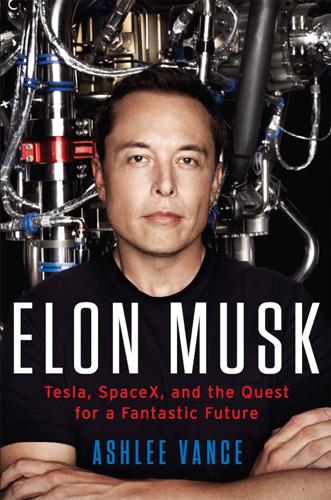
Elon Musk: Tesla, SpaceX, and the Quest for a Fantastic Future
by
Ashlee Vance
Published 18 May 2015
Musk had struck me as a well-intentioned dreamer—a card-carrying member of Silicon Valley’s techno-utopian club. This group tends to be a mix of Ayn Rand devotees and engineer absolutists who see their hyperlogical worldviews as the Answer for everyone. If we’d just get out of their way, they’d fix all our problems. One day, soon enough, we’ll be able to download our brains to a computer, relax, and let their algorithms take care of everything. Much of their ambition proves inspiring and their works helpful. But the techno-utopians do get tiresome with their platitudes and their ability to prattle on for hours without saying much of substance.
…
But the techno-utopians do get tiresome with their platitudes and their ability to prattle on for hours without saying much of substance. More disconcerting is their underlying message that humans are flawed and our humanity is an annoying burden that needs to be dealt with in due course. When I’d caught Musk at Silicon Valley events, his highfalutin talk often sounded straight out of the techno-utopian playbook. And, most annoyingly, his world-saving companies didn’t even seem to be doing all that well. Yet, in the early part of 2012, the cynics like me had to take notice of what Musk was actually accomplishing. His once-beleaguered companies were succeeding at unprecedented things. SpaceX flew a supply capsule to the International Space Station and brought it safely back to Earth.

The Contrarian: Peter Thiel and Silicon Valley's Pursuit of Power
by
Max Chafkin
Published 14 Sep 2021
These seasteads, as adherents described the open-water settlements, would be outside the control of any government, giving residents the freedom to experiment with illicit substances and enjoy any other pleasure currently denied by the world’s two-hundred-odd countries. He teamed up with a couple of other techno-utopians to write a paper, which he posted online, explaining the ideology and practicality of “water-based lifestyles.” It covered the pros and cons of incinerating human feces, the possibility of using inexpensive Chinese-made cruise missiles to defend against attacks from hostile naval fleets, and the promise of creating a society free of taxation.
…
They responded to and amplified the blog posts that his surrogates published. They stalked his inner circle on Twitter and adopted his own language as their own. A young army of Thiel acolytes—most of whom simply wanted to start companies and get rich, ideally with Thiel’s money—started talking like techno-utopians or contrarians. They had their own language—many identified as “rationalists”—and their own literary canon. It included Tolkien and Rand, of course, along with arcane texts that venerated technology, among them Harry Potter and the Methods of Rationality, a 600,000-word fan fiction epic that adapted J.
…
“If you were to apply the standards you have in biotech to video games, you would not have a video game industry,” he said. When a journalist asked about Paul, Thiel could barely muster any enthusiasm—not for Paul, nor for democracy itself. “I’m sort of skeptical of how much voting actually works,” he said, before giving a techno-utopian answer that seemed straight out of Yarvin’s Moldbug. “One of the things I like about technology is that when technology’s un-regulated you can change the world without getting approval from other people. At its best, it’s not subject to democratic control, and not subject to the majority, which I think is often hostile to change.”

Whole Earth: The Many Lives of Stewart Brand
by
John Markoff
Published 22 Mar 2022
Streeter and Turner also ignored the degree to which he felt that his effort in building a workable, not-for-profit digital culture upon the WELL had been a failure. They also failed to make the distinction—made later by Jonathan Taplin in his 2017 book, Move Fast and Break Things: How Facebook, Google, and Amazon Cornered Culture and Undermined Democracy—between Brand’s original technological utopianism and Silicon Valley–centered digital libertarianism that emerged with a group of Stanford-educated young Turks known as the PayPal Mafia during the dot-com era. In Whole Earth Discipline, Brand made a decidedly non-neoliberal argument: “The scale of the climate challenge is so vast that it cannot be met solely by grassroots groups and corporations, no matter how Green.
…
Among the first to catch wind of the significance of cyberspace and personal computing, in the 1980s he helped create an early online virtual community. Although he was largely an observer of the technical community that created Silicon Valley, his various ideas and crusades around the Whole Earth Catalog, which he created in the fall of 1968, foreshadow and resonate with the techno-utopian culture that the Valley spawned. He went on to rethink modern architecture from a biological perspective and later publicly broke with the environmental movement over nuclear power and GMO food. Both as a young man and more recently, he first figuratively and then literally set out to “play God,” initially by making the claim that humans had the power of gods and then during the past decade by creating an organization to save and restore endangered species with modern biotechnology.
…
Within, O’Neill proposed a vision of a vast industrial-scale space-based platform for the exploration and colonization of the universe, a concept that horrified many of the Whole Earth Catalog’s devotees. The issue, which also featured an article by E. F. Schumacher, of Small Is Beautiful fame, and a transcription of a conversation between Governor Brown and Bateson, would drive a wedge between Brand and some of his closest environmental allies and cement his reputation as a “techno-utopian.” O’Neill laid out his argument that there was no good reason why an off-the-planet colony shouldn’t be an established fact by the year 2000. Brand added a full-throated defense of the idea in his introduction: “Space Colonies show promise of being able to solve, in order, the Energy Crisis, the Food Crisis, the Arms Race, and the Population Problem. . . .
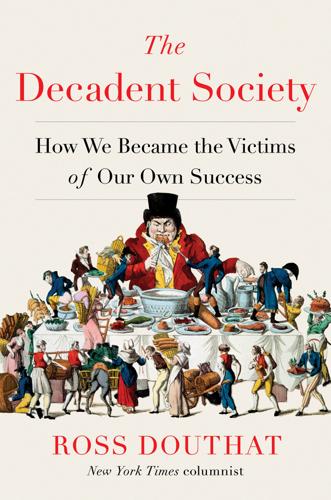
The Decadent Society: How We Became the Victims of Our Own Success
by
Ross Douthat
Published 25 Feb 2020
Since robots harvested the food we needed and built our houses in self-chosen tribal groups with independently chosen government structures, humans were free to imagine and create utopian worlds with more art and research than ever before. One of the themes of this book has been the narrowing of ideological horizons, the way that both political utopianism and religious idealism have lost their grip on the contemporary imagination. But a kind of pure techno-utopianism, infused with secularized religion, plainly still exists among the people who work at the existing technological cutting edge: they don’t believe God or politics can save us, but some of them still think that science alone will suffice to do the trick; that we can be as gods through the power of digital technology alone, and that if they just hang on long enough to see it, their bodies will be transformed, their minds uploaded, and their very selves freed, empowered, and near-permanently preserved.
…
(Burning Man almost gets you there, but not quite…) Maybe that’s impossible; the Western intelligentsia tiptoed in that direction in the spoon-bending, “What’s your sign?” days of 1970s religion, but nowadays our intellectuals seem embarrassed by anything too frankly supernaturalist, and our Silicon Valley overlords prefer to launder their religious impulses through techno-utopianism rather than New Age rituals. Moreover, the last extended elite flirtation with neo-paganism reached a horrific apotheosis in Nazi Germany, and today’s elite is justifiably frightened of releasing those dark forces—meaning that they might cling to the egalitarian aspect of Christianity even if it’s part of a strained and incoherent world picture, rather than risking the aristocratic, decidedly inegalitarian temptations that can creep in when you make the natural world your moral standard.

Your Computer Is on Fire
by
Thomas S. Mullaney
,
Benjamin Peters
,
Mar Hicks
and
Kavita Philip
Published 9 Mar 2021
Latest-generation web cameras incapable of recognizing the faces of African-American users (yet functioning flawlessly with Caucasian users)?1 Bad training data. Rampant and historically unprecedented growth of corporate surveillance? Terms of usage. No matter the problem, it seems, a chorus of techno-utopian voices is always at the ready to offer up “solutions” that, remarkably enough, typically involve the same strategies (and personnel) as those that helped give rise to the crisis in the first place. We can always code our way out, we are assured. We can make, bootstrap, and science the shit out of this.
…
The contributors to this volume—scholars who approach computing and new media from a variety of critical perspectives derived from humanistic, social scientific, and STEM disciplines—have come together to issue a manifesto that can be summarized as follows: Your computer is on fire. Humankind can no longer afford to be lulled into complacency by narratives of techno-utopianism or technoneutrality, or by self-assured and oversimplified evasion. Every time we hear the call of a lullaby—soothing words such as “human error,” “virtual reality,” “the Cloud,” or others meant to coax us back to sleep, leaving the “adults” to continue driving—our response should be a warning siren, alarming us and those around us into a state of alertness and vigilance.
…
Like Pyne’s literal flaming planet, our planetary picture of computational systems run amok can be improved—with economic regulation, collaborative education, and some geopolitical gearshifts. Combining the work of sixteen researchers into a book that we hope is more than the sum total of our individual findings, we offer not just a frightening warning but some well-tested escape routes. Errors and Approximations Underneath the euphoric techno-utopian pronouncements as well as the romanticist technophobic tirades that rage across our planet in the early twenty-first century are some simple errors. Humanists and technologists are equally susceptible to these. When Apple’s user interface design registers global applause and Steve Jobs tells a graduating class that the humanities are key to good design, professors of poetry release a satisfied sigh, expecting students to flock in to appreciate the timeless beauty of iambic pentameter.

Active Measures: The Secret History of Disinformation and Political Warfare
by
Thomas Rid
Dirty tricksters could now reach their target audiences directly. Cryptome, a radical transparency site and in effect the world’s first leak portal, was created in 1996 by the married couple John Young and Deborah Natsios to call attention to dual-use technology. Young had been active on the cypherpunk list, a loose group of technology utopians with an antigovernment, anarchist bent. From West Texas, son of an oil worker, he became an architect in Manhattan and lived on the Upper West Side. Yet for decades, Young operated Cryptome on the tiny budget of less than $2,000 per year.1 His vision was rather romantic: “Cryptome, aspiring to be a free public library, accepts that libraries are chock full of contaminated material, hoaxes, forgeries, propaganda,”2 Young told one interviewer in 2013.
…
A diffuse group of pro-technology, anti-intelligence activists emerged in the late 1970s, gathered momentum in the late 1990s, and would unleash torrents of raw political energy another decade after that. Early hippie activists tapped into the power of First Amendment activism in the United States, later incorporating strains of techno-utopianism, hacker subculture, cyberpunk, anarchism with a libertarian bent, anti-authoritarianism, and an obsession with encryption and anonymity. Many early crypto and anonymity activists became known as the “cypherpunks,” after a famous email list by that name. The second issue of Wired magazine, issued in May 1993, featured three of these “crypto rebels,” faces covered by white plastic masks with keys printed on their foreheads, bodies wrapped in the American flag.
…
The Fifth Estate was a volunteer organization, with new headquarters established at 2000 P Street NW, just off Dupont Circle in Washington, D.C. The Fifth Estate grew out of late-1960s counterculture, and was especially inspired and modeled on the Whole Earth Catalog, then a cult publication. Produced in the San Francisco Bay Area by Stewart Brand, an iconic, technology-embracing hippie maven, the Whole Earth Catalog was an early techno-utopian vision of back-to-the-land living that embraced cybernetic feedback loops, community, wholeness, flattened hierarchies, and the motto “access to tools.” Brand’s catalog would become a prototypical social media platform (and later became the first actual social media platform when it was taken online, in 1984, as the Whole Earth ’Lectronic Link, or WELL).

Driverless: Intelligent Cars and the Road Ahead
by
Hod Lipson
and
Melba Kurman
Published 22 Sep 2016
Driverless Car of the Future, advertisement for “America’s Electric Light and Power Companies,” Saturday Evening Post, 1950s. Source: The Everett Collection Figure 6.3 The electronic highway in action. Source: Radio Corporation of America (RCA), courtesy the David Sarnoff Library Figure 6.4 The “Turbine-Powered” GM Firebird concept car entering an autopilot lane. This techno-utopian fantasy was set in 1976 but created in 1956 for GM’s Motorama Exhibit. Source: General Motors Figure 6.5 The History of Driverless Cars: Key milestones in the evolution of autonomous vehicles. Figure 8.1 An infamous stretch of road in the DARPA Grand Challenge of 2005 called Beer Bottle Pass, approximately seven miles from the finish line, featured over twenty twists and turns.
…
As described by its advertising, GM’s concept car, the Firebird, “anticipates the day when the family will drive to the super-highway, turn over the car’s controls to an automatic, programmed guidance system and travel in comfort and absolute safety at more than twice the speed possible on today’s expressways.”15 The Firebird, despite the appeal of its sleek lines and single, vertical rear fin, would be GM’s final high-profile foray into driverless cars for decades. Figure 6.4 The “Turbine-Powered” GM Firebird concept car entering an autopilot lane. This techno-utopian fantasy was set in 1976 but created in 1956 for GM’s Motorama Exhibit. Source: General Motors Throughout the 1960s and 1970s, other researchers continued to refine variants of automated highways using GM’s and RCA’s basic system of electrical cables, metal coils, and magnetic sensors. In the United Kingdom, the Transport and Road Research Laboratory tested a driverless Citroen DS that was guided by cables embedded in the surface of a test track.16 In the United States during the 1960s, Ohio State emerged as a leading research hub for a field of automotive engineering that, by then, was known as automated vehicle guidance and control.

Falter: Has the Human Game Begun to Play Itself Out?
by
Bill McKibben
Published 15 Apr 2019
In this case all due care means much more scrupulous caution than would be necessary for dealing with Ebola or plutonium.”21 Why are people so scared? Let the Swedish philosopher Nick Bostrom explain. He’s hardly a Luddite. Indeed, he gave a speech in 1999 to a California convention of “transhumanists” that may mark the rhetorical high water of the entire techno-utopian movement. Thanks to ever-increasing computer power and ever-shinier biotech, he predicted then, we would soon have “values that will strike us as being of a far higher order than those we can realize as unenhanced biological humans,” not to mention “love that is stronger, purer, and more secure than any human has yet harbored,” not to mention “orgasms … whose blissfulness vastly exceeds what any human has yet experienced.”22 But fifteen years later, ensconced in Oxford as nothing less than the director of the Future of Humanity Institute, he’d begun to worry a great deal: “In fairy tales you have genies who grant wishes,” he told a reporter for The New Yorker.
…
If you were eventually able to engineer her to the point where dashing up Mount Everest presented no great challenge, you would have robbed the entire exercise of its point. Flow doesn’t increase if you have more ability; it simply requires challenge sufficient to your ability. We are already capable of being as absorbed and engaged as we ever could be. We’re good enough. 17 One reason that techno-utopians don’t worry about the loss of human meaning is because they’re not particularly attached to humans. There are, to be sure, plenty of doctors hoping for new ways to treat human suffering. But the streak of misanthropy that runs through the conversation of the digital and technological elite is hard to miss: Human brains, the artificial intelligence pioneer Marvin Minsky once explained, are simply “machines that happen to be made out of meat.”1 Robert Haynes, president of the Sixteenth International Congress of Genetics, said in his keynote address that “the ability to manipulate genes should indicate to people the very deep extent to which we are biological machines.”

The Sirens' Call: How Attention Became the World's Most Endangered Resource
by
Chris Hayes
Published 28 Jan 2025
Translated by James H. Nicholas, Jr. Ithaca, NY: Cornell University Press, 1980. Lippmann, Walter. The Phantom Public. New York: Macmillan, 1927. Mandela, Nelson. Long Walk to Freedom: The Autobiography of Nelson Mandela. Boston: Back Bay Books, 1995. Marantz, Andrew. Antisocial: Online Extremists, Techno-Utopians, and the Hijacking of the American Conversation. New York: Penguin, 2020. Marx, Karl. Capital: A Critique of Political Economy, Volume 1. Translated by Ben Fowkes. New York: Penguin, 1992. ———. Economic and Philosophic Manuscripts of 1844. Mineola, NY: Dover, 2012. Marx, Karl, and Friedrich Engels.
…
Tweet as Rapper Praises Hitler,” NBC News, December 1, 2022, accessed February 3, 2024, www.nbcnews.com/politics/congress/house-judiciary-republicans-delete-kanye-elon-trump-tweet-rapper-prais-rcna59654. BACK TO NOTE REFERENCE 61 For an incredible book-length treatment of how these dynamics work, see: Andrew Marantz, Anti-Social: Online Extremists, Techno-Utopians, and the Hijacking of the American Conversation (New York: Penguin, 2019). BACK TO NOTE REFERENCE 62 Amanda Ripley, High Conflict: Why We Get Trapped and How We Get Out (New York: Simon & Schuster, 2021). BACK TO NOTE REFERENCE 63 Yes, the feeding here is a bit backward when you consider the original metaphor of trolling as fishing.

What's Wrong With Economics: A Primer for the Perplexed
by
Robert Skidelsky
Published 3 Mar 2020
To the economist this means a state of perfect efficiency: the efficiency of a perfectly frictionless machine. They have a powerful ally in computer technology, able to assemble and process masses of data in ‘real time’. This promises to realise, at no distant date, the economist’s vision of the human as a perfect calculating machine. The writings both of neoclassical economists and technological utopians reveal the prescriptive nature of their callings. They are allies in their ambition to ‘make the crooked timber of humanity straight’. So economists’ theories are meant to inspire greater efficiency. There is some evidence that the prescription works. In a marvellous book, I Spend Therefore I Am, Philip Roscoe (2014) reports studies which show that students of economics were markedly more calculating than those of other subjects, though whether it was their calculating nature which drew them to economics, or economics which made them more calculating, is not clear.
…
That people may actually behave more and more as economists tell them they do behave? This would be an ironic inversion of Bayes’ theorem, with the objective reality coming increasingly to resemble the subjective bets economists place on humankind. To transform human nature, not just to describe it, has always been the dream of social engineers, as today it is that of the techno-utopians. It is the foundation of the doctrine of progress. But how far can it, or should it, be pressed, before humans cease to exist in a recognisable form? And is there something irreducibly human which will resist the ambitions of the engineers of the soul? A better map The two main problems we have identified in this book are related: insufficient generality of premises (epistemology) and lack of institutional mapping (ontology).

Utopia Is Creepy: And Other Provocations
by
Nicholas Carr
Published 5 Sep 2016
“Computing is not about computers any more,” wrote MIT’s Nicholas Negroponte in his 1995 bestseller Being Digital. “It is about living.” By the turn of the century, Silicon Valley was selling more than gadgets and software. It was selling an ideology. The creed was set in the tradition of American techno-utopianism, but with a digital twist. The Valleyites were fierce materialists—what couldn’t be measured had no meaning—yet they loathed materiality. In their view, the problems of the world, from inefficiency and inequality to morbidity and mortality, emanated from the world’s physicality, from its embodiment in torpid, inflexible, decaying stuff.
…
Modern media needed its own medium, the voice that would explain its transformative power to the world, and he would take that role. The tension between McLuhan’s craving for earthly attention and his distaste for the material world would never be resolved. Even as he came to be worshipped as a techno-utopian seer in the mid-sixties, he had already, writes Coupland, lost all hope “that the world might become a better place with new technology.” He heralded the global village, and was genuinely excited by its imminence and its possibilities, but he also saw its arrival as the death knell for the literary culture he revered.

The Industries of the Future
by
Alec Ross
Published 2 Feb 2016
Instead of radiation from an external source, which damages healthy living tissues along with cancer, these robots release a radio beam inside the body that emits radiation into cancer cells with pinpoint accuracy. Using 3D printing, a medical engineer can even create a customized implant that can travel through a patient’s body to fit perfectly where it’s needed. Despite the promise of robot-assisted surgery, it is important not to jump to techno-utopianism. Allegations of unreported injuries from robotic surgery are troublingly common. The Journal for Healthcare Quality has reported 174 injuries and 71 deaths related to da Vinci surgeries. With the pressure on insurance companies and health care providers to lower costs, I worry that there will be market forces pushing robots into the operating room at times when a patient is better served by a human being.
…
At last measure, the estimated size of the global sharing economy was $26 billion, and it’s growing fast, with some estimates projecting it will be more than 20 times larger in size by 2025. Part of why Chesky’s story is cloying is that Airbnb is now a destination for castles in addition to couches. When I last checked, there were more than 600 castles available, with prices often approaching $10,000 a night. There is absolutely nothing wrong with this, but the techno-utopianism behind its origins and narrative has long been passed by economic reality. In some cases, the sharing economy has turned what might have once been a casual favor into a financial transaction. That is hardly the stuff of “sharing.” In most cases, sharing-economy businesses are just businesses.
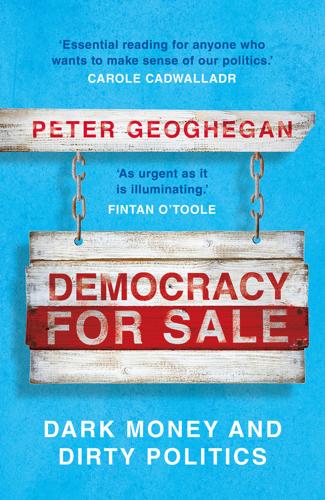
Democracy for Sale: Dark Money and Dirty Politics
by
Peter Geoghegan
Published 2 Jan 2020
Evaluating Podemos and Movimento 5 Stelle’s online decision-making platforms’, Sage Journals, November 2019. 12 Edward Malnick, ‘Nigel Farage interview: “At the end of this campaign the Brexit Party will be a lot bigger than the Conservatives”’, Telegraph, May 2019. 13 Darren Loucaides, ‘Inside the Brexit Party’s general election war machine’, Wired, October 2019. 14 Darren Loucaides, ‘Building the Brexit party: how Nigel Farage copied Italy’s digital populists’, Guardian, May 2019. 15 Steve Roberts, ‘The Brexit Party has betrayed us’, Spiked, December 2019. 16 Darren Loucaides, ‘Building the Brexit party: how Nigel Farage copied Italy’s digital populists’, Guardian, May 2019. 17 Darren Loucaides, ‘What Happens When Techno-Utopians Actually Run a Country’, Wired, February 2019. 18 Alberto Nardelli and Craig Silverman, ‘Italy’s Most Popular Political Party Is Leading Europe In Fake News And Kremlin Propaganda’, Buzzfeed, November 2016. 19 ‘Italian lawmaker lambasted for anti-Semitic tweet’, The Times of Israel, January 2019. 20 Darren Loucaides, ‘What Happens When Techno-Utopians Actually Run a Country’, Wired, February 2019. 21 Darren Loucaides, ‘In Italy, Five Star Movement’s war on journalism is picking up pace’, Columbia Journalism Review, June 2019. 22 Jason Horowitz, ‘The Mystery Man Who Runs Italy’s “Five Star” From the Shadows’, New York Times, February 2018. 23 ‘The failures of the Five Star Movement’s Rousseau’, Privacy International, April 2019. 24 Darren Loucaides, ‘Building the Brexit party: how Nigel Farage copied Italy’s digital populists’, Guardian, May 2019. 25 Ibid. 26 Ibid. 27 Matt Honeycombe-Foster, ‘Gordon Brown demands probe into funding of Nigel Farage’s Brexit Party’, PoliticsHome, May 2019. 28 ‘Electoral watchdog to review Brexit Party finances after Gordon Brown raises concerns over PayPal payments from abroad’, ITV, May 2019. 29 James Randerson, ‘“Dirty money” claims “ridiculous,” says Brexit Party chair’, Politico, May 2019. 30 Tom Payne, ‘Top Tory donor gives £200,000 to Nigel Farage’s surging Brexit Party and defiantly blasts “the stormtroopers of the politically correct Brexit reversal conspiracy”’, Daily Mail, May 2019. 31 Dan Bloom, ‘Squirming Brexit Party chief repeatedly fails to say if party takes foreign cash’, Mirror, May 2019. 32 Gabriel Pogrund, Tom Harper and Caroline Wheeler, ‘Brexit Party fundraiser is “Posh George”, once jailed in US after money-laundering sting’, The Times, May 2019. 33 Ibid. 34 Rob Merrick, ‘Farage’s fundraising for Brexit Party allows foreign donors to “break rules”, warns elections watchdog’, Independent, May 2019. 35 ‘Brexit Party “at high risk” of accepting illegal donations’, BBC, June 2019. 36 Sam Bright, ‘The new Arron Banks?
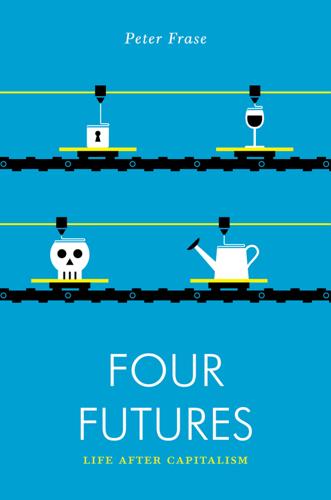
Four Futures: Life After Capitalism
by
Peter Frase
Published 10 Mar 2015
My intention is not to claim that one future will automatically appear through the magical working out of technical and ecological factors that appear from outside. Instead, it is to insist that where we end up will be a result of political struggle. The intersection of science fiction and politics is these days often associated with the libertarian right and its deterministic techno-utopian fantasies; I hope to reclaim the long left-wing tradition of mixing imaginative speculation with political economy. The starting point of the entire analysis is that capitalism is going to end, and that, as Luxemburg said, it is either “transition to socialism or regression into barbarism.”27 So this thought experiment is an attempt to make sense of the socialisms we may reach if a resurgent Left is successful, and the barbarisms we may be consigned to if we fail.

Radicals Chasing Utopia: Inside the Rogue Movements Trying to Change the World
by
Jamie Bartlett
Published 12 Jun 2017
Already millions of people use mood-altering drugs, substances to boost muscle mass or selectively erase memory, prenatal genetic screening and gene therapy. These don’t just ameliorate defects, but also enhance us. They were all viewed as unnatural, and immoral, not so long ago. But the science is not almost there. Like every techno-utopian, Zoltan appears to flit with misleading ease between science and fiction, taking any promising piece of research as proof of victory. The three main transhumanist technologies that excite transhumanists like Zoltan are life extension, cryonic freezing and mind uploading. Each of them is advancing quickly.
…
These issues will be, within a decade, major political questions as important as immigration or education are now. Zoltan is doing us all a favour by running his campaign. He’s the only political candidate trying to imagine what politics and policies might be in a world of continued and accelerating technological advance.* He might force other politicians to start thinking about it. But Zoltan’s techno-utopianism comes at a cost. Transhumanists’ exaggerated claims about the potential of technology to solve our most challenging tasks mean they ignore current problems and overlook the negative consequences of rapidly advancing technology. Politics involves trade-offs, difficult choices and compromises.

The Future Is Faster Than You Think: How Converging Technologies Are Transforming Business, Industries, and Our Lives
by
Peter H. Diamandis
and
Steven Kotler
Published 28 Jan 2020
Instead, today’s biggest dangers are all ecological in nature: water crises, biodiversity loss, extreme weather, climate change, and pollution. Over the next few sections, we’ll examine how technology is helping us tackle the WEF’s top five concerns, but this doesn’t happen automatically. Ours is not a techno-utopian argument. Solving our planet’s ecological woes requires technology, for certain, but it also demands one of the largest cooperative efforts in history. If we can learn to work together like never before, we like our chances. But in light of these recent reports, sooner rather than later. And this brings us to Dean Kamen.
…
The combination of AI, 5G and AR/VR will provide low-cost education, entertainment, and healthcare to nearly every human on Earth, independent of geography or socioeconomic status. There are, of course, plenty of reasons to disagree with this idea. The gap between the wealthy and poor grows ever wider, and the notion that there’s an easy solution tucked inside our technology has been criticized as techno-utopian. But exponential technologies continue to march onward, and with them the ongoing process of demonetization and democratization. In January 2019, for example, a Wall Street Journal headline reported: “The world is quietly getting better.” The story that followed examined the latest World Bank numbers, which showed a continued decline in the number of individuals living below $2 per day, aka extreme poverty.
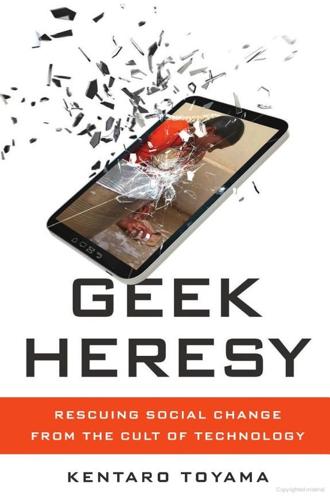
Geek Heresy: Rescuing Social Change From the Cult of Technology
by
Kentaro Toyama
Published 25 May 2015
So at the University of California, Berkeley, I met with dozens of professors who had studied different aspects of technology and society. I spent hours tracking down dusty, bound volumes in the stacks of libraries across campus. And here is what I learned. Theorists, despite many fine shades of distinction, fall roughly into four camps: technological utopians, technological skeptics, contextualists, and social determinists. These terms will be defined in a moment, but one thing that jumped out was that the scholars fought like Furies. For example, the economic historian Robert Heilbroner wrote, “That machines make history in some sense . . . is of course obvious.”2 This view is called technological determinism, because it implies that technology determines social outcomes.
…
As Captain Jean-Luc Picard explains in the movie First Contact, “the acquisition of wealth is no longer the driving force in our lives.”4 That is to say, in a few more centuries, advanced technology makes economics itself obsolete. Instead, people are free to focus on greater ends: “We work to better ourselves and the rest of humanity.” Star Trek is fiction, but its technological utopianism is very real. MIT Media Lab founder Nicholas Negroponte clearly shares it. So does Google chairman Eric Schmidt. In The New Digital Age, he and coauthor Jared Cohen wrote, “The best thing anyone can do to improve the quality of life around the world is to drive connectivity and technological opportunity.”5 And then there are technology cheerleaders like Clay Shirky, who shakes pom-poms for Team Digital in a book subtitled How Technology Makes Consumers into Collaborators.6 Many engineers and computer scientists also hold this view.
…
Many believe that every kind of problem can be solved by some invention, often one that is right around the corner. Whether the issue is poverty, bad governance, or climate change, they say things like, “[There] is no limit to human ingenuity,” and “When seen through the lens of technology, few resources are truly scarce.”7 Besotted with gadgets, technological utopians scoff at social institutions like governments, civil society, and traditional firms, which they pity as slow, costly, behind the times, or all of the above. I sympathize with the utopians because I was one myself. When I started the computer class in Nakkalbande, it was in the hopes that exposure to the technology would improve lives.

The Cosmopolites: The Coming of the Global Citizen
by
Atossa Araxia Abrahamian
Published 14 Jul 2015
His moral philosophy is based on self-ownership and enlightened self-interest; his nasal earnestness recalls an adolescent boy who has read Ayn Rand for the first time and cannot stand to keep the revolutionary potential of radical individualism to himself. In advocating for better living through technology, Ver channels a bizarre brand of techno-utopianism that the writer Evgeny Morozov calls “solutionism,” which Morozov defines as “an intellectual pathology that recognizes problems as problems based on just one criterion: whether they are ‘solvable’ with a nice and clean technological solution at our disposal.” These problems include funding infrastructure, making medical research more efficient, and even death.

These Strange New Minds: How AI Learned to Talk and What It Means
by
Christopher Summerfield
Published 11 Mar 2025
The AI research company OpenAI had just developed a language model, GPT-3, that was able to reply to just about any query with plausible, humanlike text. The company’s co-founder, Sam Altman, was interviewed on the award-winning New York Times podcast The Ezra Klein Show. Buoyed beyond even his habitual techno-utopianism by GPT-3’s astonishing success, Altman predicted: ‘In ten years, I think we will have basically chatbots that work for an expert in any domain you’d like. So, you will be able to ask an expert doctor, an expert teacher, an expert lawyer whatever you need and have those systems go accomplish things for you.’
…
Many are just a little bit too enamoured of Elon Musk. Many live around the Bay Area, which has long fostered an excitable culture of disruptive innovation, and remains the beating heart of progress in AI. Most are young and affluent, and would personally benefit from lower taxes, or a bonfire of business regulations. So techno-utopianism may be a convenient philosophy for well-heeled young tech entrepreneurs to buy into – it is an elite form of populism, like Breitbart for the blockchain classes.[*3] But there is no doubt that many genuinely do believe that AI is going to save us all, and that, in the final words of the manifesto, ‘it’s time to build’.
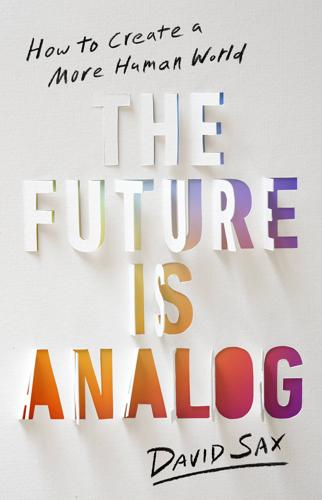
The Future Is Analog: How to Create a More Human World
by
David Sax
Published 15 Jan 2022
The origins of the smart city date back to the 1930s and the rise of both automobiles and modernist design, when legendary architects such as Frank Lloyd Wright and Le Corbusier presented their sweeping visions for the future. Wright’s Broadacre City, Corbusier’s Radiant City, and, later, Buckminster Fuller’s insane plans to cover whole swaths of cities with giant glass structures were marvels of futurist technological utopianism. Each reflected the aesthetics of its creator, but they shared similar traits, including clusters of identical skyscrapers, broad boulevards and motorways, flying machines and pods, manicured lawns, and ample parking. In the century since, smart city designs have become more digitally driven but no less idealistic.
…
Digital education strips school down to specific subjects: math, science, reading, writing, engineering, and so on. The computer favors a one-way flow of information—from the teacher out to the pupils, who are expected to make sense of it from the other end of the Wi-Fi signal. It is a system designed to send information, not for learning. The techno-utopianism of the digital future in education is driven by many things: optics, fear of falling behind, greed, a drive for cost savings and efficiency, a politicized hatred of teachers’ unions’ bargaining power. But rarely, said Cuban, has the push for the digital future of education been driven by hard evidence of what works best for the broad goals of education’s place in society.
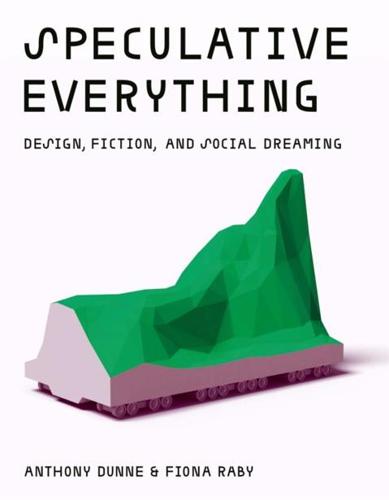
Speculative Everything: Design, Fiction, and Social Dreaming
by
Anthony Dunne
and
Fiona Raby
Published 22 Nov 2013
Critical design can often be dark or deal with dark themes but not just for the sake of it. Dark, complex emotions are usually ignored in design; nearly every other area of culture accepts that people are complicated, contradictory, and even neurotic, but not design. We view people as obedient and predictable users and consumers. Darkness as an antidote to naive techno-utopianism can jolt people into action. In design, darkness creates a frisson that excites and challenges. It is more about the positive use of negativity, not negativity for its own sake but to draw attention to a scary possibility in the form of a cautionary tale. A good example of this is Bernd Hopfengaertner's Belief Systems (2009).

Automation and the Future of Work
by
Aaron Benanav
Published 3 Nov 2020
Unless social struggles organize themselves around this historic task, the conquest of production, they will not break through to a new synthesis of what it means to be a human being—to live in a world devoid of poverty and billionaires, of stateless refugees and detention camps, and of lives spent in drudgery, which hardly offer a moment to rest, let alone dream. Movements without a vision are blind; but visionaries without movements are much more severely incapacitated. Without a massive social struggle to build a post- scarcity world, late-capitalist visionaries will remain mere techno-utopian mystics. Notes Chapter 1. The Automation Discourse 1 See Edward Bellamy’s utopia, Looking Backward, 2000–1887, Oxford, 2007 [1888], p. 68. 2 See, respectively, Daniela Hernandez, “How to Survive a Robot Apocalypse: Just Close the Door,” Wall Street Journal, November 10, 2017; David Autor, “Why Are There Still So Many Jobs?
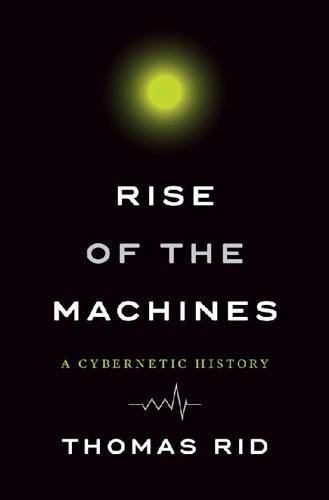
Rise of the Machines: A Cybernetic History
by
Thomas Rid
Published 27 Jun 2016
Crypto anarchy embodied the unshakable cybernetic faith in the machine. It combined Wiener’s hubristic vision of the rise of the machines with Brand’s unflinching belief that computers and networked communities would make the world a better place. A direct line connects the techno-utopianism of Timothy Leary to the techno-utopianism of Timothy May, cyberpunk to cypherpunk. Leary felt empowered by the personal computer. For May, just one ingredient was missing: the power of prime numbers. “Cryptography provides for ‘personal empowerment,’” he wrote in 1999.97 The cypherpunks had not a trace of doubt that crypto itself was libertarian, that increasing its use would steadily increase degrees of freedom available to the individual.

The People vs Tech: How the Internet Is Killing Democracy (And How We Save It)
by
Jamie Bartlett
Published 4 Apr 2018
Economic to political to cultural I could stop here, but the next and perhaps final stage is when economic power morphs into what Marxists sometimes call ‘cultural hegemony’: where domination can be achieved through controlling the ideas and assumptions available to the public. The idea – associated with the Italian Marxist Antonio Gramsci and his criticism of capitalism – is worth considering here, because there is little doubt that a techno-utopian view of the world has infected society. All technology encodes within it certain values and assumptions about how the world works. Gutenberg’s press was more than a mere printing machine – it popularised the ideal of free information exchange. Similarly, the nineteenth-century penny press papers created a new demand for gossip and a hard criticism of power.

IRL: Finding Realness, Meaning, and Belonging in Our Digital Lives
by
Chris Stedman
Published 19 Oct 2020
And like the polemicists of authenticity, when it comes to helping us make sense of our digital lives more broadly, these experts often speak in generalized extremes. Most of us recognize the split between these experts’ polarized groups: cheerleaders and doomsday prophets. Social media’s champions argue the internet is bringing us closer together and making our world smaller and vaster all at once, in all the best ways. These technological utopians believe the internet is enhancing our quality of life to a previously unimaginable degree, opening up endless possibilities for authentic self-expression and the dissemination of information. This side of the conversation speaks of social media with the wide-eyed wonder of an astronaut, the affection of a poet, sometimes even the fervor of a prophet, and it’s hard not to get swept up in their conviction that our digital platforms are making us more efficient, more interconnected, and more able to express ideas in striking new ways.
…
Responding to critics of his day who figured that technological advances—which, in the 1830s, included a steel plow for farming, a type of sewing machine, and a more sophisticated bicycle—would harm our “spiritual nature” and turn us into machines, Walker argued instead that “machines would free our minds by freeing our bodies from tedious labor,” writes Taylor. Thus liberated, Walker suggested, we can all become artists, philosophers, and poets. (I’m sure my grandpa will be thrilled.) This refrain continues today, with techno-utopians arguing that technology will free us up to do the things that truly matter. In theory this ought to be true. In This Life, Yale University’s Martin Hägglund explains that through technological innovation, we should be able to “decrease our realm of necessity (the time required to keep ourselves alive) and increase our realm of freedom (the time available for activities that we count as ends in themselves, which includes time for engaging the question of what matters to us and which activities we should count as ends in themselves).”

Collaborative Futures
by
Mike Linksvayer
,
Michael Mandiberg
and
Mushon Zer-Aviv
Published 24 Aug 2010
If so, it is a terrifying one in which anonymity and structurelessness permits total absolution of social responsibility, terrorizing of innocent outsiders, and harassment of those who provide public feedback, criticism and indeed even speak of the group (“You do not talk about anonymous”). It is a P2P, collaborative, digitized “Lord of the Flies” wherein boys’ games devolve into violence for fun. In the perpetual techno-utopian dialectic, this is the feared dystopian future we hope will be avoided, as we aim for the utopia that we can never actually arrive at. 5 2. How this Book is Written “Collaboration on a book is the ultimate unnatural act.” —Tom Clancy This book was first wri en over 5 days (Jan 18-22, 2010) during a Book Sprint in Berlin. 7 people (5 writers, 1 programmer and 1 facilitator) gathered to collaborate and produce a book in 5 days with no prior preparation and with the only guiding light being the title ‘Collaborative Futures’.

Team Human
by
Douglas Rushkoff
Published 22 Jan 2019
Transhumanism exalts and preserves one particular expression of humanity, while leaving the rest of messy creation behind—or even exploiting it—in order to escape before the body dies or the world ends. 71. The transhumanist movement is less a theory about the advancement of humanity than a simple evacuation plan. Techno-utopians like to think of themselves as orchestrating a complete break from civilization—a leap into outer space, cyberspace, machine consciousness, or artificial life. But their ideas just extend our same blind addiction to consumption, destruction, progress, and colonization. Cyber-wettiko. European colonialists ignored the peoples and places they overran in their conquest of the planet in the belief that they were working toward some greater endpoint, some ordained destiny.
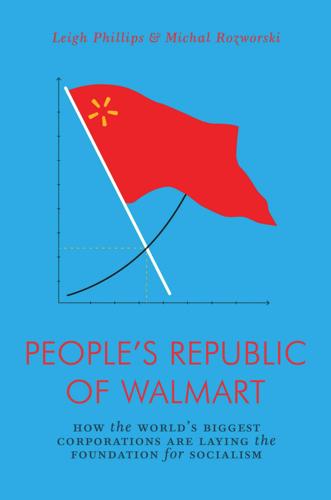
The People's Republic of Walmart: How the World's Biggest Corporations Are Laying the Foundation for Socialism
by
Leigh Phillips
and
Michal Rozworski
Published 5 Mar 2019
While Beer’s work, for which he had gained a substantial international reputation, focused on more efficient management techniques, according to Medina’s interviews with Flores, the latter was captivated by how the “connective, philosophical foundation” of Beer’s management cybernetics could serve Allende’s vision of an anti-bureaucratic democratic socialism in which workers participated in management and that would defend individual civil liberties. Management cybernetics, Flores reasoned, could assist the young government in “herding the cats” of the public and worker-managed sectors. The term “cybernetics” today has something of a naively techno-utopian aura, or even a body-horror, dystopic dread about it. But at its fundament, the field of cybernetics simply investigates how different systems—biological, mechanical, social—adaptively manage communication, decision making and action. The first edition of Beer’s 1959 book on the subject, Cybernetics and Management, does not even make reference to computers, and, as Medina is keen to stress, Beer himself was an intransigent critic of how business and government deployed computers.

What If We Get It Right?: Visions of Climate Futures
by
Ayana Elizabeth Johnson
Published 17 Sep 2024
This book is a quest to answer a question not asked often enough about the climate crisis: What if we get it right? What if…? A mind-expanding question, often asked with a twinkle in the eye. An invitation to imagine. And goodness do we need more imagination right now, to create clearer visions of desirable climate futures. I’m not talking about some frictionless techno-utopian future (although Silicon Valley is selling that pretty hard). Or an off-grid hippie commune fantasy (although there’s something to that, for sure). I’m talking about a future we can see ourselves in, where there’s a place for us and the communities we hold dear. It will take momentous shifts to ensure a reasonably safe future.
…
See carbon cycle; circularity; ecosystems; food systems; water cycle T Taproot Earth, 318n, 364–65 See also Pichon Battle, Colette Taproot Noire, 367–68 tax credits, 295 tax policy, 128, 295, 376–77 team, 423 tech industry: data center energy use, 88, 124 emissions impacts, 143, 144 See also AI technology and technological solutions: Antonelli on AI and other technological tools, 109–10 artificial carbon capture, 26 bioengineering, 130–31 Shah on the capacity of current clean technologies, 187, 195 technological vs. nature-inspired solutions, 25–26, 40–41, 46, 134–35 what transformation looks like, 127–28, 133, 432 See also AI (artificial intelligence); other specific technologies techno-utopianism, 3 telemetry, 123n temperatures: albedo and its effects, 22, 39 ocean temperatures, 11, 19, 20 soil temperatures, 41 See also global warming; heat tenacious, 427 Tesla, 184 textiles and fashion, 200, 201, 229 Third Act, 144–45, 149–50, 157 See also McKibben, Bill “This Living Earth” (Connell), 380–81 Thomas, Maggie, 282, 308–9, 310, 314, 315, 322 350.org, 142 Thunberg, Greta, 149, 242, 399 tipping points, 21 “To Be of Use” (Piercy), 250, 420 traditional ecological knowledge, xxi, 45–46, 69–70, 370–71, 383–84, 389–90, 402 transformation, 3–4, 375, 394–433 doing the work, 423–27 the importance of goals, 113 Smith on regenerative ocean farming, 400–419 what getting it right looks like, 428–33 See also action and advocacy; decarbonization; specific problem/solution contexts transmission, 27, 29, 190, 312, 340, 345, 377 transpiration/evapotranspiration, 41, 42–43 transportation: air travel, 200, 388, 389 automobile emissions standards, 164–65 DOE vehicle technology initiatives, 183, 184, 193 in the Green New Deal framework, 286 high-speed rail, 389 minimizing future car dependence, 113, 234 problems and possibilities, 88–89, 200, 201 shipping, 303, 315, 319 U.S.
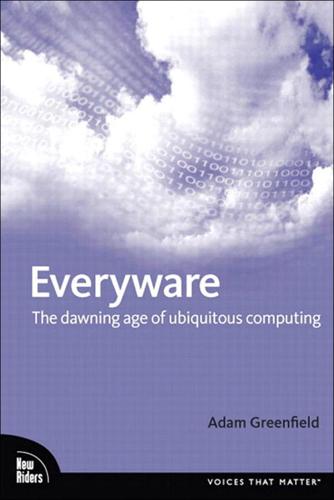
Everyware: The Dawning Age of Ubiquitous Computing
by
Adam Greenfield
Published 14 Sep 2006
In fact, almost every scenario we've covered is reflected somewhere or another in New Songdo's marketing materials; the developers have even included the pressure-sensitive flooring for the homes of older residents, where it's once again touted as being able to detect falls and summon assistance. It's quite a comprehensive—and audacious—vision. And while it certainly sounds like something out of AT&T's infamously techno-utopian "you Will" commercials of the early 1990s, New Songdo is entirely real. It's being built right now, at a cost estimated to be somewhere north of $15 billion. That financing for the project is being provided by international institutions like ABN Amro, as well as Korean heavyweights Kookmin Bank and Woori Bank, should tell us something.

Ours to Hack and to Own: The Rise of Platform Cooperativism, a New Vision for the Future of Work and a Fairer Internet
by
Trebor Scholz
and
Nathan Schneider
Published 14 Aug 2017
Some fledgling examples are La’Zooz, an alternative ride-sharing app; Swarm, a fundraising app; and proposals for the use of distributed ledgers to manage land ownership or critical infrastructures like water and energy. Many of these activities are difficult outside of local communities or in the absence of some trusted intermediary. However, I also think that much of the current rhetoric around the blockchain hints at problems with the techno-utopian ideologies that surround digital activism, and points to the assumptions these projects fall into time and again. It’s worth addressing these here. ASSUMPTION #1: WE CAN REPLACE MESSY AND TIME-CONSUMING SOCIAL PROCESSES WITH ELEGANT TECHNICAL SOLUTIONS Fostering and scaling cooperation is really difficult.

The Best Interface Is No Interface: The Simple Path to Brilliant Technology (Voices That Matter)
by
Golden Krishna
Published 10 Feb 2015
Frustrated by the effects of high winds on swing doors at their store in Corpus Christi, the brothers started their own door company that sold the world’s first automatically opening doors.2 Today, the Horton Automatic sliding doors are replicated all over the world. When you walk up to a grocery store or hospital, the doors often automatically open. When health-care workers rush a patient into a hospital from an ambulance, the doors just slide open. Um, I know how automatic doors work. The experience isn’t a shocking, please-leave-the-meeting-room, techno-utopian vision, but an expected, boring solution. It isn’t something we marvel at, revere, or even consider special; it’s become an automatic solution we just count on. And that, honestly, is a great thing. These seamless, automatic solutions sometimes take decades (or a few millennia) before they are reliable enough to become part of our everyday lives.

The Longing for Less: Living With Minimalism
by
Kyle Chayka
Published 21 Jan 2020
Elgin had worked with a government commission on population growth looking ahead to the year 2000 and then for the Stanford Research Institute. Over the years, he observed a trend of Americans “returning to the simple life,”10 which the media had turned into a new archetype. Moving to the country, baking your own bread, and establishing cooperative businesses constituted a new social philosophy that mingled with the techno-utopianism of Stewart Brand’s Whole Earth Catalog circa 1968. Elgin rebranded Gregg’s voluntary simplicity with the acronym VS, which sounds more like a technological device than an idea with centuries of history—once again showing how minimalism erases its own past. Elgin’s version of VS was driven by a sense of disconnection: Economic and political structures had grown beyond human scale, so people wanted to separate themselves from them.

More Everything Forever: AI Overlords, Space Empires, and Silicon Valley's Crusade to Control the Fate of Humanity
by
Adam Becker
Published 14 Jun 2025
None of this is to say that technology is useless at solving problems—just that it must be directed, that we must make choices about what we want technology to do as part of the solution to some of our problems, rather than presuming the right technology will come along to solve all of them entirely. Like all human activities, developing technology is full of contingency and choice. Weirdly, Peter Thiel understands this better than most tech billionaires. “The future of technology is not pre-determined, and we must resist the temptation of technological utopianism—the notion that technology has a momentum or will of its own, that it will guarantee a more free future, and therefore that we can ignore the terrible arc of the political in our world.”75 But Thiel’s ideas of “a more free future” and what constitutes “the terrible arc of the political” are wildly different from my own.
…
In 1966, the same impulse prompted Stewart Brand to sell pins saying, “Why haven’t we seen a photograph of the whole earth yet?”69 Two years later, Brand put one of the first such images on the cover of the first Whole Earth Catalog, which espoused a peculiarly Californian fusion of the countercultural philosophy of the hippies and a techno-utopian vision of the future. Brand had hoped to shift public consciousness by drawing attention to the image of the whole Earth, and it likely did have some contribution to the nascent environmental movement. (Brand himself would go on to become a fixture of the tech scene in San Francisco for decades; as of 2024, he still is.)
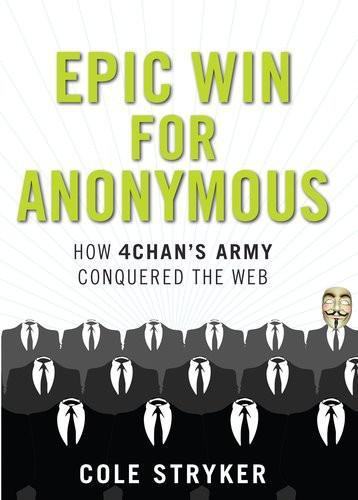
Epic Win for Anonymous: How 4chan's Army Conquered the Web
by
Cole Stryker
Published 14 Jun 2011
During the early days on the Internet, there were no agreed-upon standards of etiquette. Templeton helped to define the way people would behave for decades to come. The Virtual Community: The Well In 1985 Stewart Brand and Larry Brilliant founded the Whole Earth ‘Lectronic Link, or WELL. The WELL was made up of a new breed of techno-utopian ex-hippies who’d been experimenting with communal living and other alternative lifestyles. These baby boomers had grown up a bit, and where their ’60s brethren had failed, they believed they’d succeed, with the power of network technology. It was all very back-to-the-earth, but with a focus on the power of computing.

Whiplash: How to Survive Our Faster Future
by
Joi Ito
and
Jeff Howe
Published 6 Dec 2016
At the Media Lab, the favorite opener of any story is, “It turns out that…,” which basically means, “We were wrong in this cool way.” It’s also important to note that disobedience is different from criticism. There is, for example, a very important design movement called critical design—a perspective that provides a critique of modern techno-utopianism that we technologists often find ourselves espousing. However, criticism is about our work, where disobedience is the work. Computer security would not improve without computer network hackers, and we wouldn’t exist without our gut microbes—good and bad—although apparently most are somewhere in between.49 PS: Disobedience with a Conscience I often have the nine principles displayed on one of the screens in my primary meeting room at the Media Lab.

Radical Cities: Across Latin America in Search of a New Architecture
by
Justin McGuirk
Published 15 Feb 2014
From here, one of the smaller stations, the line turns to follow the hilltops before entering the much more impressive summit station of La Ceiba. With its exposed metal structure holding up a great barrelled roof, La Ceiba is a piece of High Tech architecture transplanted to the barrio. Its technical language is appropriate to a piece of engineering infrastructure, but it also carries more than a hint of the techno-utopian futurism that Archigram turned into pop icons in the 1960s. Archigram’s progeny turned High Tech into the language of airports and banking headquarters. But in Caracas it has been reinvented, in vertical gyms and Metrocable stations, as part of the language of the barrio. That homage to the 1960s extends to U-TT’s terminology.

Reinventing Capitalism in the Age of Big Data
by
Viktor Mayer-Schönberger
and
Thomas Ramge
Published 27 Feb 2018
The progressive data-sharing mandate—the mechanism we have suggested to ensure such diversity—is designed to protect not just against the concentration of adaptive systems but also, through the sharing of different data subsets, to guard against all competitors using the same data input to build their systems. The key is to foster a diversity that continues to translate into robust competition. When it comes to the broader social implications of data-driven markets, we abhor the gleeful optimism of the techno-utopians as much as we shun the gloom of the perennial doomsday prophets. Rather than pretending to predict the future, we should prepare ourselves to shape it, readying the right levers and mechanisms so that we can stimulate beneficial dynamics and mitigate negative consequences whenever and wherever they arise.
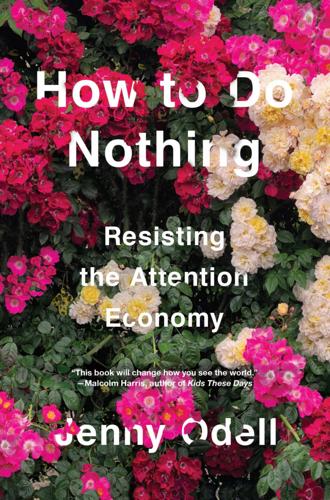
How to Do Nothing
by
Jenny Odell
Published 8 Apr 2019
The artists he included in the Zurich exhibition ranged from very famous to obscure outsider artists, but they all had one thing in common: a total conflation of art with life, sometimes even an attempt to live one’s art. Alongside a scale model of Vladimir Tatlin’s never-built Monument to the Third International, one might find a costume from Oskar Schlemmer’s techno-utopian Triadisches Ballett, the spiritual color theories of Wassily Kandinsky, a score by John Cage (for whom “all sounds are music”), or documentation of the Palais Idéal, a structure hand-built with thousands of rocks by a mailman, after he tripped over one and decided it was beautiful. The domes and other art from the Drop City commune would not have been out of place here.

The New Nomads: How the Migration Revolution Is Making the World a Better Place
by
Felix Marquardt
Published 7 Jul 2021
When we met in Paris, he was working as a software engineer for Jobbatical, a start-up that helps businesses hire staff from around the world and relocate them. Jobbatical was led by a charismatic Estonian, Karoli Hindriks, who was an enthusiastic graduate of Singularity University, the brainchild of the world’s most famous techno-utopian author: Ray Kurzweil. When I had visited her at the company headquarters in Tallinn a few months earlier, they felt and smelled and looked like a miniature version of the offices of Google that I visited in Mountain View, New York and Paris. The company and the service it provided were one and the same.
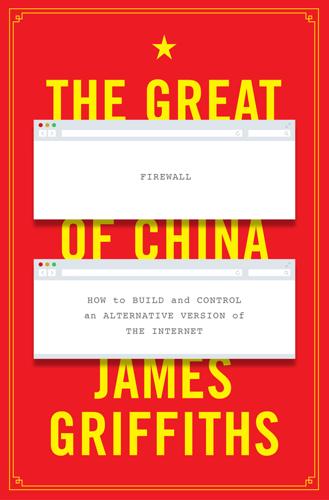
The Great Firewall of China
by
James Griffiths;
Published 15 Jan 2018
Technology giants, both foreign and domestic, have been brought to heel, and those who won’t collaborate have been banished. Propaganda output has expanded into all walks of life, spreading an angry, xenophobic nationalism to drown out any criticism of state control. The censors’ success has not stopped the techno utopians heralding each new internet development – blogs, social media, instant messaging – as a panacea. Nor has it stopped them trumpeting any gap or loophole in the Great Firewall, no matter how short-lived, as proof of the ultimate futility of attempting to censor the internet. The utopians point to methods of jumping over the Firewall, such as proxies or virtual private networks (VPNs), as examples of the censors’ weaknesses, and as reasons why such a system could never be implemented in another country.
…
“It has been hammered.”29 – and the enduring impact of the declaration and, most of all, the creation of EFF on internet freedom is substantial. The most perverse thing to happen in the more than two decades since Barlow began typing his call to arms is not just that governments have proven themselves more than able to exercise power over the internet, but that they have adopted the language of techno-utopianism as they do so. Successive US presidents, from Clinton to Bush to Obama, hailed the internet as a tool for spreading economic and political liberalisation around the world.30 This is the internet as Tom Friedman’s “nutcracker to open societies”, and it is far more naive and at odds with reality than anything Barlow put forward.

Smart Cities: Big Data, Civic Hackers, and the Quest for a New Utopia
by
Anthony M. Townsend
Published 29 Sep 2013
How It Will Happen and What It Will Mean (New York: Oxford University Press, 1993), 19. 31Colin Harrison, interview by author, May 9, 2011. 32Jay Nath, “Hacking SF: Innovation in Public Spaces,” Jay Nath, blog, last modified April 12, 2012, http://www.jaynath.com/2012/04/hacking-sf-innovation-in-public-spaces/. 33Phil Bernstein, remarks, Bill Mitchell Symposium, MIT Media Lab, Cambridge, MA, Nov 11, 2011. 34“The Transect,” Center for Applied Transect Studies, accessed September 5, 2012, http://www.transect.org/transect.html. 35Red Burns, “Technology and the Human Spirit,” lecture at “The Future of Interactive Communication,” Lund, Sweden, June 1998. 36“Transdisciplinarity,” Science and Technology Outlook: 2005–2055 (Palo Alto, CA: Institute for the Future, 2006), 31, http://www.iftf.org/system/files/deliverables/TH_SR-967_S%2526T_Perspectives.pdf. 37Adam Greenfield, “Beyond the ‘smart city,’ ” Urban Scale, blog, last modified February 17, 2011, http://urbanscale.org/news/2011/02/17/beyond-the-smart-city/. 38Evgeny Morozov, “Technological Utopianism,” Boston Review, November/December 2010, http://www.bostonreview.net/BR35.6/morozov.php. 39Michael M. Grynbaum, “Mayor Warns of Pitfalls of Social Media,” New York Times, March 21, 2012, http://www.nytimes.com/2012/03/22/nyregion/bloomberg-says-social-media-can-hurt-governing.html. 40Italo Calvino, Invisible Cities (New York: Harcourt, 1974), 32. 41Michael Joroff, e-mail correspondence with author, January 28, 2012. 42Janette Sadik-Khan, lecture, “BitCity 2011: Transportation, Data and Technology in Cities,” Columbia University, New York City, November 4, 2011. 43Guru Banavar, lecture, “X-Cities 3: Heavy Weather—Design and Governance in Rio de Janeiro and Beyond,” Columbia University Studio-X, New York, April 10, 2012, http://www.youtube.com/watch?
…
The enormous cultural impact of that psychedelic freak-out on American society can be felt today, and it still casts a long shadow over San Francisco. There, Hirshberg has been a driving force behind a new creative space just down the hill from Haight-Ashbury, the Gray Area Foundation for the Arts. Both physically and spiritually, it sits at the intersection of that 1960s counterculture and a new techno-utopianism. It’s just a few steps to either Twitter’s headquarters or the head office of Burning Man, the radical art festival that builds a temporary city in the Nevada desert each summer. Though he takes inspiration from the hippies, Hirshberg is politically pragmatic. He soon slaps his laptop shut and stops playing dumb.
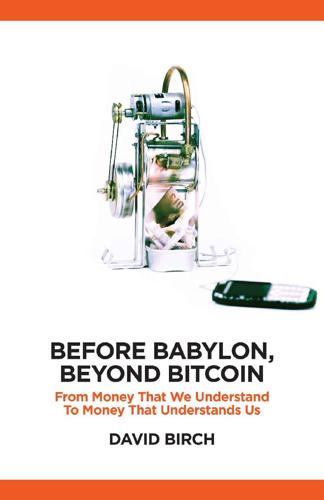
Before Babylon, Beyond Bitcoin: From Money That We Understand to Money That Understands Us (Perspectives)
by
David Birch
Published 14 Jun 2017
. ******** In a talk about electronic money that he gave in 2014, Charles Goodhart was kind enough to refer to some of my thinking around ‘privacy money’ as a way forward. Chapter 9 Why keep cash? Money is like muck, not good unless it be spread. — Francis Bacon (1561–1626) in his Essays, Civil and Moral (Number XV: Of Sedition and Troubles) There are, of course, many arguments for keeping cash despite the post-war techno-utopian fantasies of cashlessness – a cashlessness that with the wisdom of hindsight we know could not have been achieved with the fiat currencies and technologies of that era. The key arguments in favour of retaining cash were set out neatly by David Keohane in a piece for FT Alphaville (Keohane 2015).
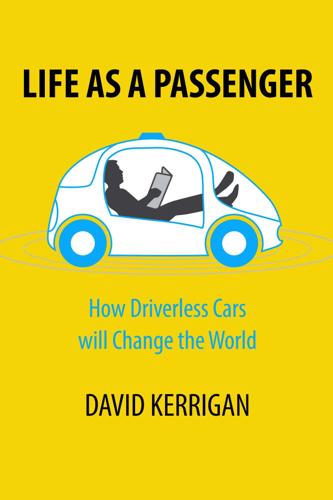
Life as a Passenger: How Driverless Cars Will Change the World
by
David Kerrigan
Published 18 Jun 2017
Back to the Future “The only constant is change” Heraclitus Just because things have been a certain way for 100 years doesn’t mean they should stay that way; nor does the possibility of a new approach mean it’s necessarily the correct and immediate way forward. There probably needs to be a balance between the opposite views of “always been this way” vs techno-utopianism. History tells us that all large transportation and communication innovations—whether cars, carriages, canals or cables—have involved great uncertainty. Innovation invites speculation. But our individual ability to influence its direction is interesting. The only certainty is that these technologies will continue to develop - how we choose to use them, and when, is the only open question.

The Glass Cage: Automation and Us
by
Nicholas Carr
Published 28 Sep 2014
Every time we offload a job to a tool or a machine, or to a symbol or a software algorithm, we free ourselves to climb to a higher pursuit, one requiring greater dexterity, richer intelligence, or a broader perspective. We may lose something with each upward step, but what we gain is, in the end, far greater. Taken to an extreme, Whitehead’s sense of automation as liberation turns into the techno-utopianism of Wilde and Keynes, or Marx at his sunniest—the dream that machines will free us from our earthly labors and deliver us back to an Eden of leisurely delights. But Whitehead didn’t have his head in the clouds. He was making a pragmatic point about how to spend our time and exert our effort. In a publication from the 1970s, the U.S.

Lurking: How a Person Became a User
by
Joanne McNeil
Published 25 Feb 2020
They are the public this work is created for; rather than sponging off their work, lurkers might even make it easier for the editors—it is hard to imagine the already fragile Wikipedia ecosystem sustaining itself if every single internet user on the internet took an active role. In the early years of enthusiasm for peer production, techno-utopians talked about this dynamic as the 1–9–90 or “1 percent rule”—that is, in collaborative online spaces, roughly 90 percent of people only read content, 9 percent edit the content, and another 1 percent actually create new content. As I reviewed the Wikipedia page for the 1 percent rule, an anecdote jumped out at me.
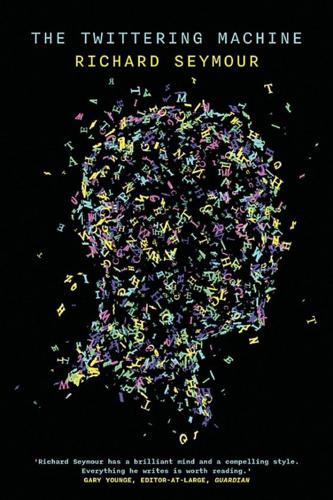
The Twittering Machine
by
Richard Seymour
Published 20 Aug 2019
Anonymity would allow us to form new identities freed from the limits of our everyday lives, and escape surveillance. There were a host of so-called ‘Twitter revolutions’, misleadingly credited to the ability of educated social industry users to outflank senile dictatorships, and discredit the ‘elderly rubbish’ they spoke. And then, somehow, this techno-utopianism returned in an inverted form. The benefits of anonymity became the basis for trolling, ritualized sadism, vicious misogyny, racism and alt-right subcultures. Creative autonomy became ‘fake news’ and a new form of infotainment. Multitudes became lynch mobs, often turning on themselves.20 Dictators and other authoritarians learned how to use Twitter and master its seductive language games, as did the so-called Islamic State whose slick online media professionals affect mordant and hyper-aware tones.

New Dark Age: Technology and the End of the Future
by
James Bridle
Published 18 Jun 2018
In 1997, the photographer Wolfgang Tillmans showed a series of fifty-six photographs of Concorde that correspond almost perfectly with my own memory: a dark arrowhead rumbling across the sky, seen not from the luxury cabin, but from the ground. Writing in the exhibition catalogue, Tillmans remarked, Concorde is perhaps the last example of a techno-utopian invention from the sixties still to be operating and fully functioning today. Its futuristic shape, speed and ear-numbing thunder grabs people’s imagination today as much as it did when it first took off in 1969. It’s an environmental nightmare conceived in 1962 when technology and progress was the answer to everything and the sky was no longer a limit … For the chosen few, flying Concorde is apparently a glamorous but cramped and slightly boring routine whilst to watch it in the air, landing or taking-off is a strange and free spectacle, a super modern anachronism and an image of the desire to overcome time and distance through technology.31 Concorde made its final flight in 2003, a victim as much of its own elitism as the fatal crash of Air France Flight 4590 into the Parisian suburbs three years earlier.

After the Gig: How the Sharing Economy Got Hijacked and How to Win It Back
by
Juliet Schor
,
William Attwood-Charles
and
Mehmet Cansoy
Published 15 Mar 2020
When personal computing and the internet developed in the 1990s, New Communalists hailed them as the route to the ecotopias they had failed to create in their back-to-the-land phase. The New Communalists’ views morphed into what became known as the Californian Ideology.7 It combined libertarian politics, countercultural aesthetics, and techno-utopian visions.8 Its core belief was that technology would yield personal liberation and egalitarian community. Individuals could now determine their own fates, as personal computers plus the internet offered ways to earn money without relying on a bureaucratic institution.9 The financial accessibility of computers meant that everyone could join in as equals.

How to Fix the Future: Staying Human in the Digital Age
by
Andrew Keen
Published 1 Mar 2018
Today we can see similar responses of yes, no, or maybe to the question of whether the dramatic change swirling all around us is to our benefit. Romantics and xenophobes reject this globalizing technology as somehow offending the laws of nature, even of “humanity” itself (an overused and under-defined word in our digital age). Both Silicon Valley techno-utopians and some critics of neoliberalism insist that the digital revolution will, once and for all, solve all of society’s perennial problems and create a cornucopian postcapitalist future. For them, much of this change is inevitable—“The Inevitable”3 according to one particularly evangelical determinist.

The Impulse Society: America in the Age of Instant Gratification
by
Paul Roberts
Published 1 Sep 2014
Beyond the specific complaints—that Siri cannot understand Bronx, for example—were broader, often mocking critiques of the notion of Siri as a productivity booster. Many of Siri’s advertised uses2 (“Siri, find me a latte” or “Siri, play my running mix”) seem less about raising output than providing digital parlor tricks for bored yuppies. Given the way Apple uses cloying techno-utopian hype (the iPad is “a magical window where nothing comes between you and what you love”) to grease its famously aggressive release schedule (new versions rolled out precisely as profit margins on existing ones are fading), it doesn’t take a cynic to see Siri as an unusually elaborate carrot. And yet . . . it’s hard to ignore the thrill I get when, a few days later, I tell Siri to set a timer for five minutes, and she does it.

The End of College: Creating the Future of Learning and the University of Everywhere
by
Kevin Carey
Published 3 Mar 2015
Google hired him to work in its research laboratory while he continued to teach AI as a tenured professor at Stanford. By 2011, Sebastian Thrun was something of a Silicon Valley rock star, a certified genius and visionary maker of very cool things. He dressed in jeans and stylish T-shirts and married a beautiful professor of comparative literature who liked to tease him about his techno-utopian ways. In March of that year, Thrun was invited to TED (Technology, Education, Design), the annual festival of technologist self-congratulation, where he stood before a rapt audience and described how he and his colleagues at Google had built a self-driving car. Afterward, Thrun hung around the conference to watch the other presenters, including an energetic former hedge fund analyst named Salman Khan.
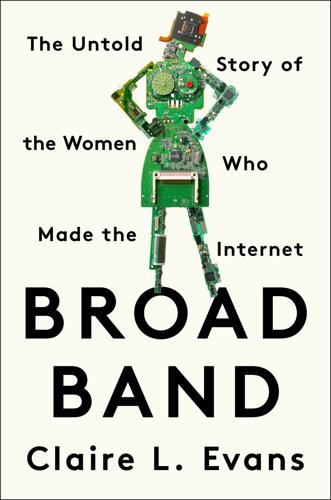
Broad Band: The Untold Story of the Women Who Made the Internet
by
Claire L. Evans
Published 6 Mar 2018
It was an evocative vision of women’s bodily connection to networked computing, a connection that emerged before the technology itself, beginning with Ada Lovelace and the countless uncounted female computers—a lineage Plant traces in her book, much as I have in mine. Sadie Plant and VNS Matrix are considered the matriarchs of cyberfeminism, a wild, breathlessly utopian, very brief art movement that flourished in the mid-1990s, as the Web began to reshape the world. Cyberfeminism conjures, in many ways, the countercultural, techno-utopian feeling of early Internet culture, and inherits the spirit of those West Coast cyberhippies who believed that computer-mediated communication would create a free civilization of the mind. The motley crew of artists, coders, game designers, and writers who pronounced themselves cyberfeminists joyfully subverted what VNS Matrix called “big daddy mainframe”: the patriarchy hard coded to the technological underpinnings of the world, a backbone built by men.

Possible Minds: Twenty-Five Ways of Looking at AI
by
John Brockman
Published 19 Feb 2019
He got his start building an open-source aerial robotics community called DIY Drones, and undertook some ill-advised early experiments, such as buzzing Lawrence Berkeley Laboratory with one of his self-flying spies. It might well have been a case of antic gene expression, since he’s descended from a founder of the American anarchist movement. Chris ran Wired magazine, a go-to publication for techno-utopians and -dystopians alike, from 2001 to 2012; during his tenure it won five National Magazine Awards. Chris dislikes the term “roboticist” (“like any properly humbled roboticist, I don’t call myself one”). He began as a physicist. “I turned out to be a bad physicist,” he told me recently. “I struggled on, went to Los Alamos, and thought, ‘Well, maybe I’m not going to be a Nobel Prize winner, but I can still be a scientist.’
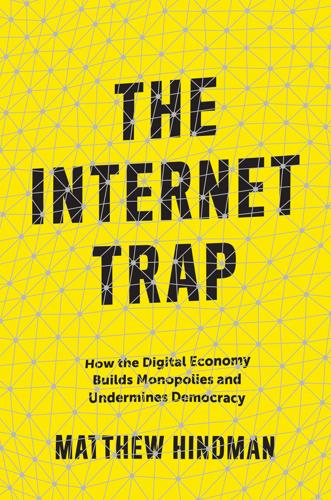
The Internet Trap: How the Digital Economy Builds Monopolies and Undermines Democracy
by
Matthew Hindman
Published 24 Sep 2018
Southern California’s tech culture had been shaped by both Whole Earth Catalog-tinged counterculture2 and Joseph Schumpeter-inspired “evolutionary” capitalism. But Barlow’s treatise gave such views a wider audience. The essay was quickly mirrored on forty thousand other sites, making it arguably the most impressive example of viral content up to that point. Today the Declaration is often cited as the zenith of 1990s techno-utopian silliness. Barlow himself, when asked The “Nature” of the Internet • 163 about the declaration in a 2004 interview, quipped that “we all get older and smarter.”3 In crucial ways, though, we have not gotten smarter about the internet. Misconceptions about the “nature” of the internet are still the explicit rationale for our public policies.
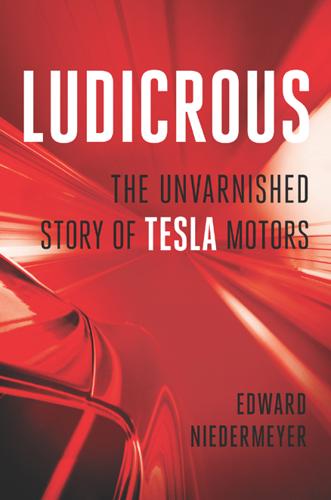
Ludicrous: The Unvarnished Story of Tesla Motors
by
Edward Niedermeyer
Published 14 Sep 2019
Headlines lauded the company’s world-saving mission as well as its cars’ extraordinary features, such as the super quick zero-to-sixty acceleration option that Musk nicknamed “Ludicrous Mode.” And at a time when heroic public figures were an increasingly rare commodity, Musk’s centrality to Tesla’s capitalistic, technological, and environmental ambitions (to say nothing of his numerous other techno-utopian causes, including SpaceX, Hyperloop, The Boring Company, Neuralink . . . and, of course, the company whose success provided the funding for all of them, PayPal) made both him and his car company even more appealing. As Tesla’s brand solidified and its stock took off, Musk poured gas on the fire.
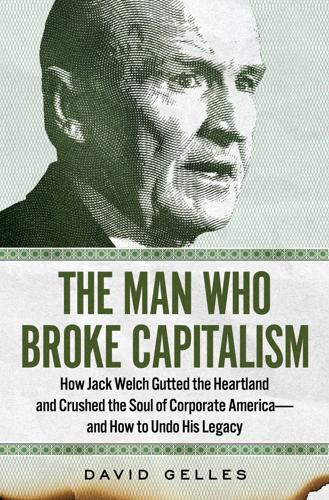
The Man Who Broke Capitalism: How Jack Welch Gutted the Heartland and Crushed the Soul of Corporate America—and How to Undo His Legacy
by
David Gelles
Published 30 May 2022
Polman was an outlier when he took over Unilever, one of the few CEOs willing to question the status quo and set ambitious targets to reduce the harm his company did to the world. Yet today Polman is one of many. Over the past decade, he has been joined by a diverse array of CEOs who have found different ways to push back against Welchism, an effort that extends from the European headquarter of Unilever to the techno-utopian campuses of Silicon Valley. For example at PayPal, the online payments platform that was spun out of eBay into a public company in 2015, CEO Dan Schulman is changing his company’s relationship with its workers, starting with how much he pays them. When Schulman took over PayPal in 2014, he embraced the idealistic language of Silicon Valley, trumpeting a corporate mission statement that suggested technology could solve all the world’s problems.
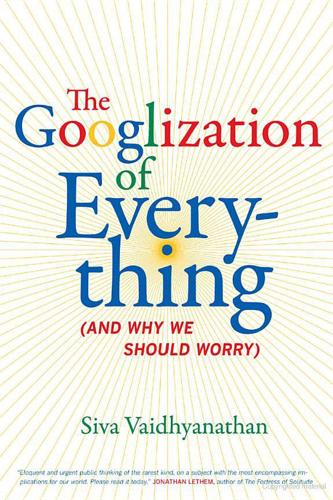
The Googlization of Everything:
by
Siva Vaidhyanathan
Published 1 Jan 2010
When I first encountered Google in early 1999, I was teaching history at Wesleyan University. Mostly, I was scrambling to finish my dissertation—which became my first book. Because most of my research drew on sources available on microfilm, search engines had not yet become an integral part of my professional life. I was aware of the techno-utopian conversations about electronic archives and the global delivery of knowledge, but I didn’t think very hard about them. I had a book to write and sell. The Web, for me, was a platform for self-promotion. And existing search engines, like Yahoo, were not helping in that effort. Since about 1995 I had been using Yahoo and AltaVista for my Web navigation.
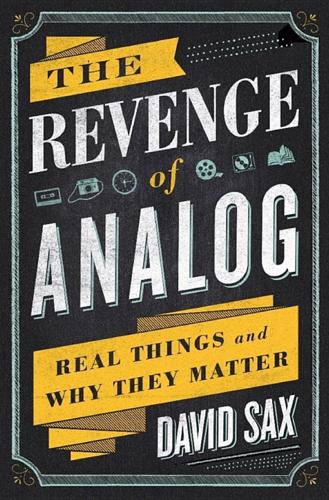
The Revenge of Analog: Real Things and Why They Matter
by
David Sax
Published 8 Nov 2016
The Revenge of Analog not only questions our assumptions about digital’s inevitability, but the very certainty at the heart of the digital economy. This is a powerful current to swim against. The notion that nondigital goods and ideas have become more valuable would seem to cut against the narrative of disruption-worshipping techno-utopianism coming out of Silicon Valley and other startup hubs, but, in fact, it simply shows that technological evolution isn’t absolute. We may eagerly adopt new solutions, but, in the long run, these endure only if they truly provide us with a better experience—if they can compete with digital technology on a cold, rational level.

Against Everything: Essays
by
Mark Greif
Published 5 Sep 2016
We’d do it marrying, arguing, staring at the wall, dining, studying our feet, holding contests, singing, sneezing. Hundreds of thousands of us had cameras. Well, we’d plug them in and leave the tape running for our real life. In this underlying dream, we were neither exactly wrong nor right. The promise of the five hundred channels went to waste. The techno-utopians’ fantasies shifted to the Internet. Nothing like the paradise we hoped for came to fruition on TV, that’s for sure. Instead we got reality TV. — The assessment of reality television depends first on your notion of television; second, on your idea of political community. Here is a standard misconception: since the noblest forms of artistic endeavor are fictional and dramatic (the novel, film, painting, plays), it can be assumed that the major, proper products of television will be its dramatic entertainments, the sitcom and the hour-long drama.
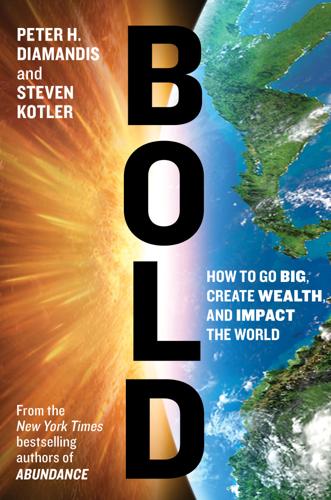
Bold: How to Go Big, Create Wealth and Impact the World
by
Peter H. Diamandis
and
Steven Kotler
Published 3 Feb 2015
The exponential technologies discussed in part one give us the physical tools for radical change, the psychological strategies described in part two are the mental framework for success, and the exponential crowd tools that fill part three provide all of the additional resources (talent, money, and so forth) needed to cross the finish line. Here’s the most important point: Abundance is not a techno-utopian vision. Technology alone will not bring us this better world. It is up to you and me. To bring on this better world is going to require what could easily be the largest cooperative effort in history. In other words, there is a bold and bright future out there. But, as with everything else, what happens next is up to us.
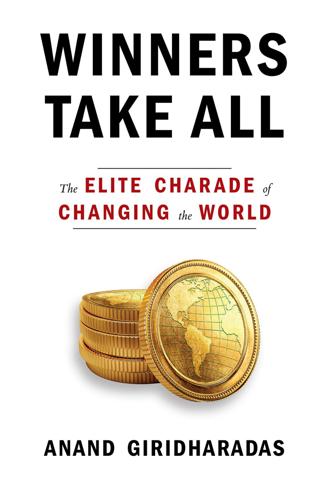
Winners Take All: The Elite Charade of Changing the World
by
Anand Giridharadas
Published 27 Aug 2018
—JONATHAN CLARK, ENTREPRENEUR It is dinnertime, and Stacey Asher is sitting at a window-side six-top, talking about how she helps poor people using the power of fantasy sports. She lives in Highland Park, in Dallas, not far from former president George W. Bush. Asher runs a charity called Portfolios with Purpose. It calls itself “a powerful platform combining healthy competition with giving”—a short phrase that manages to hit the notes of techno-utopianism, capitalism, and charity. Though she appears to be in her thirties, she says she worked at “six or seven” hedge funds in New York before moving to Texas, where her new husband had a job, also in finance. Like many from the business world who end up devoted to helping others, Asher has a story about an African epiphany.
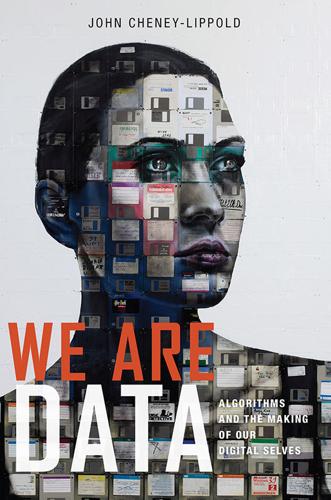
We Are Data: Algorithms and the Making of Our Digital Selves
by
John Cheney-Lippold
Published 1 May 2017
Conclusion In 2008, former Wired editor Chris Anderson wrote an article announcing the “end of theory.” In this ode to big data, Anderson proposed that with an n = all world, theory as we know it would be obsolete. If you have access to “all,” he explained, there’s no need to hypothesize what “all” means. While the argument was lambasted for its unrepentant techno-utopianism, Anderson did manage to introduce readers to an insightful quotation from British statistician George E. P. Box: “all models are wrong, but some are useful.”91 Once we accept all models’ functional imperfection, we start to see how the second half of Box’s comment is actually the most significant.
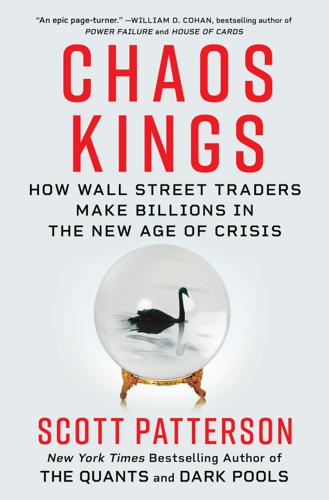
Chaos Kings: How Wall Street Traders Make Billions in the New Age of Crisis
by
Scott Patterson
Published 5 Jun 2023
“The so-called ‘agents of doom’ carry around what my colleague Nassim Taleb calls ‘silent risk’: in trying to buttress their own power, and even in trying (I am sure, with the best intentions) to decrease the long-term existential risk to our species, they themselves pose a terrible risk to civilization, and perhaps to life on Earth,” he wrote in July 2022. By downplaying current risks such as climate breakdown, for instance, because they don’t see it as existential, and by betting the future of humanity on techno-utopian scientific breakthroughs, longtermists were taking a dangerous gamble that could seriously backfire, Read believed. Taleb just thought they were bad at math. He’d met Nick Bostrom at a dinner in Oxford in 2008 and quickly chalked him up as a perhaps well-intentioned, head-in-the-clouds dreamer who lacked common sense.

A New History of the Future in 100 Objects: A Fiction
by
Adrian Hon
Published 5 Oct 2020
This ordeal originated from philosopher Shannon Vallor’s book from 2016, arguing that one of the only ways to promote human flourishing in an age of unpredictable, civilization-threatening technological change was to cultivate her twelve new virtues of honesty, self-control, humility, justice, courage, empathy, care, civility, flexibility, perspective, magnanimity, and wisdom–each derived from much older Aristotelian, Confucian, and Buddhist ethical traditions. This was not merely the precautionary principle by another name. Rather, Vallor sought a balance between thoughtless techno-utopianism and reactionary techno-pessimism. Vallor’s book was overlooked for several years due to Silicon Valley’s noted suspicion of the humanities. It only found a wider audience when the engineers who had created the software that conquered the world became disillusioned with the superficial communalism of the Guide and the piecemeal solutions offered by the “Time Well Spent” movement.
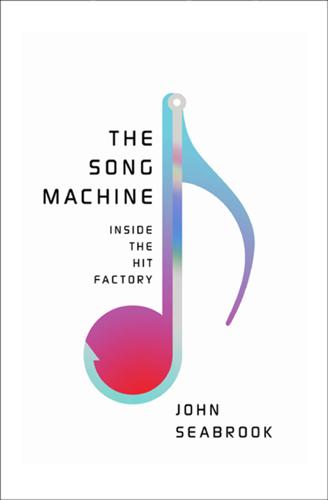
The Song Machine: Inside the Hit Factory
by
John Seabrook
Published 4 Oct 2015
It means—well, not “free” exactly, but at least unburdened by the inconvenience of purchasing a product. You’ve gone from a world of scarcity to one of abundance. Nothing is for sale, because everything is available. For both the pirates and the paying subscribers, buying records is rapidly becoming a thing of the past. And yet the hits go on and on. In The Long Tail, the 2005 techno-utopian argument for the coming triumph of niches in popular culture, author Chris Anderson posits that hits are a scarcity-based phenomenon. Record stores have limited shelf space, he explains, and records that move 10,000 units are more profitable to stock than records that move 10. But on the Internet, shelf space is infinite, and therefore record companies don’t need to focus so much of their business on making hits.

The Constitution of Knowledge: A Defense of Truth
by
Jonathan Rauch
Published 21 Jun 2021
Individuals talking to each other, no matter how big the network, are just people gabbing. Even truth-seeking individuals who cherish rigor and accuracy are likely to go unheard amid the din. The reality-based network’s institutional nodes—its filtering and pumping stations—are what give the system its positive epistemic valence. The techno-utopians of the information revolution assumed that knowledge would spontaneously emerge from unmediated interactions across a sprawling peer-to-peer network, with predictably disappointing results. Without the places where professionals like experts and editors and peer reviewers organize conversations and compare propositions and assess competence and provide accountability—everywhere from scientific journals to Wikipedia pages—there is no marketplace of ideas; there are only cults warring and splintering and individuals running around making noise.
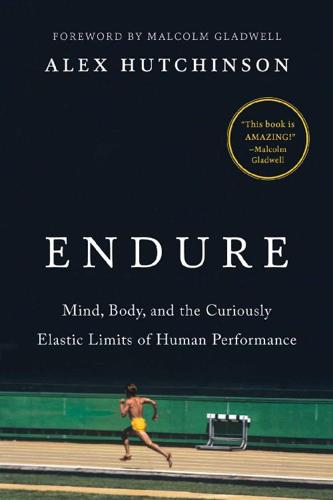
Endure: Mind, Body, and the Curiously Elastic Limits of Human Performance
by
Alex Hutchinson
Published 6 Feb 2018
As the basketball season wore on, the Warriors rolled over opponents with unprecedented ease, eventually finishing with a new regular-season record of 73 wins and just 9 losses. No one attributed their success to Halo’s tDCS headphones (which, a trainer for the team confirmed, an unspecified number of players had experimented with)—but the high-tech device fit in with the team’s techno-utopian storyline. Since the then-bumbling Warriors franchise was purchased by a group of Silicon Valley venture capitalists, in 2010, it has acquired a reputation as “tech’s team,” playing with the wonky, numbers-driven approach of Sand Hill Road venture capitalists. The Warriors have also been enthusiastic early adopters of technology ranging from “intelligent sleep masks” for countering jet lag to body-worn sensors that detect pressure on the knees and ankles.

Boom: Bubbles and the End of Stagnation
by
Byrne Hobart
and
Tobias Huber
Published 29 Oct 2024
And the more similar we become, the more everything starts to “escalate towards extremes.” 83 We can try to differentiate ourselves by sharing more about ourselves than we ever would offline—a behavior some cognitive psychologists call “benign inhibition”—or by disinhibiting ourselves in ways that give rise to antisocial behavior and can even lower the barriers to real-life violence, a condition referred to as “toxic disinhibition.” 84 Given social media’s propensity to accelerate and intensify such online disinhibitions, Instagram might turn into Instawar faster than we expect. 85 Likewise, the “tyranny of the others,” which Heidegger identified a century ago, 86 is today intensified, amplified, and reinforced by algorithms. 87 Contrary to early techno-utopian visions and cypherpunk ideals, the internet, under the rule of an oligarchy of monopolistic tech firms, has become a conformity-generating machine of control. 88 Attention, one of today’s scarcest resources, gets routed toward likes, comments, and shares to create a constant stream of dopamine-triggering stimulation that translates into quantifiable “engagement.”

The Hacker and the State: Cyber Attacks and the New Normal of Geopolitics
by
Ben Buchanan
Published 25 Feb 2020
Instead, the company says its practice is to “simply respond to government requests for information pursuant to court orders or other mandatory process and, in rare cases, on a legal and voluntary basis when a person’s life is in danger and time is of the essence.”29 Other telecommunications companies, including British firms, have given similar answers when questioned about their activities.30 For all the techno-utopian talk of a borderless internet, cyberspace is still physical space.31 National laws compelling corporate cooperation still apply—a fact that the Five Eyes are happy to use for their geopolitical benefit. Partnering with Internet Platforms A century ago, communications were fleeting. Telegrams moved from sender to receiver, at which point they disappeared into whatever paper files the recipient kept, if any.

The Fifth Domain: Defending Our Country, Our Companies, and Ourselves in the Age of Cyber Threats
by
Richard A. Clarke
and
Robert K. Knake
Published 15 Jul 2019
As the internet has gone from being the place you go to visit bulletin boards on esoteric topics to undergirding all of modern existence, the early vision for cyberspace as a domain beyond the reach of the state now seems hopelessly naïve. The internet pioneer John Perry Barlow is often held up as the embodiment of this “techno-utopian” vision for the internet. The founder of the Electronic Frontier Foundation (EFF), Barlow is a fascinating character. Steven Levy described him as a “cowboy, poet, romantic, family man, philosopher, and ultimately, the bard of the digital revolution.” When he died in early 2018, Rolling Stone titled his obituary “John Perry Barlow, Grateful Dead Lyricist, Dead at 70.”

Why We Drive: Toward a Philosophy of the Open Road
by
Matthew B. Crawford
Published 8 Jun 2020
Driving is a way of interacting with others while having shared, concrete interests at stake. Alexis de Tocqueville suggested that the habits of collective self-government are cultivated in practical activities like this that demand cooperation, and such habits are indispensable to democratic political culture. But from the perspective of a central power (whether governmental or techno-utopian), what is wanted is an idealized subject of a different sort, an asocial one who permits an atomized account of human beings to be operationalized. This subject resembles the narrator of the Iggy Pop song “The Passenger”: “I am a passenger / I stay under glass.” A society of such isolated subjects will be more efficiently and pliably governable.

System Error: Where Big Tech Went Wrong and How We Can Reboot
by
Rob Reich
,
Mehran Sahami
and
Jeremy M. Weinstein
Published 6 Sep 2021
Private companies surveil in ways that governments never even contemplated and profit handsomely in the process. The internet ecosystem feeds hate and intolerance with its echo chambers and filter bubbles. The conclusion seems inescapable: our technological future is grim. However, we must resist this temptation to think in extremes. Both techno-utopianism and -dystopianism are all too facile and simplistic outlooks for our complex age. Instead of taking the easy way out or throwing our hands up in the air, we must rise to the defining challenge of our era: harnessing technological progress to serve rather than subvert the interests of individuals and societies.
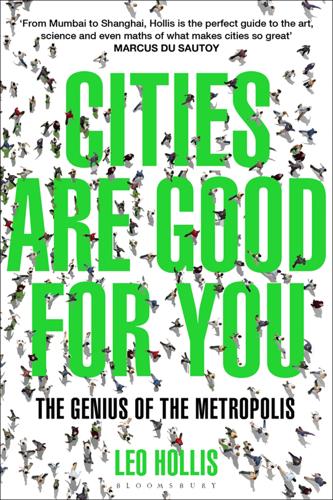
Cities Are Good for You: The Genius of the Metropolis
by
Leo Hollis
Published 31 Mar 2013
It is a sentient place, which can gather information, change, and react to the feedback; in the words of Assaf Biderman, associate director of the SENSEable City Lab at MIT, smart technologies can make ‘cities more human’.15 But how can technology possibly make our cities more ‘human’? One is right be to suspicious of such techno-utopianism; wasn’t Le Corbusier’s dream of the autopia a similar fantasy? What can machines do that people can’t? The first noticeable change in the smart city is that everything is connected. The first mobile-phone network, NTT, was set up in Japan in 1977; since then handsets and networks have spread across the world.

New Laws of Robotics: Defending Human Expertise in the Age of AI
by
Frank Pasquale
Published 14 May 2020
The sociologist Harold Wilensky once observed that “many occupations engage in heroic struggles for professional identification; few make the grade.”43 But if we are to maintain a democratic society rather than give ourselves over to the rise of the robots—or to those who bid them to rise—then we must spread the status and autonomy now enjoyed by professionals in fields like law and medicine to information retrieval, dispute resolution, elder care, marketing, planning, designing, and many other fields. Imagine a labor movement built on solidarity between workers who specialize in non-routine tasks. If they succeed in uniting, they might project a vision of labor far more concrete and realistic than the feudal futurism of techno-utopians. They would foster automation that complements extant skills and labor, rather than accelerates a cheaper, faster, and more catastrophically unequal version of the present. In an era of automation, our primary problem is not how to make labor-intensive services cheaper.44 Pervasive wage cuts play into the liquidationist illogic of the Ouroboros (a mythological self-devouring snake): people who benefit in their role as consumers end up losing out as producers, and also as citizens.45 For example, a retailer may at first be thrilled if AI-powered cyber-schools break a teacher’s union; cheaper public schools presumably mean lower taxes.
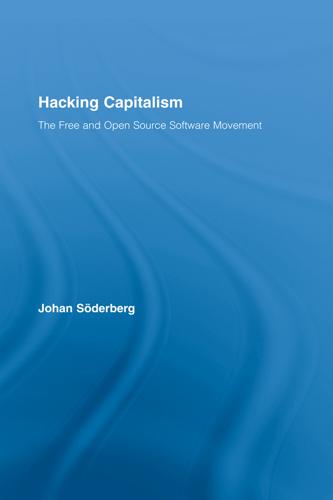
Hacking Capitalism
by
Söderberg, Johan; Söderberg, Johan;
The viewpoint that liberation could be found apart from labour grew in popularity in the nineteenth century when hard and hazardous toil was reduced by the introduction of machinery. The hope was part of a general optimism about modernisation and progress that extended far beyond the socialist camp. A techno-utopian vein underpins the liberal cult of economic growth. Indeed, liberalism nourishes the same narrative, where scientific discoveries and general welfare are accumulated over time until scarcity and toil have been abolished. Of course, that day is forever postponed. The utopian goalpost turns instead into a justification for the sacrifices expected of the working class.

The Coming Wave: Technology, Power, and the Twenty-First Century's Greatest Dilemma
by
Mustafa Suleyman
Published 4 Sep 2023
I’ve written it in a spirit of openness and inquiry: make observations, follow their implications, but also remain open to refutation and better interpretations. There is nothing I want more than to be proven wrong here, than for containment to be readily possible. Some people may understandably expect a more techno-utopian book from someone like me, a founder of two AI companies. As a technologist and entrepreneur, I am, by default, an optimist. As a young teenager, I remember being totally captivated after installing Netscape for the first time on my Packard Bell 486 PC. I was entranced by the whirring fans and the distorted whistling of my 56 Kbps dial-up modem reaching its hand out to the World Wide Web and connecting me to forums and chat rooms that gave me freedom and taught me so much.
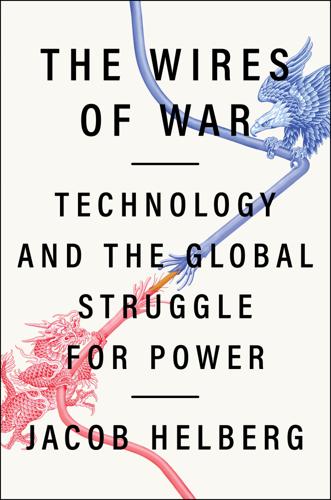
The Wires of War: Technology and the Global Struggle for Power
by
Jacob Helberg
Published 11 Oct 2021
The Facebook page for the Flat Earth Society has more than 225,000 followers, each no doubt further convinced of the rightness of their fringe views.18 After all, how could nearly a quarter-million people be wrong? Singer and Brooking, the authors of LikeWar, cite a mordant observation by the onetime military officer and historian Robert Bateman: “Once, every village had an idiot. It took the internet to bring them all together.”19 The techno-utopians of the ARPANET age lived by the belief that “information wants to be free.”20 Truth, they believed, would ultimately triumph over lies. Yet in the years since, the Internet has become a double-edged sword. Social media has given the student activists produced by the 2018 Parkland shooting the megaphone that comes with several million Twitter followers.

Hacking Politics: How Geeks, Progressives, the Tea Party, Gamers, Anarchists and Suits Teamed Up to Defeat SOPA and Save the Internet
by
David Moon
,
Patrick Ruffini
,
David Segal
,
Aaron Swartz
,
Lawrence Lessig
,
Cory Doctorow
,
Zoe Lofgren
,
Jamie Laurie
,
Ron Paul
,
Mike Masnick
,
Kim Dotcom
,
Tiffiniy Cheng
,
Alexis Ohanian
,
Nicole Powers
and
Josh Levy
Published 30 Apr 2013
Aaron has largely been memorialized as an advocate for copyright reform, information access, and Internet freedom. He was indeed such, but he was also so much more. He probably first cared about those causes for their own sakes, but his work on them provided a window into politics that made it impossible to ignore broader systemic corruption and injustices. He wasn’t a techno-utopian who believed that open access and an open Internet would alone fix all that ails humanity; he came to believe that a constant, directed, ideologically left-leaning layer of activism needed to be built on top of these platforms. This transformation is perhaps best elucidated by Aaron himself in his own words, from a talk he gave at the Freedom to Connect conference in 2012.

Open Standards and the Digital Age: History, Ideology, and Networks (Cambridge Studies in the Emergence of Global Enterprise)
by
Andrew L. Russell
Published 27 Apr 2014
For example, it would be especially unwise for engineers in other industries (such as those who build bridges and airplanes) to bring the “procrastination principle” into their own design philosophies. The history of networking provides no reason to ignore the IBM software engineer Fred Brooks’s insistence that “conceptual integrity is the most important consideration in system design.”6 Rather than add to the chorus of observers who see the Internet as the harbinger and enabler of a techno-utopian “open world,” I have chosen to situate the Internet within a deeper and more complex set of technical, political, and organizational contexts. Rather than focus on the lessons that past information networks can teach us in the present, I have chosen to study how the designers of networks responded to their own circumstances and how they have seen these through their own eyes.
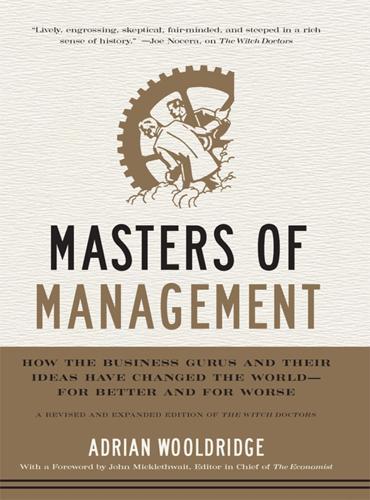
Masters of Management: How the Business Gurus and Their Ideas Have Changed the World—for Better and for Worse
by
Adrian Wooldridge
Published 29 Nov 2011
Free is essentially an extended meditation on an idea that has long been popular in tech circles—that “information wants to be free”; that digital technology is making it ever easier to store and distribute anything that is “made out of ideas,” smashing barriers to entry, destroying business empires, and driving the price of information down toward zero. Anderson’s take on “free” is a mixture of fatalism and techno-utopianism. His advice to people who worry about piracy is brutal: get over it. Stop fighting the inevitable and start reconceptualizing piracy as a marketing opportunity rather than a threat. To a large extent that is also his take on the entire “free” economy. Wonderful things will happen if we just allow prices to fall to their natural level, he argues: wonderful things for consumers, who will gain access to a cornucopia of books and music, but also wonderful things for companies, if they can learn how to use free things as a “hook” to get people to spend money on other things.

Make Your Own Job: How the Entrepreneurial Work Ethic Exhausted America
by
Erik Baker
Published 13 Jan 2025
Jobs imbibed not only its sense of the liberatory potential of useful tools, but Brand’s identification of liberation with entrepreneurial work. In 1969, Brand told Rolling Stone that Ayn Rand and her novel Atlas Shrugged had “inspired” the Catalog, “just like” Brand’s more publicized muse, the techno-utopian philosopher Buckminster Fuller. As the Rolling Stone journalist put it, “the Catalog reflects Brand’s somewhat anarchistic political and economic philosophy, which puts a strong emphasis on entrepreneurship.” The PC, in Jobs’s view, was the ultimate Brand-style tool. It helped, of course, that Brand himself became extremely enthusiastic about computers in the 1970s, and even claimed to have coined the phrase “personal computing.”37 But as much as scholars have emphasized Brand’s influence on Jobs and other Silicon Valley leaders, it is important to recognize that squarer sources in the 1960s also laid the groundwork for the Apple vision of technological innovation as social entrepreneurship.
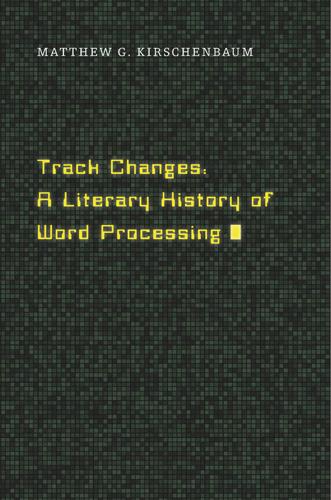
Track Changes
by
Matthew G. Kirschenbaum
Published 1 May 2016
Ben Kafka perceptively scrutinizes the film in his The Demon of Writing: Powers and Failures of Paperwork (New York: Zone Books, 2012), and places particular emphasis on the closing catechism: “What if we shifted the emphasis just a little bit?” asks Kafka. “From ‘machines should work, people should think’ to ‘machines should work, people should think.’ Is it possible that the film might be trying to warn us against its own techno-utopianism?” (146–150). 23. Frank M. Knox, Managing Paperwork: A Key to Productivity (New York: Van Nostrand Reinhold, 1980), ix. 24. See Zuboff, In the Age of the Smart Machine: The Future of Work and Power (New York: Basic Books, 1988), 301–310. 25. Knox, Managing Paperwork, ix. 26. See Thomas Haigh, “Remembering the Office of the Future,” IEEE Computer Society 28, no.4 (2006): 8. 27.

We Are the Nerds: The Birth and Tumultuous Life of Reddit, the Internet's Culture Laboratory
by
Christine Lagorio-Chafkin
Published 1 Oct 2018
Two days later, he reached back out to Wong and told him he’d like to take charge of putting together a major round of funding for the site. Wong had a slate of requirements, and a longer wish list. He wanted certain investors to participate, including Peter Thiel, his former PayPal colleague who’d become legendary for his early investment in Facebook and interest in far-out ideas such as building government-free techno-utopian floating islands. Also on Wong’s list of preferred backers were Hollywood types, including rapper Snoop Dogg and the actor Jared Leto. Wong also, as Altman recalls, wanted to prevent Reddit from getting screwed by investors. He wanted investors who wouldn’t try to steer Reddit into trying to grow too fast, or do anything to alienate users in the aim of making money.

Superintelligence: Paths, Dangers, Strategies
by
Nick Bostrom
Published 3 Jun 2014
The idea of a coming technological singularity has by now been widely popularized, starting with Vernor Vinge’s seminal essay and continuing with the writings of Ray Kurzweil and others.4 The term “singularity,” however, has been used confusedly in many disparate senses and has accreted an unholy (yet almost millenarian) aura of techno-utopian connotations.5 Since most of these meanings and connotations are irrelevant to our argument, we can gain clarity by dispensing with the “singularity” word in favor of more precise terminology. The singularity-related idea that interests us here is the possibility of an intelligence explosion, particularly the prospect of machine superintelligence.
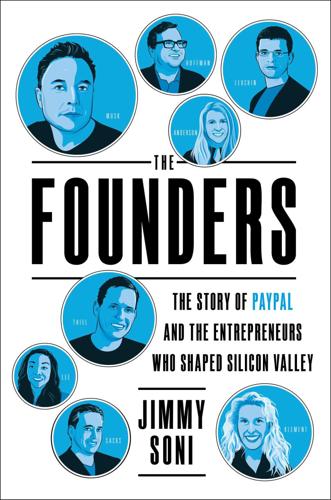
The Founders: The Story of Paypal and the Entrepreneurs Who Shaped Silicon Valley
by
Jimmy Soni
Published 22 Feb 2022
They’ve also been at the center of the biggest social, cultural, and political controversies of our age, including bitter fights over free speech, financial regulation, privacy in technology, income inequality, the efficacy of cryptocurrency, and discrimination in Silicon Valley. For its admirers, PayPal’s founders are a force to be emulated. For its critics, the group represents everything wrong with big tech—putting historically unprecedented power into the hands of a small clutch of techno-utopian libertarians. Indeed, it is hard to find a lukewarm opinion about PayPal’s founders—they are either heroes or heathens, depending on who offers the judgment. * * * And yet, despite all that, the PayPal days themselves are usually glossed over. If the early years come up at all, they are typically granted a polite paragraph crediting PayPal for making the later, splashier achievements possible.
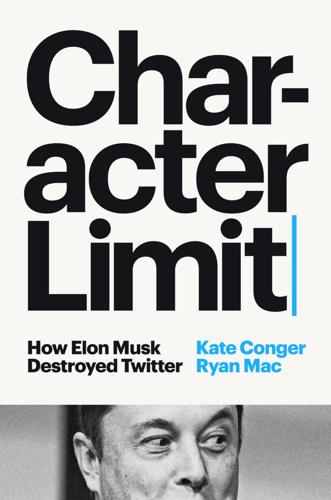
Character Limit: How Elon Musk Destroyed Twitter
by
Kate Conger
and
Ryan Mac
Published 17 Sep 2024
He had met Claire Boucher, the musician known as Grimes, over Twitter, and the couple appeared together at the 2018 Met Gala. She was seventeen years his junior, but the elfish singer, known for her futuristic style and shock value antics, was a kindred spirit. She, too, dreamed of dying on Mars and was fascinated by the possibility of a techno-utopian future governed by AI. Musk rarely sought peace in his romantic life. He had previously dated the actress Amber Heard, in a relationship that seemed to swing wildly between extremes of passion and anger. Their bust-ups, which mostly stayed out of the major gossip rags, were infamous among his family and staff.

Growth: From Microorganisms to Megacities
by
Vaclav Smil
Published 23 Sep 2019
Silva Fennica 33:327–336. Felton, N. 2008. Consumption spreads faster today. http://www.nytimes.com/imagepages/2008/02/10/opinion/10op.graphic.ready.html. Ferguson, N. 2004. Empire: How Britain Made the Modern World. London: Penguin. Ferguson, N. 2012. Don’t believe the techno-utopian hype. Newsweek, July 30. http://www.newsweek.com/niall-ferguson-dont-believe-techno-utopian-hype-65611. Fernández-González, F. 2006. Ship Structures under Sail and under Gunfire. Madrid: Universidad Politécnica de Madrid. Ferreira, A. A. 2012. Evaluation of the growth of children: Path of the growth charts. Demetra 7:191–202. Ferreira, F.
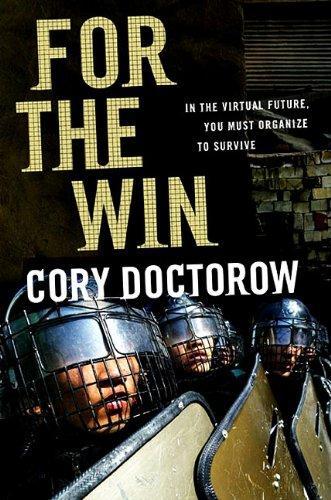
For the Win
by
Cory Doctorow
Published 11 May 2010
“All right then,” Perry said, “home again home again.” Hilda gave his groin a friendly honk and then made a dash for it, and he gave chase. PHOTO: A Drunken Perry Gibbons Gets a How’s Your Father From Ride-Bride Hilda Hammersen MADISON, WI: Say you managed to inspire some kind of “movement” of techno-utopians who built a network of amusement park rides that guide their visitors through an illustrated history of the last dotcom bubble. Say that your merry band of unwashed polyamorous info-hippies was overtaken by jackbooted thugs from one of the dinosauric media empires of yesteryear, whose legal machinations resulted in nationwide raids, beatings, gassings, and the total shutdown of your “movement.”
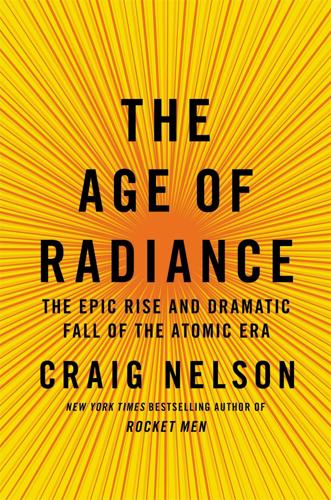
The Age of Radiance: The Epic Rise and Dramatic Fall of the Atomic Era
by
Craig Nelson
Published 25 Mar 2014
Curie is today known for her breakthroughs as a woman, not as a scientist. The public’s distaste has grown so pronounced that European physicists created a PR organization, Public Awareness of Nuclear Science, to fix their image problem. Today’s prejudice against all things atomic is as naive as was the 1920s radium euphoria and the 1950s techno-utopians predicting nuclear-derived electricity as “too cheap to meter.” In the case of nuclear power, most of the world has come to a decision. What Three Mile Island, Chernobyl, and Fukushima all have in common is that the public relations disaster was far worse than the pollution’s health effects.

Never Let a Serious Crisis Go to Waste: How Neoliberalism Survived the Financial Meltdown
by
Philip Mirowski
Published 24 Jun 2013
The reason this array qualifies as neoliberal is twofold: initially, they were all proposals originating from within the array of think tanks and academic units affiliated with the Neoliberal Thought Collective; and then, if and when they come to be deployed in tandem, the net consequence is to leave the entire problem to be solved, ultimately not by the state, but rather by the market. The promotion of denialism buys time for the other two options; the financialization of carbon credits gets all the attention in the medium term, while appeals to geoengineering incubate in the wings as a techno-utopian deus ex machina to swoop down when the other options fail. At each step along the way, the neoliberals guarantee their core tenet remains in force: the market will arbitrate any and all responses to biosphere degradation, because it knows more than any of us about nature and society. As a bonus from the neoliberal vantage point, perhaps some segments of the left, operating under the quaint impression they can effectively oppose one or more of these options they find anathema by advocating another—say, aiming to defeat science denialism or geoengineering by taking up advocacy of carbon trading—end up being recruited as unwitting foot soldiers for the neoliberal long march.

Power and Progress: Our Thousand-Year Struggle Over Technology and Prosperity
by
Daron Acemoglu
and
Simon Johnson
Published 15 May 2023
Manyika, James, Susan Lund, Michael Chui, Jacques Bughin, Jonathan Woetzel, Parul Batra, Ryan Ko, and Saurabh Sanghvi. 2017. “Jobs Lost, Jobs Gained: Workforce Transitions in a Time of Automation,” McKinsey Global Institute, December. https://www.mckinsey.com/~/media/BAB489A30B724BECB5DEDC41E9BB9FAC.ashx. Marantz, Andrew. 2020. Antisocial: Online Extremists, Techno-Utopians and the Hijacking of the American Conversation. New York: Penguin. Marcus, Gary, and Ernest Davis. 2020. “GPT-3, Bloviator: OpenAI’s Language Generator Has No Idea What It’s Talking About.” MIT Technology Review, August 22. Marcus, Steven. 1974 [2015]. Engels, Manchester, and the Working Class.

The Innovators: How a Group of Inventors, Hackers, Geniuses and Geeks Created the Digital Revolution
by
Walter Isaacson
Published 6 Oct 2014
When he went to teach at the University of Michigan, he helped to build a company around a computer conferencing system that had been created on the university’s network. Known as PicoSpan, it allowed users to post comments on different topics and strung them into threads for all to read. Brilliant’s idealism, techno-utopianism, and entrepreneurialism flowed together. He used the conferencing system to bring medical expertise to Asian hamlets and organize missions when something went wrong. When Brilliant went to a conference in San Diego, he called his old friend Stewart Brand for lunch. They met at a beachside restaurant near where Brand planned to spend the day skinny-dipping.

The Code: Silicon Valley and the Remaking of America
by
Margaret O'Mara
Published 8 Jul 2019
Their knowledge of computing came from their prior participation in the technocratic system they criticized. And they weren’t all kids. Many were professionals in their twenties and thirties, with children, mortgages, and graduate degrees. Thus the gulf between the scientific Cold Warriors and the techno-utopians was not as great as it seemed. Many of the ideas that animated the personal-computer crusade, like human-computer interaction and networked collaboration, were the same ones that had consumed the Cambridge seminars of Norbert Wiener in the 1940s and the labs of McCarthy and Minsky and Licklider in the 1950s.

Global Catastrophic Risks
by
Nick Bostrom
and
Milan M. Cirkovic
Published 2 Jul 2008
, and apocalyptic impulses, both religious and secular, seeing them as irrational at best, and potentially murderous and totalitarian at worst. They certainly can manifest in the dangerous and irrational ways as I have catalogued in this essay. But they are also an unavoidable accompaniment to public consideration of catastrophic risks and techno-utopian possibilities. We may aspire to a purely rational, technocratic analysis, calmly balancing the likelihoods of futures without disease, hunger, work or death, on the one hand, against the likelihoods of worlds destroyed by war, plagues or asteroids, but few will be immune to millennia! biases, positive or negative, fatalist or messianic.
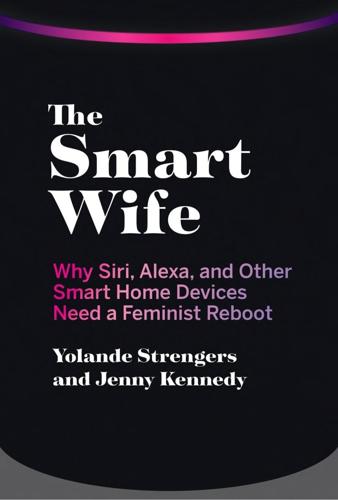
The Smart Wife: Why Siri, Alexa, and Other Smart Home Devices Need a Feminist Reboot
by
Yolande Strengers
and
Jenny Kennedy
Published 14 Apr 2020
The Jetsons sitcom ran from 1962 to 1963, and was resurrected with new episodes between 1985 and 1987. It packaged up every space-age dream promised to the United States at the time: jetpacks, flying cars, and yes, robot maids. While none of the ideas were particularly novel, the show presented an entertaining smorgasbord of technoutopian ideals, ready for consumption by America’s emerging tweens and teens.6 Danny Graydon, author of The Jetsons: The Official Guide to the Cartoon Classic, links the show’s emergence to a future-focused United States during and after the Vietnam War when the “space race” was underway. The program appealed to Americans’ nostalgia for the past and optimism for their future.

Radical Technologies: The Design of Everyday Life
by
Adam Greenfield
Published 29 May 2017
And if given technologies cannot be evaluated at the level of their designers’ intention, we need to be still more wary of the promises made to us by developers, promoters and others with a material interest in seeing them spread. The most misleading aspect of this body of rhetoric perennially resides in the gulf between technoutopian claims about what some emergent innovation “might” or “could” give rise to, on the one hand, and anything it has actually been seen to do on the other.3 Very often the claimed benefits never do come to pass, while the easily foreseeable (and, in fact, explicitly foreseen) negative consequences invariably do crop up, and are left for others to deal with.

After the New Economy: The Binge . . . And the Hangover That Won't Go Away
by
Doug Henwood
Published 9 May 2005
There was something aberrational about the late 1990s, for sure, but the New Economy moment was a manic set of variations on ancient themes, all promoted from the highest places. Presidents and treasury secretaries restructured economies, encouraged by Wall Street analysts and Alan Greenspan.Techno-utopianism is an old theme in American culture. Bill Gates's fantasies of the frictionless economy—spun out, it's said, with the assistance of thirteen ghostwriters—^were the latest incarnation of an old elite desire to put workers and the ugly things that sometimes come with them out of sight. We've been hearing about postindustrial society 2 Introduction for at least thirty years; if it had come about, would we have to worry about global warming?

On the Move: Mobility in the Modern Western World
by
Timothy Cresswell
Published 21 May 2006
Seeing it as a space where motion, meaning, and power come together enacts such an unpacking. A politics of mobility directs our attention to the relations among different experiences of mobility and the relations between mobility and obduracy. It recognizes the importance of mobility in the modern world, but does not mistake it for a technoutopian general condition. It insists on the importance of particular contexts for the production and consumption of mobility. It All Comes Together in Schiphol—From Roots to Routes Writing about the airport runs the risk of generalizing the airport experience in a way I would not want to repeat. Clearly, the experience of Singapore’s Changhi or London’s Heathrow is vastly different from that of Salisbury, Maryland, or Liverpool’s John Lennon.
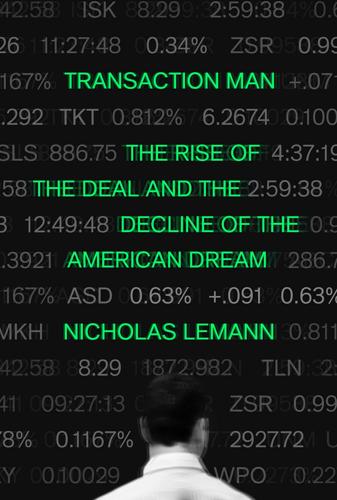
Transaction Man: The Rise of the Deal and the Decline of the American Dream
by
Nicholas Lemann
Published 9 Sep 2019
Partly for that reason, he and his wife had decided not to have children: a family was too small a project compared to the time it would take from working on larger ones. Although neither Reid Hoffman nor Michelle Yee was conventionally religious—Hoffman liked to call himself a “mystical atheist” or a “techno-utopian”—they were both drawn to Buddhist meditation practice, and there was a strong element of home-brew religion in the way that Hoffman saw the world. He liked coherent belief systems, with instructive, heroic myths and legends, and moral principles enforced through rules. As a freshman at Stanford, he had encountered—and posted on his dorm room door where his future wife could see it—this famous quote from Hillel, the ancient Jewish sage: “If I am not for myself, who will be for me?
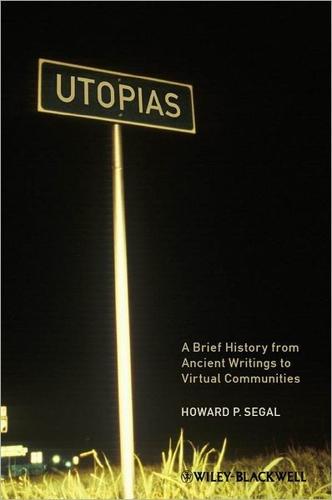
Utopias: A Brief History From Ancient Writings to Virtual Communities
by
Howard P. Segal
Published 20 May 2012
Until social, political, economic, and cultural progress caught up with scientific and technological progress, scientific and technological progress would have to level off in selected areas. The Pansophists In their greater optimism, the Pansophists stood closer than does More to scientific and technological utopianism. Their religious orientation, however, sharply differentiated them from secularminded scientific and technological utopianism, for they sought a civilization, called Pansophia, that would harmoniously join Christianity, science, and technology. Their ideas were articulated in three works that appeared over a period of eight years: Andreae’s Christianopolis (1619),12 Campanella’s The City of the Sun (1623),13 and Bacon’s The New Atlantis (1627).14 Like More’s Utopia, these works recount the adventures of travelers who have discovered societies unknown to Europeans and have returned home to announce their findings.
…
Yet Comte eventually followed Saint-Simon in expanding his vision to accommodate spirituality. Both men were reluctant to embrace a purely scientific and technological utopian vision.19 In short, all of the European prophets of scientific and technological progress—from More to the Pansophists to Condorcet to Saint-Simon and Comte—either refrained or retreated from endorsing unadulterated scientific and technological advance. Their reasons differed, but none was a scientific and technological utopian in the final analysis. To each, other aspects of life were (or became) no less important than scientific and technological advancement.
…
The many examples of reconciliation between nature and technology throughout American history cannot be overemphasized. The American Utopias and Utopians and Their Critics Chapter 5 Growing Expectations of Realizing Utopia in the United States and Europe Later American Technological Utopians: John Macnie Through Harold Loeb If no prominent Europeans were genuine technological utopians, this was not true of Americans—though there were hardly as many as one might think. For all the rhetoric in American history about the uniqueness of the nation’s natural and man-made wealth, about an American “exceptionalism” that favored scientific and technological progress, and that equated human progress with scientific and technological progress, surprisingly few Americans have provided actual blueprints for a better society.

How Not to Network a Nation: The Uneasy History of the Soviet Internet (Information Policy)
by
Benjamin Peters
Published 2 Jun 2016
In cold war science research, it appears that the more distant and closed the discovery, the easier our narcissism; the closer and more open the discovery in states of emergency, the easier our negligence. Making Modern Network Culture Strange The story of the OGAS Project reveals a network culture whose design values—the cybernetic nervous system of the nation, socialist technological utopianism, and decentralized computer networks—now appear to be peculiar to its own time and place. This sustained glance at the strangeness of socialist network projects helps make familiar the foreignness of the modern network culture in historical relief. Consider a hardy perennial of new media thought, the politics of technological utopia, for the OGAS Project was nothing if not a projection of an intrepid socialist future.
…
Consider a hardy perennial of new media thought, the politics of technological utopia, for the OGAS Project was nothing if not a projection of an intrepid socialist future. Socialist politics are no strangers to expansive, sometimes wild flights of imagination about the bounteous blessings of technology. Although technological utopianism belongs to social projects of all types, the socialist tradition boasts a special breed of thinking, including the French socialist utopian thinker Charles Fourier (whose early interests in architecture and engineering were thwarted and who later worked briefly in Paris as head of the Office of Statistics), Karl Marx (who theorized about a socialist revolution near the end of the Industrial Revolution in London), Nasser in Egypt, Tito in Yugoslavia, Nehru in India, the Fabian Society and Labor Party in the United Kingdom, Allende’s Cybersyn Project in Chile, and most recently the (independent) Pirate Party of Sweden.11 In each of these cases, the socialist impulse seeks to flatten out social relations, structurally reorganize society, automate and ease labor, roll out statistical (state) accountability, and gather knowledge that lightens, lifts, and liberates people (even though the effects of such technological utopianism often leans toward shades of dystopia).12 By imagining the OGAS as a means to a brighter networked Communist future, its architects brought upon the project the full brunt of the oikos-led inequalities that drove the administration of Soviet socialism.
…
Although technological utopianism belongs to social projects of all types, the socialist tradition boasts a special breed of thinking, including the French socialist utopian thinker Charles Fourier (whose early interests in architecture and engineering were thwarted and who later worked briefly in Paris as head of the Office of Statistics), Karl Marx (who theorized about a socialist revolution near the end of the Industrial Revolution in London), Nasser in Egypt, Tito in Yugoslavia, Nehru in India, the Fabian Society and Labor Party in the United Kingdom, Allende’s Cybersyn Project in Chile, and most recently the (independent) Pirate Party of Sweden.11 In each of these cases, the socialist impulse seeks to flatten out social relations, structurally reorganize society, automate and ease labor, roll out statistical (state) accountability, and gather knowledge that lightens, lifts, and liberates people (even though the effects of such technological utopianism often leans toward shades of dystopia).12 By imagining the OGAS as a means to a brighter networked Communist future, its architects brought upon the project the full brunt of the oikos-led inequalities that drove the administration of Soviet socialism. Perhaps the cardinal mistake of the socialist imagination of technology is not to dream the celebrated dream of social justice but to bulldoze the rutted world of human relations with the private interest logics of the oikos (military, corporations, states, and individuals that seek only their own survival).

The New Class Conflict
by
Joel Kotkin
Published 31 Aug 2014
But even if they cannot achieve the traditional milestones of middle-class life, the millennials can genuflect to those creating the products and services that occupy their time and keep them in touch with friends. Indeed in a recent survey of high-performing high school seniors, Apple, Google, and Microsoft ranked among the most preferred private companies, beaten only by the traditional maker of puerile dreams, the Walt Disney Company.34 Technological Utopianism The innate sense of superiority and elevated status within the information hierarchy reflects attitudes about technology as the primary driver of societal change. First nurtured in the late nineteenth and early twentieth centuries, the notion that technological change constitutes the great hope of mankind was widely shared across a broad spectrum of otherwise incompatible, even hostile, ideologies.
…
NASA and the Defense Department40 were dominant among early customers, while Lockheed Missiles and Space remained easily the Valley’s largest employer as late as the 1980s.41 But as the technological revolution shifted from hardware to software, and federal spending dropped, Silicon Valley began to diverge from the Galbraithian model. These new players were animated not by conventional business thinking but by something defined by Richard Barbrook and Andy Cameron as “the California ideology,” a unique amalgam of free market conservatism, social liberalism, and technological utopianism.42 This synthesis differed from the Galbraithian ideal in terms of corporate culture. On the individual level, the new California executives cast a very different image than the company men of earlier science-based aerospace and computer firms. Top executives no longer stayed in firms for decades or a lifetime, but shifted between companies, often starting their own.

The New Rules of War: Victory in the Age of Durable Disorder
by
Sean McFate
Published 22 Jan 2019
After $1.5 trillion spent, twenty-five years of development undergone, and no combat missions flown during two long wars, it is incredible that the military still wants to purchase 2,443 of these things. Even the Pentagon’s chief weapons buyer admits that the F-35 is “acquisitions malpractice.”7 It is not just the F-35—it’s everything. People want cool stuff, rather than weapons that work. This is technological utopianism, and it is part of the Western way of war. Aircraft carriers do not defeat threats like ISIS, yet the United States launched another one in 2017, which cost $13 billion. Its purpose, in the words of President Trump, who launched it, was to “demolish and destroy ISIS.” Ironically, this ship cost more than the entire budget of US special operations forces, which are effective against ISIS.
…
See also Russia containment policy, 78–79 “evil empire,” 21 February Revolution, 219–21 Fulda Gap, 33, 103–4 war futurists and, 13–14 Space police force, 69 SpaceX, 138 Spanish-American War, 202 Special operations forces (SOF), 9, 98–99, 248 increasing budget, 24, 37–38 rebalancing of, 40–41 Stalin, Joseph, 96–97, 104, 215 Standards of Training, Certification, and Watchkeeping (STCW), 56 State Department, U.S., 41–42, 71, 209, 217, 232 Stateless wars, 171–93 drug wars, 171–78 private wars, 185–93 redefining war, 179–85 Stethem, USS, 59–63, 270n “Sticky power,” 216, 292n Strategic atrophy, 5–12, 260n Strategic vs. tactical thinking, 233–37 “Structure,” 284n Stuxnet, 16, 201 Subversion, 203–6 Sudanese Civil War, 136, 146, 152, 182 Suez Crisis, 79 Summerall, Charles P., 18 Sunni-Shia divide, 8, 26, 27, 74, 183–84 Sun Tzu, 4, 66, 111, 204–5, 207, 218, 222, 233 Thirty-Six Stratagems, 65, 248, 253–55 Superman strategy, 72 Super-rich, 165–66, 247 hiring mercenaries, 145–46, 151–52, 154–55 Surface warfare officers (SWOs), 55–56 “Symmetrical war,” 29 Syriac Military Council, 145 Syrian Civil War, 27, 32, 101, 149, 168, 244 mercenaries, 132–36 refugees, 104–6 Tacitus, 90 “Tactization” of strategy, 233–37 Taliban, 1, 95, 96, 113, 230 TALOS (Tactical Assault Light Operator Suit), 14, 261n Tamil Tigers, 8, 96 Taylor, Charles, 147–48 Technological utopianism, 46, 48 Technology, 43–57 investing in people vs. machines, 52–57 Lockheed Martin F-35, 43–46, 47 overreliance on, 43–47, 55 Third Offset Strategy, 47–50 war algorithm, 50–51 Technophiles, 13, 14–17, 22–23 Terminator Conundrum, 15 Terrorism, 109–10, 135–36, 153–54 Tet Offensive, 223–26 Thatcher, Margaret, 165 Third Offset Strategy, 47–50, 55, 56, 166 Thirty-Six Stratagems, 190, 205, 206, 248, 253–55 Thirty Years’ War, 30, 74, 187 Thucydides, 212 Thumma, Scott, 143–44 Tibet, 97 Tiger Guards, 145 Titus, 86–87 Ton Son Nhut Air Base, 224 Treasury Department, U.S., 41–42 Treaty of Brest-Litovsk, 220–21 Trinquier, Roger, 95 Triple Canopy, 131, 136 “Troll Factory,” 201–3 Trolls, 111, 214 Truman, Harry, 2, 79 Trump, Donald, 46, 70, 130, 158, 159, 167, 168, 202 Turkey, 162–63 Turkistan Islamic Party, 135–36 Twelfth Legion, 84–86 Ukraine, Orange Revolution, 112–13, 215 Ukrainian conflict, 64, 134–35, 195–98, 199–200, 203, 245 UkrTransNafta, 135 Unconventional wars, 28 number of, 35–36, 36 redefining war, 179–85 use of term, 29 Uniform Code of Military Justice, 101–2 United Arab Emirates, 134, 140 United Fruit Company, 208–9, 211 United Nations (UN), 3, 9, 32, 81, 139 Law of the Sea, 68 outsourcing peacekeeping, 280–81n peacekeeping missions, 2, 8, 32, 136, 146, 148, 153 Unrestricted Warfare (Qiao and Wang), 65 US Agency for International Development (USAID), 41–42 “Utility of force,” 106–8 Utopia (More), 127 Uzbekistan, 135, 153 “Vanishing point of law,” 139 Varangian Guard, 127 Velvet regime change, 112–13 Vercingetorix, 126 Vespasian, 86 Victory, 219–40 choosing weapon of war, 229–31 developing war artists, 237–40 February Revolution, 219–21 myth of bifurcated, 232–33, 235 secret to winning, 221–23 “tactization” of strategy, 233–37 use of term, 221–22 Vietnam War and, 223–29 Vietnam War, 1, 96, 122, 211, 223–29, 232–33 Wagner Group, 132, 133, 134 Wall Street, 165–66 WannaCry ransomware attack, 137–38 War algorithm, 50–51 War and peace, 59–82 exploding heads, 70–74 grand strategy, 74–82 nonwar wars, 64–70 South China Sea incident of 2017, 59–63 War artists, 237–40, 247 War colleges, 235–40 War dogs, 121–25 Warfare, 4, 6 war vs., 27–28 War futurists, 11–17 Billy Mitchell, 17–19, 20 Cassandra’s Curse, 20 false prophets, 12–17 identifying, 20–22 Warlords, 147–48, 149, 156–57, 182, 193 War of Eight Saints, 26–27 War on Drugs, 175, 176 Warrior-diplomats, 41 “War termination,” 246 War without states.
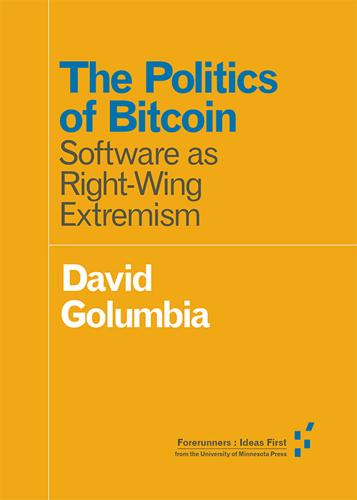
The Politics of Bitcoin: Software as Right-Wing Extremism
by
David Golumbia
Published 25 Sep 2016
Most of those involved in the development and early adoption of Bitcoin were and are part of several intersecting communities who have long put a huge amount of faith into very specific technological–political orientations toward the world, ones grounded in overtly right-wing thought, typically coupled with myopic technological utopianism. These include movements like Extropians, cypherpunks, crypto-anarchists, political libertarians with an interest in technology, transhumanists, Singularitarians, and a wide swath of self-described hackers and open source software developers. Sometimes the politics of these individuals and the groups in which they travel are inchoate, but often enough they are explicit (see Carrico 2009, 2013a, 2013b for detailed discussions of these various movements, focusing in particular on their politics).

The Age of Surveillance Capitalism
by
Shoshana Zuboff
Published 15 Jan 2019
Applied Utopistics Instrumentarian power, like the apprentice’s broom, has flourished in the sorcerer’s absence with little authority to check its action, and the surveillance capitalists’ appetite for totality has grown with this success. The utopian rhetoric of a magical age has been critical to this progress. The notion that Big Other will solve all of humanity’s problems while empowering each individual is usually dismissed as mere “techno utopianism,” but it would be a mistake for us to ignore this rhetoric without examining its purpose. Such discourse is no mere hogwash. It is the minesweeper that precedes the foot soldiers and the canny diplomat sent ahead to disarm the enemy and smooth the way for a quiet surrender. The promise of a magical age plays a critical strategic role, simultaneously distracting us from and legitimating surveillance capitalism’s totalistic ambitions that necessarily include “people” as a “first class object.”
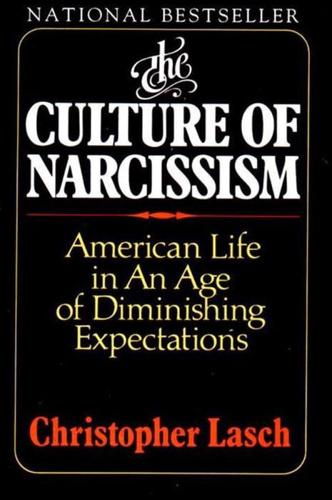
The Culture of Narcissism: American Life in an Age of Diminishing Expectations
by
Christopher Lasch
Published 1 Jan 1978
More recently Tom Wolfe has interpreted the new narcissism as a "third great awakening an outbreak of orgiastic, ecstatic religiosity Jim Hougan, in a book that seems to present itself simultaneously as a critique and a celebration of - , , " , " The sense of an ending . . . is . . . endemic to what we call modernism, In general, we seem to combine a sense of decadence in society-as evidenced by the concept of alienation, which, supported by a new *" writes Frank Kermode. " . . . interest in the early Marx, has never enjoyed more esteem-with a technological utopianism. In our ways of thinking about the future there are contradictions which, if we were willing to consider them openly, might call for some effort " toward complementarity. But they lie, as a rule, too deep. Susan Sontag, noting that "people take the news of their doom in diverse ways, contrasts the apocalyp" tic imagination of earlier ages with that of today.
…
A widespread revolt against reason is as much a feature of our world as our faith in science and technology Archaic myths and superstitions have reappeared in the very heart of the most modern, scientifically enlightened and progressive nations in the world The coexistence of advanced technology and primitive spirituality suggests that both are rooted in social conditions that make it increasingly difficult for people to accept the reality of sorrow loss, aging, and death-to . , . , live with limits , in short. The anxieties peculiar to the modem world seem to have intensified old mechanisms of denial. New Age spirituality no less than technological utopianism , , is rooted in primary narcissism If the technological fantasy seeks to restore the infantile illusion of self sufficiency the New Age movement seeks to restore the illusion of symbiosis, a feeling of absolute . - , oneness with the world . Instead of dreaming of the imposition of human will on the intractable world of matter, the New Age movement, which revives themes found in ancient Gnosticism simply denies the reality of the material world By treating matter essen, . 246 : Afterword: The Culture of Narcissism Revisited tially as an illusion, it removes every obstacle to the re-creation of a primary sense of wholeness and equilibrium-the return to Nirvana.

The Net Delusion: The Dark Side of Internet Freedom
by
Evgeny Morozov
Published 16 Nov 2010
“The authoritarian state is inherently fragile and will quickly collapse if information flows freely,” wrote Pool, giving rise to a view that has become widely shared—and, undoubtedly, made Pool and his numerous followers overestimate the liberating power of information. (Pool, a disillusioned ex-Trotskyite, also famously overestimated the power of Western broadcasting, using letters that Eastern Europeans sent to Radio Free Europe as one of his main sources.) Such technological utopianism stems from a rather shallow reading of the politics and regime dynamics of authoritarian states. For if one presumes, like Pool, that authoritarian structures rest on little else than the suppression of information, as soon as the West finds a way to poke holes in those structures, it follows that democracy promotion boils down to finding ways to unleash the information flood on the oppressed.
…
Scannell, P. “The Dialectic of Time and Television.” Annals of the American Academy of Political and Social Science 625, no. 1 (2009): 219. Schaniel, W. C. “New Technology and Culture Change in Traditional Societies.” Journal of Economic Issues 22, no. 2 (1988): 493-498. Segal, Howard P. Technological Utopianism in American Culture. Syracuse, NY: Syracuse University Press, 2005. Shen, X. The Chinese Road to High Technology: A Study of Telecommunications Switching Technology in the Economic Transition. New York: St. Martin’s, 1999. Sibley, M. Q. “Utopian Thought and Technology.” American Journal of Political Science (1973): 255-281.
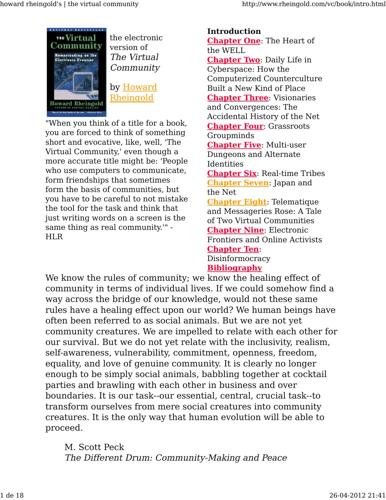
Howard Rheingold
by
The Virtual Community Homesteading on the Electronic Frontier-Perseus Books (1993)
Published 26 Apr 2012
We temporarily have access to a tool that could bring conviviality and understanding into our lives and might help revitalize the 26-04-2012 21:41 howard rheingold's | the virtual community 16 de 18 http://www.rheingold.com/vc/book/intro.html public sphere. The same tool, improperly controlled and wielded, could become an instrument of tyranny. The vision of a citizendesigned, citizen-controlled worldwide communications network is a version of technological utopianism that could be called the vision of "the electronic agora." In the original democracy, Athens, the agora was the marketplace, and more--it was where citizens met to talk, gossip, argue, size each other up, find the weak spots in political ideas by debating about them. But another kind of vision could apply to the use of the Net in the wrong ways, a shadow vision of a less utopian kind of place--the Panopticon.
…
Nevertheless, this perspective does capture something about the way the effects of communications technologies have changed our modes of thought. One good reason for paying attention to the claims of the hyper-realists is that the society they predicted decades ago bears a disturbingly closer resemblance to real life than do the forecasts of the rosier-visioned technological utopians. While McLuhan's image of the global village has taken on a certain irony in light of what has happened since his predictions of the 1960s, "the society of the spectacle" --another prediction from the 1960s, based on the advent of electronic media--offered a far less rosy and, as events have proved, more realistic portrayal of the way information technologies have changed social customs.
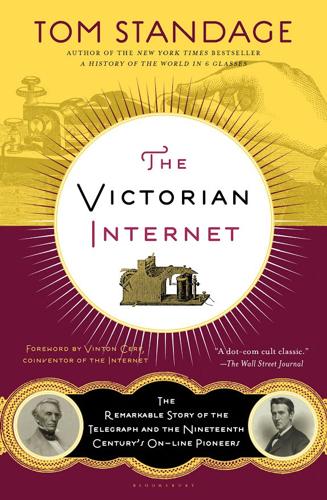
Victorian Internet
by
Tom Standage
Published 1 Jan 1998
Similarly, television was expected to improve education, reduce social isolation, and enhance democracy. Nuclear power was supposed to usher in an age of plenty where electricity would be "too cheap to meter." The optimistic claims now being made about the Internet are merely the most recent examples in a tradition of technological utopianism that goes back to the first transatlantic telegraph cables, 150 years ago. That the telegraph was so widely seen as a panacea is perhaps understandable. The fact that we are still making the same mistake today is less so. The irony is that even though it failed to live up to the Utopian claims made about it, the telegraph really did transform the world.
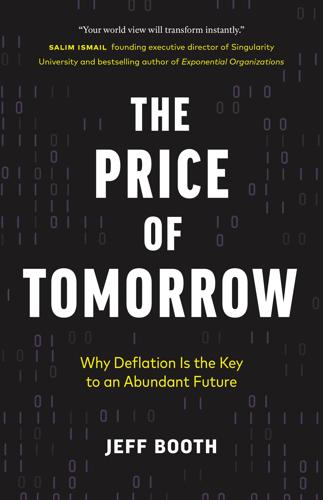
The Price of Tomorrow: Why Deflation Is the Key to an Abundant Future
by
Jeff Booth
Published 14 Jan 2020
Unfortunately, projected forward, that comes at the expense of the jobs of today. For the companies and leaders that win, that will be very lucrative—but when you add up what is happening across the technology landscape, it means fewer winners and more losing out unless there are massive new industries created. I am not a technology utopian: I don’t believe that technology will solve all of our ills. Nor am I a technology dystopian: I don’t believe that technology will ruin us. These are far too simple frameworks. The human condition cannot cope with either unilaterally. We would be unhappy and rebel in either case. In a world where there were no problems and technology did all of our bidding, we would quickly become bored and yearn for a problem to solve.
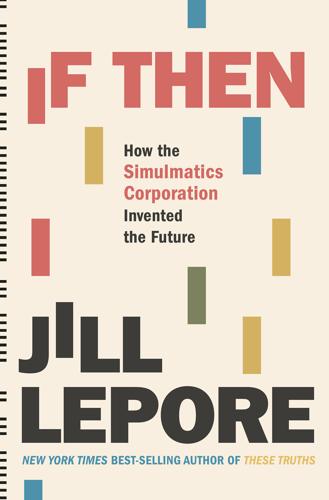
If Then: How Simulmatics Corporation Invented the Future
by
Jill Lepore
Published 14 Sep 2020
He left Simulmatics behind. He left Project Cambridge and Project ComCom behind. After 1969, he dedicated himself to writing about technologies of communication, and the communications revolution, and its implications for political life. He wrote the founding political theory of the Internet. He became, to technological utopians, a prophet. “The propagandists of the SDS have found it convenient to make the name Pool a codeword,” he once complained, exhausted. They’d done the same with the Simulmatics Corporation, made it a codeword, used it as a buzzword, a cudgel. In the spring of 1970, antiwar activists marched from Boston Common to the last known address of Simulmatics in Cambridge, 930 Massachusetts Avenue, a tiny little house halfway between Harvard and MIT.
…
Born in Illinois in 1938, Brand had graduated from Stanford in 1960 and, after serving in the army, had joined a movement known as the New Communalism, which was powerfully influenced by the eccentric visionary Buckminster Fuller, the same man who, for his friend Frank Safford, Patty Greenfield’s father, had built the geodesic dome, where the scientists of Simulmatics had met in 1961. Brand carried Fuller’s technological utopianism into his vision for what would one day become the Internet. In the 1960s, Fuller’s iconic geodesic domes—miniature Spaceship Earths—were favored structures on communes. Fuller was the great-nephew of the radical writer, transcendentalist, and social utopian Margaret Fuller, and his futurism borrowed from transcendentalism and attached to it a mid-twentieth-century vision of technological utopia, an imagined escape from the dour and deathly machines of the Cold War and into a new era in which machines would be designed, and put to use, for human fulfillment, a realization of bliss.
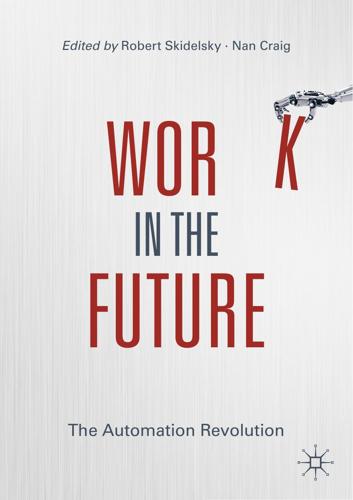
Work in the Future The Automation Revolution-Palgrave MacMillan (2019)
by
Robert Skidelsky Nan Craig
Published 15 Mar 2020
We also need to scrutinise the more generalised idea that technology increases human welfare by increasing the affordability and thus availability of consumption goods. This invokes all kinds of questions about the relationship between consumption and happiness, and the damage done to the planet by the constant pursuit of material wealth. Is technology determinative? Even technological utopians assume technological invasion takes place in a social and economic context, which determines what is invented, how quickly inventions are applied and so on. Historically, inventions did not necessarily become widely used; the history of technology, up until the early modern period, was patchy rather than progressive.

The Filter Bubble: What the Internet Is Hiding From You
by
Eli Pariser
Published 11 May 2011
It’s difficult both to systematize and to appeal to the fullness of human life—its unpredictability, emotionality, and surprising quirks—at the same time. David Gelernter, a Yale computer scientist, barely survived an encounter with an explosive package sent by the Unabomber; his eyesight and right hand are permanently damaged as a result. But Gelernter is hardly the technological utopian Ted Kaczinski believed him to be. “When you do something in the public sphere,” Gelernter told a reporter, “it behooves you to know something about what the public sphere is like. How did this country get this way? What was the history of the relationship between technology and the public?

Memory Machines: The Evolution of Hypertext
by
Belinda Barnet
Published 14 Jul 2013
Xanadu was (and still is) personal in the most libertarian, 1960s Californian sense. Links, Nelson maintains, furnish the individual with choices, with the right to choose. Nelson engaged in a rhetoric of liberation about hypertext well before George Landow discovered digital media; Nelson pioneered technological utopianism in the digital era. Unfortunately, these inspired presentations, filled with individualistic, egalitarian rhetoric didn’t help the engineering world take his design seriously. 80 Memory Machines This writing system, like the computer itself, is ‘FOR PERSONAL FREEDOM, AND AGAINST RESTRICTION AND COERCION’ (Nelson 1987, 2).
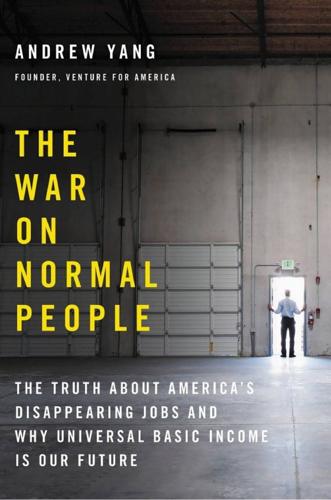
The War on Normal People: The Truth About America's Disappearing Jobs and Why Universal Basic Income Is Our Future
by
Andrew Yang
Published 2 Apr 2018
UBI eliminates the disincentive to work that most people find troubling about traditional welfare programs—if you work you could actually start saving and get ahead. With the growing threat of automation, the concept has gained renewed attention, with trials being run in Oakland, Canada, and Finland as well as in India and other parts of the developing world. Today, people tend to associate universal basic income with technology utopians. But a form of UBI almost became law in the United States in 1970 and 1971, passing the House of Representatives twice before stalling in the Senate. Versions of the idea have been championed by robust thinkers of every political persuasion for decades, including some of the most admired figures in American life.
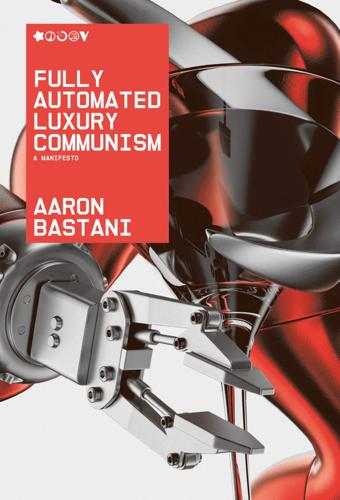
Fully Automated Luxury Communism
by
Aaron Bastani
Published 10 Jun 2019
The political ideologies of the past have often, to their detriment, focused on only one of these at the expense of others: many contemporary anarchists tend to hold social relations as pre-eminent – as if they were distinct from ideas, daily life and work. Leninism, meanwhile, views production, and by extension working-class subjectivity, as critical while ignoring a world whose ideas and technologies are hugely changed from those of the early twentieth century. Elsewhere technological utopians, such as the Californian ideologues of Silicon Valley, view technology as the principal means by which to carve a better future, almost detached from politics, society and history. Finally, certain environmentalists have favoured relations to nature and how we view ourselves in the cosmos, particularly regarding other forms of life, as the primary force that guides their politics.

How the Railways Will Fix the Future: Rediscovering the Essential Brilliance of the Iron Road
by
Gareth Dennis
Published 12 Nov 2024
I have, as many of you will realise, navigated us to the world’s only ostensibly functional and now former hyperloop test track. Because it is here that we can stand back, scratch our heads a bit and get a handle on why the railways serve as a powerful lens through which to view technologism. Technologism, or technology utopianism, can be characterised as an unerring belief in the power of technology to advance humanity, and it’s nothing new. Its current iteration has been termed the “Californian ideology” and can be traced back to the counterculture of the 1960s, which was agnostic at best about the role of the state.
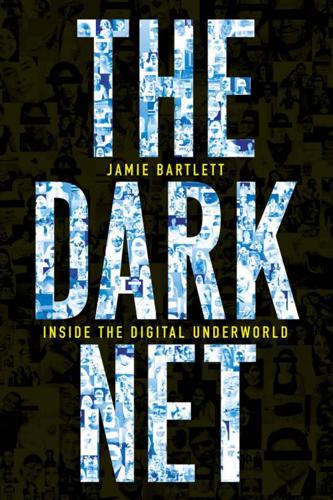
The Dark Net
by
Jamie Bartlett
Published 20 Aug 2014
(eds), Transhumanist Reader An excellent overview of some of the more technical and philosophical aspects of the transhumanist movement, edited by two leading exponents. It includes a chapter by Anders Sandberg on mind uploading. Naughton, J., From Gutenberg to Zuckerberg: What you Really Need to Know About the Internet. Segal, H., Technological Utopianism in American Culture. Zerzan, J., Future Primitive and Future Primitive Revisited. A handy introduction into the anarcho-primitivist philosophy, and Zerzan’s most well-known written work. Acknowledgements First and foremost, I’d like to thank all those people who have let me into their world: Paul the extreme but affable nationalist, Zack, ‘Old Holborn’, Michael, Vex, Blath and Auryn, Amir, Pablo, Timothy May, Smári, Zoltan and Zerzan, Charlie Flowers, Tommy Robinson, Hel Gower, the anonymous EDL social media admins, @Norsefired, Jimmy Swales, Alexander Jones, Queen Lareefer, Jessica and Elle St Claire, the strange dancer in the Utherverse brothel, Jessi, the owners of the Pink Pussy Gentleman’s Club, Al the forum admin, the individuals who comprised the composite character Amelia in ‘The Werther Effect’, Gerard and Dr Anders Sandberg.
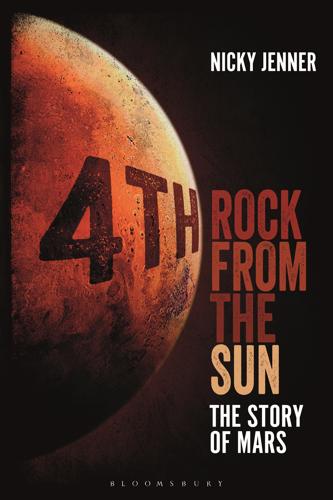
4th Rock From the Sun: The Story of Mars
by
Nicky Jenner
Published 5 Apr 2017
At the start of the twentieth century, the USSR was beginning to develop a near-obsession with spaceflight. Some members of society began weaving together a few threads of thought into one overarching philosophy – namely that of ‘cosmism’ (the idea that humans should travel to and colonise the cosmos, and that humans had an intrinsic relationship with the Universe) and that of ‘technological utopianism’ (the belief that rapid industrialisation and scientific advancement would ultimately create a utopian society). This sparked a countrywide lust for interplanetary flight, a drive to visit the stars, a strong public interest in space and manned spaceflight – in a way, a sort of space activism movement.
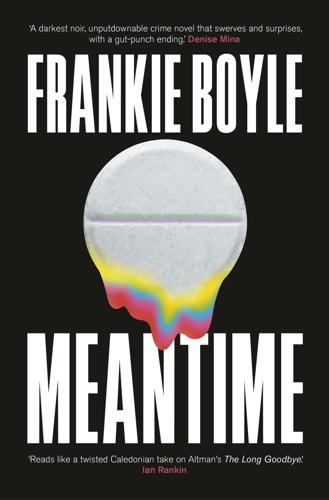
Meantime: The Brilliant 'Unputdownable Crime Novel' From Frankie Boyle
by
Frankie Boyle
Published 20 Jul 2022
I always liked it, but maybe it’s a comfort thing. You don’t have to wonder why you always feel like something is missing – it literally is.’ She let out a long slow breath. ‘I think a lot of us manage to come to terms with death. But we really struggle to process our mortality as a species, and we invest in these ideas – technological utopianism – as a kind of bargaining.’ As we swung onto Fenwick Road, Jane nodded at the view out of the window on her side. Through the grubby glass, hoisted high above the elderly shoppers, a gigantic Love Island contestant glowered down at us in what may have been an advert for glasses. ‘It’s definitely a simulation, just not a computer one.

Realizing Tomorrow: The Path to Private Spaceflight
by
Chris Dubbs
,
Emeline Paat-dahlstrom
and
Charles D. Walker
Published 1 Jun 2011
Udall was a liberal Democrat, but the standard line about L5 members was that they were 5 percent Democrats, 5 percent Republicans, and 9o percent anarchists. Early L5 members skewed toward the idealistic, but the group would eventually attract such divergent members as arch-conservative Senator Barry Goldwater and psychedelic drug advocate Timothy Leary. Whether they were technological utopians looking to build a commune in the sky or pragmatic engineers, they all found a banner in L5. However, because L5 early on attracted such rabid let's-go-to-space-now members who carried something of a science fiction air, O'Neill kept a careful distance between himself and the group. Operated largely by the Hensons and an odd assortment of volunteers, or "groupies," as Keith Henson termed them, L5 quickly achieved its goal of being a clearinghouse for space settlement issues and activities.

Dawn of the New Everything: Encounters With Reality and Virtual Reality
by
Jaron Lanier
Published 21 Nov 2017
If we keep on the path we’re on, we’ll eventually destroy ourselves. The more technologically capable we become in the future, the more ways we’ll have available to put an end to the human story. The numbers game is against us.6 I often found myself sandwiched in-between technology skeptics and technological utopians. I had to frequently restate that I was unambiguously pro–technological progress. The further back you go in human history, the worse things were. Until quite recently, people had as many children as they could because it was expected that some would not live to see adulthood. Disgusting disease was everywhere, as was hunger, and most people were illiterate and ignorant.
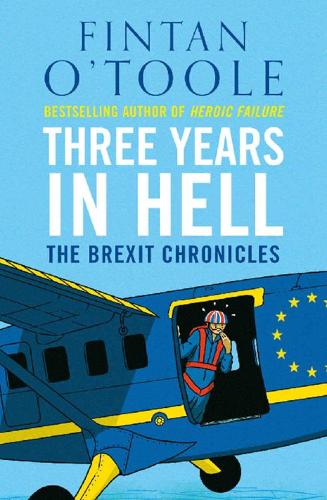
Three Years in Hell: The Brexit Chronicles
by
Fintan O'Toole
Published 5 Mar 2020
But it then goes on to suggest, in effect, that these utterly unacceptable things will not happen only if the EU gives the UK all the benefits of the customs union and the single market with none of the costs or restrictions. The one really bold move in the paper is its rejection of the technological utopianism of the more enthusiastic Brexiteers, especially in the Democratic Unionist Party. The commitment to ‘avoid any physical border infrastructure’ means that there can be no CCTV cameras or registration-plate recognition systems. Magical machines are not going to take the place of human customs officers.
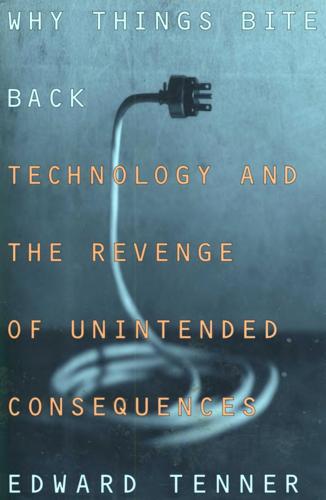
Why Things Bite Back: Technology and the Revenge of Unintended Consequences
by
Edward Tenner
Published 1 Sep 1997
Charles Piller, - The Fail Safe Society: Community Defiance and the End of American Technological Optimism (New York: Basic Books, 1991), and Chellis Glendinning, When Technology Wounds: The Human Consequences of Progress ( - New York: Morrow, 1990), are able defenses of technological skepticism. Of many excellent books in technology studies, Langdon Winner, The Whale and the Reactor: A Search for Limits in an Age of High Technology (Chicago: University of Chicago Press, 1986), Howard P. Segal, Technological Utopianism in American Culture (Chicago: University of Chicago Press, 1985), and Howard P. Segal, Future Imperfect: The Mixed Blessings of Technology in America (Amherst: University of Massachusetts Press, 1994), are worth special mention. Of books by scientists and engineers on risk and failure, two of the best are Henry Petroski, To Engineer Is Human: The Role of Failure in Successful Design (New York: St.
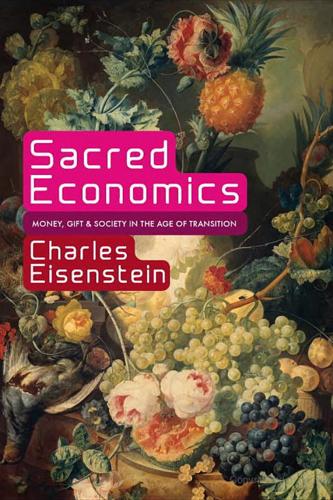
Sacred Economics: Money, Gift, and Society in the Age of Transition
by
Charles Eisenstein
Published 11 Jul 2011
I do not believe that technology will save humanity. Reading my work, many people have asked me if I know about the Venus Project, a movement that draws from the same basic understanding of the problem with today’s money system. While I resonate with its spirit, I find that the Venus Project indulges in the same technological utopianism that has filled us with starry-eyed hope since the age of coal. But in fact, as I described in Chapter 2, abundance has always been available to us. It is our perceptions, and not our means, that engender scarcity. Let me put it poetically. At the end of Chapter 11 I wrote, A vein runs through spiritual tradition that says that we, too, give back to the sun; indeed that the sun only continues to shine through our gratitude.
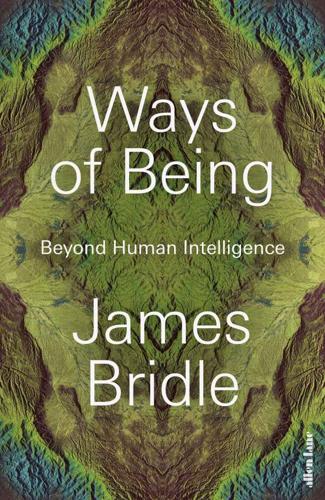
Ways of Being: Beyond Human Intelligence
by
James Bridle
Published 6 Apr 2022
Even the picture included here of the lone, bearded technician sitting, Atlas-like, atop the Chesapeake Bay Model resembles nothing so much as the dream-like architectural images produced by the radical Italian collective Superstudio in the same period. In Superstudio’s visions of a cybernetic future, humankind is released into a state of happy play among landscapes which combine megalithic building projects, artefacts of high technology, utopian communities and natural formations. In Superstudio’s 1972 film Supersurface – An Alternative Model for Life on the Earth, the collective called for a new alignment between design and the environment, one in which human invention and the natural world complement, rather than contradict, each other.

Behemoth: A History of the Factory and the Making of the Modern World
by
Joshua B. Freeman
Published 27 Feb 2018
Tony Judt, Postwar: A History of Europe Since 1945 (New York: Penguin, 2005), 129–39, 165–96; Åman, Architecture and Ideology, 12, 28–30, 147; Mark Pittaway, “Creating and Domesticating Hungary’s Socialist Industrial Landscape: From Dunapentele to Sztálinváros, 1950–1958,” Historical Archaeology 39 (3) (2005), 76, 79–80. 37.Romania never had a “first socialist city” of the sort found elsewhere in Eastern Europe. Åman, Architecture and Ideology, 77 (“cult of steel”), 81, 147, 157–61; Ulf Brunnbauer, “‘The Town of the Youth’: Dimitrovgrad and Bulgarian Socialism,” Ethnologica Balkanica 9 (2005), 92–95. See also Paul R. Josephson, Would Trotsky Wear a Bluetooth? Technological Utopianism under Socialism, 1917–1989 (Baltimore, MD: Johns Hopkins University Press, 2012), 65–119. 38.Åman, Architecture and Ideology, esp. 33–39, 102–03, 158, 162; Pittaway, “Hungary’s Socialist Industrial Landscape,” 78–81, 85–87; Brunnbauer, “‘The Town of the Youth,’” 94, 98–111; Katherine Lebow, Unfinished Utopia: Nowa Huta, Stalinism, and Polish Society, 1949–56 (Ithaca, NY: Cornell University Press, 2013), 46, 52–56. 39.Paweł Jagło, “Steelworks,” in Nowa Huta 1949+ [English version] (Kraków: Muzeum Historyczne Miasta Krakowa, 2013), quote on 18; Lebow, Unfinished Utopia, 19–26, 36–40, 69; Alison Stenning, “Placing (Post-)Socialism: The Making and Remaking of Nowa Huta, Poland,” European Urban and Regional Studies 7 (Apr. 2000), 100–01; Boleslaw Janus, “Labor’s Paradise: Family, Work, and Home in Nowa Huta, Poland, 1950–1960,” East European Quarterly XXXIII (4) (Jan. 2000), 469; H.

Alone Together
by
Sherry Turkle
Published 11 Jan 2011
As Audrey put it, a Facebook profile is “an avatar of me.” And when you play Ringo Starr on a simulation of the Beatles, your avatar may feel like a second self. In simulation culture we become cyborg, and it can be hard to return to anything less. CHAPTER 11 Reduction and betrayal In the mid-1990s, computer scientist and technological utopian Raymond Kurzweil created an avatar, Ramona, which he put into a virtual world. At that time, most players of online role-playing games had text-based avatars, complete with long descriptions of their histories and relationships, as well as the clothes they were wearing. Kurzweil looked forward to a new era.
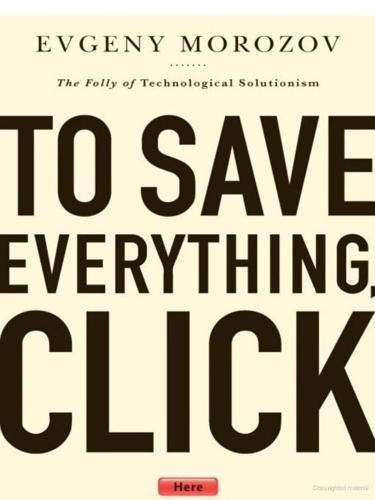
To Save Everything, Click Here: The Folly of Technological Solutionism
by
Evgeny Morozov
Published 15 Nov 2013
It’s as if the solutionists have never lived a life of their own but learned everything they know from books—and those books weren’t novels but manuals for refrigerators, vacuum cleaners, and washing machines. Thomas Molnar, a conservative philosopher who, for his smart and vehement critique of technological utopianism written in the early 1960s, also deserves a place on the antisolutionist pantheon, put it really well when he complained that “when the utopian writers deal with work, health, leisure, life expectancy, war, crimes, culture, administration, finance, judges and so on, it is as if their words were uttered by an automaton with no conception of real life.

The Wealth of Networks: How Social Production Transforms Markets and Freedom
by
Yochai Benkler
Published 14 May 2006
The technophilic response is reminiscent of claims made in the past for electricity, for radio, or for telegraph, expressing what James Carey described as "the mythos of the electrical sublime." The question this part of the book explores is whether this claim, given the experience of the past decade, can be sustained on careful analysis, or whether it is yet another instance of a long line of technological utopianism. The fact that earlier utopias were overly optimistic does not mean that these previous technologies did not in fact alter the conditions of life--material, social, and intellectual. They did, but they did so differently in different societies, and in ways that diverged from the social utopias attached to them.
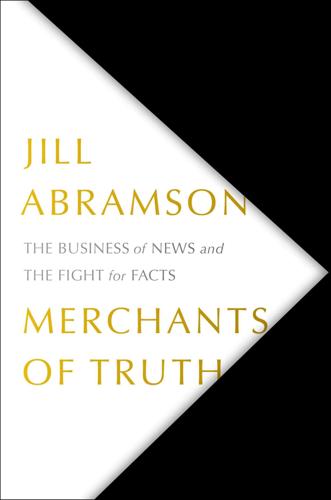
Merchants of Truth: The Business of News and the Fight for Facts
by
Jill Abramson
Published 5 Feb 2019
The reason is that you only have your own experience when you drive. If you’ve never had a ball roll out into the street, or driven on an icy patch, you don’t know how to do that.” That was the limitation on human expertise: it was necessarily confined to the lived experience of an individual. It was a limitation that technological utopians like Peretti promised the hive mind would render a thing of the past. “If you’re a Google car,” he said, “you have the experience of every other Google car—any car that drives on an icy patch sends that knowledge and experience to the hub, and every car gets it and benefits from it.” In the audience Smith, his editor in chief, was laughing.